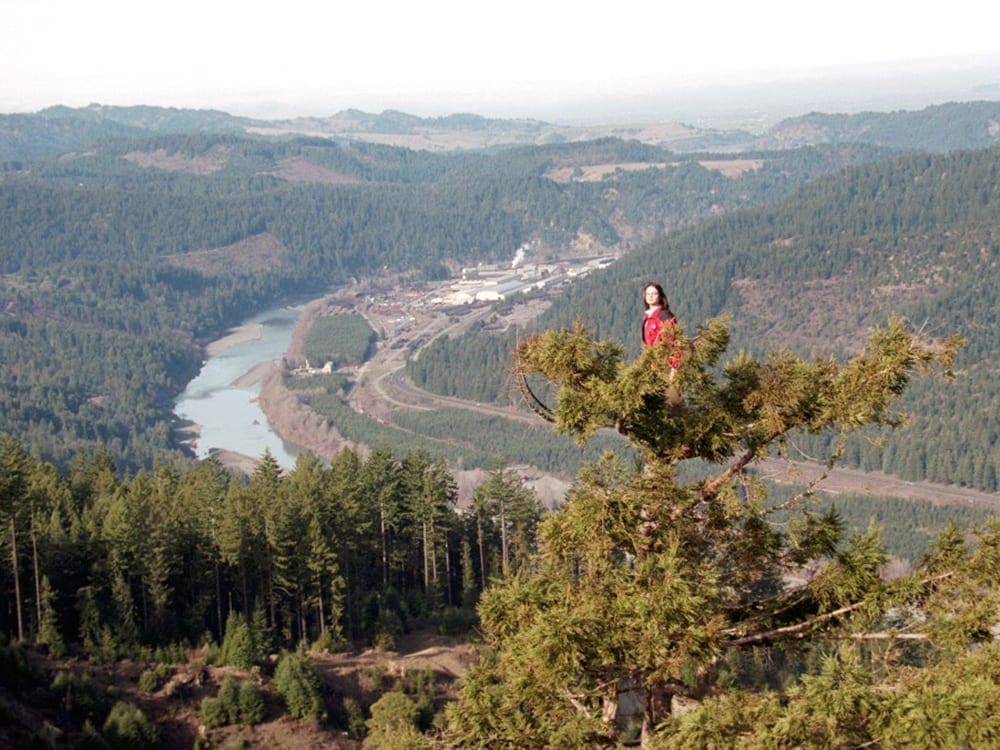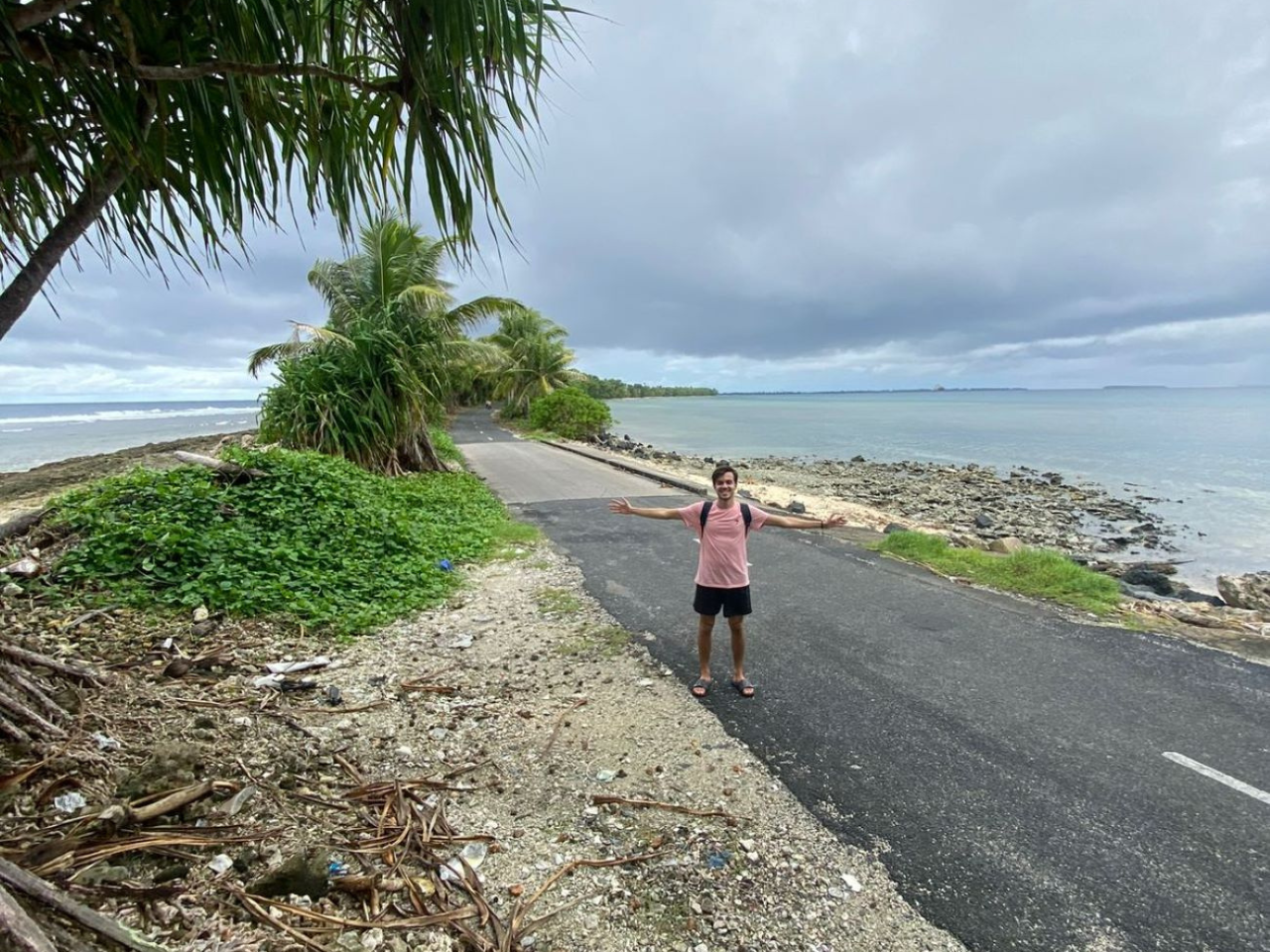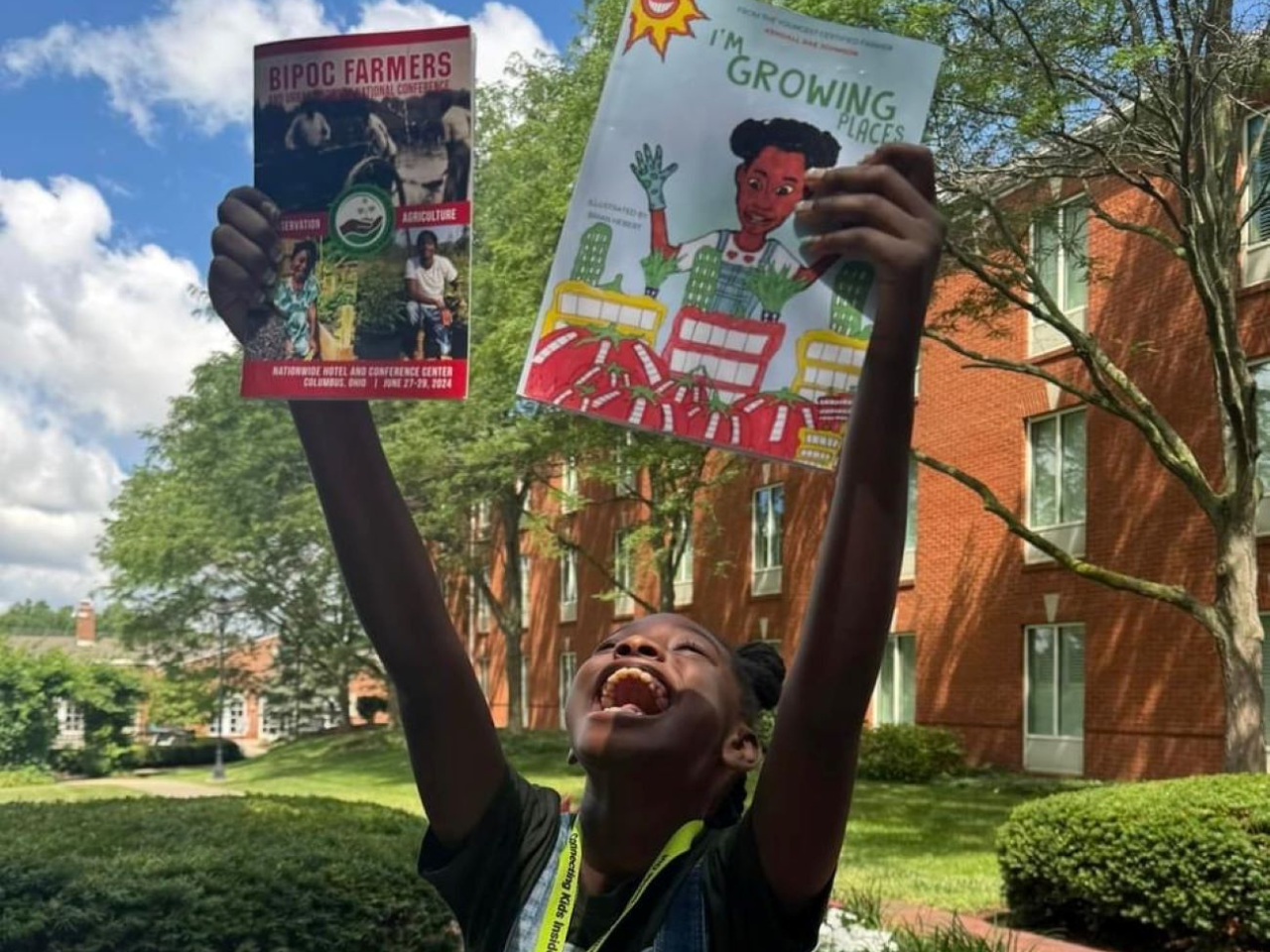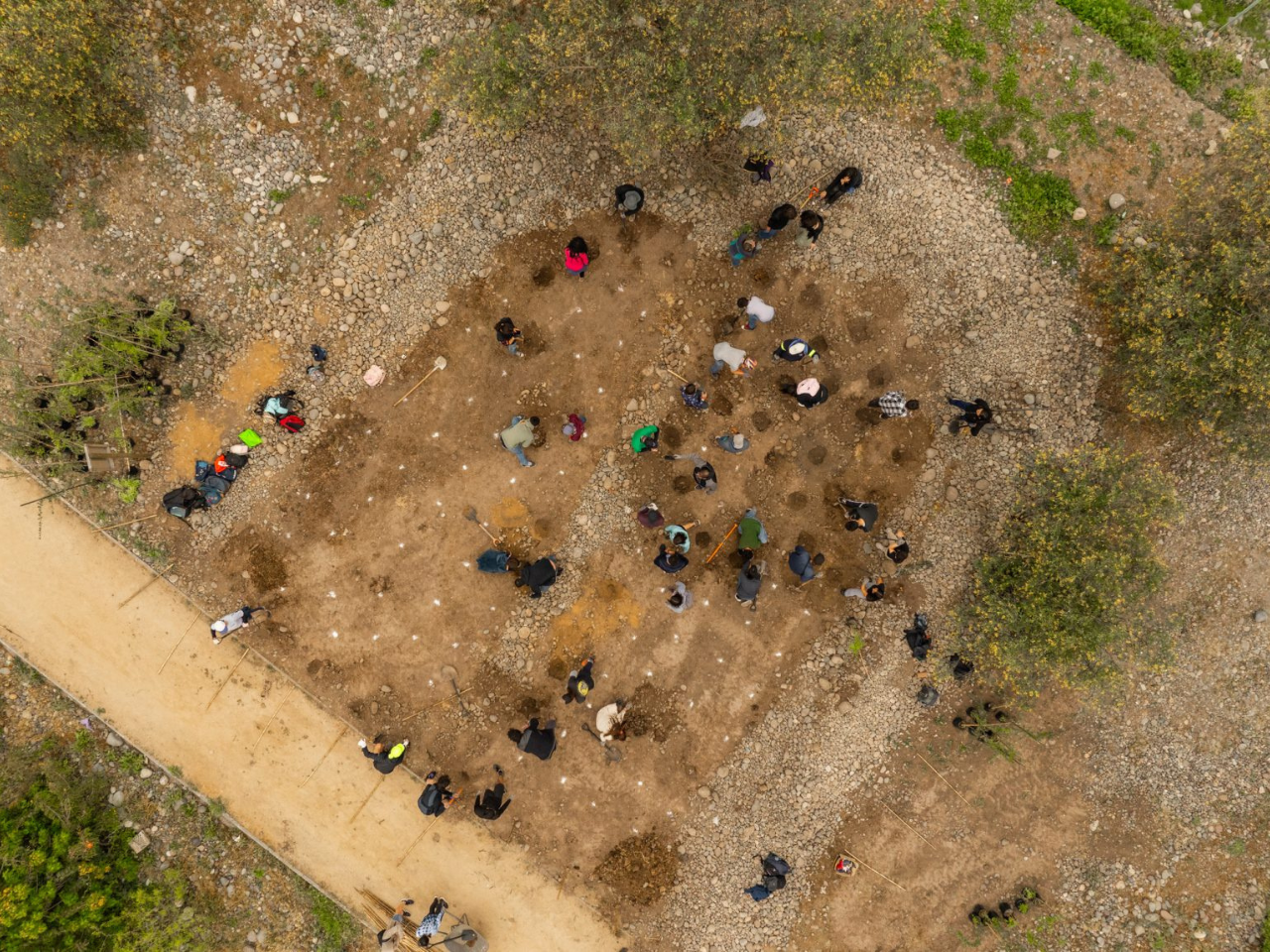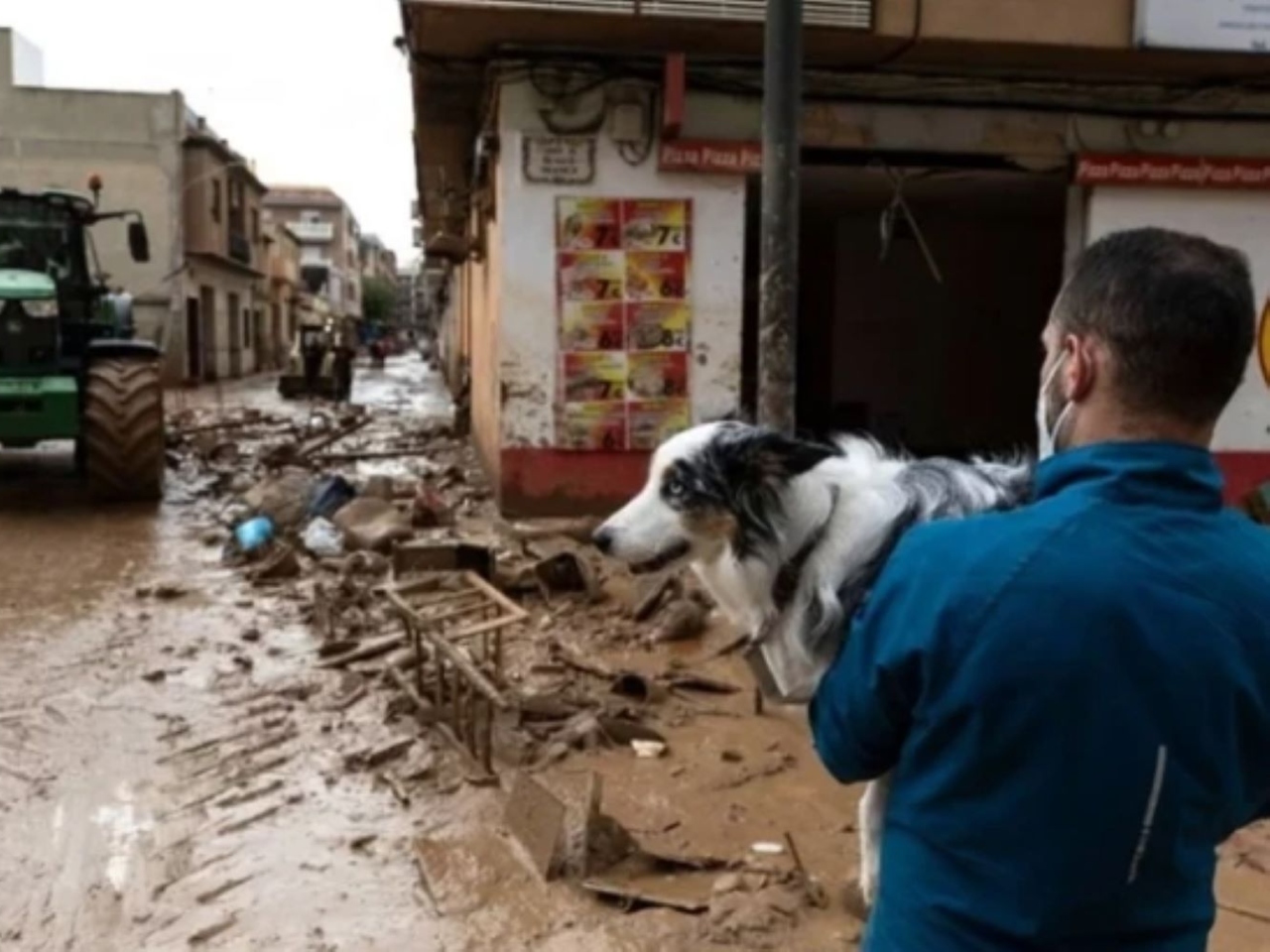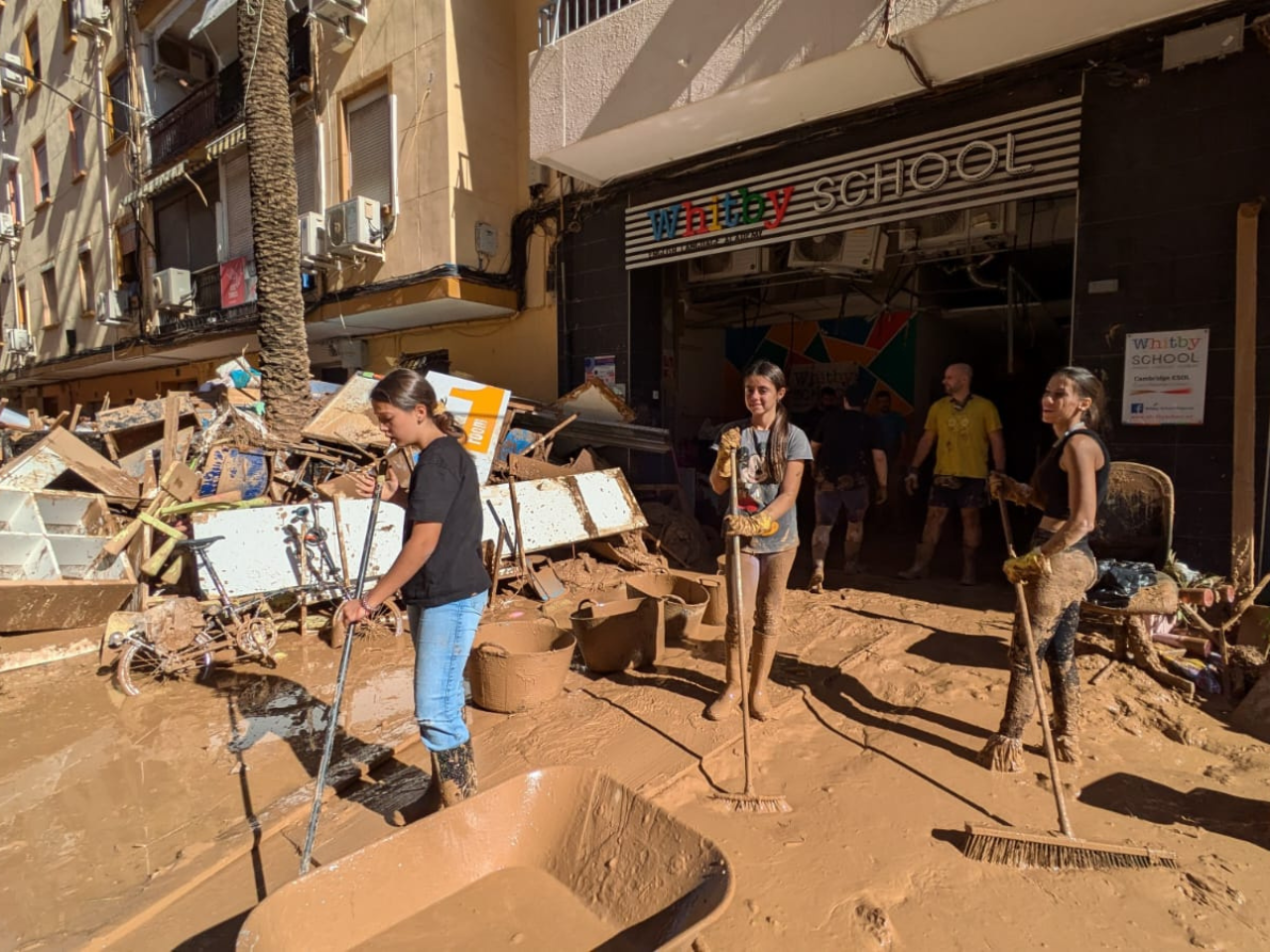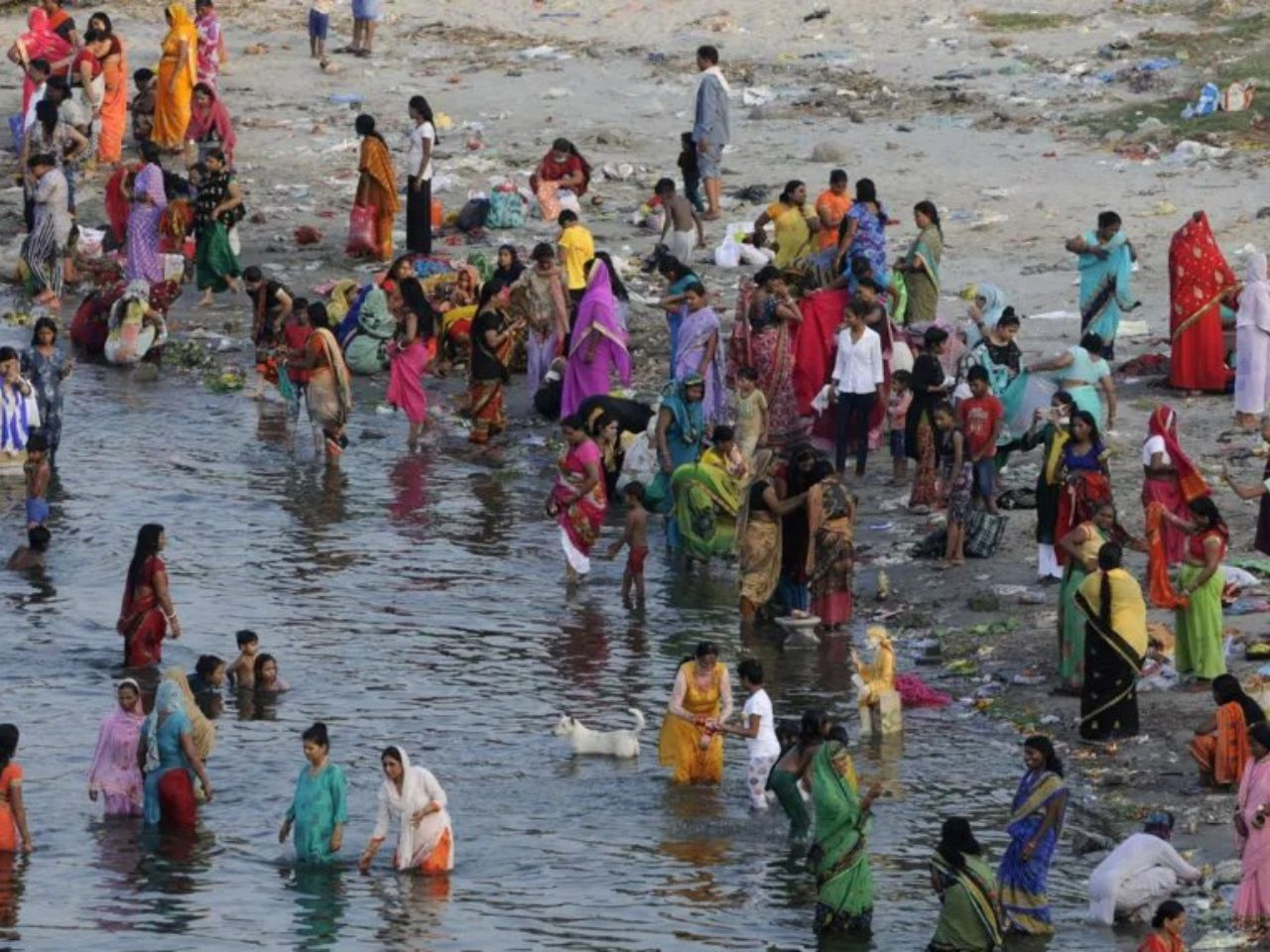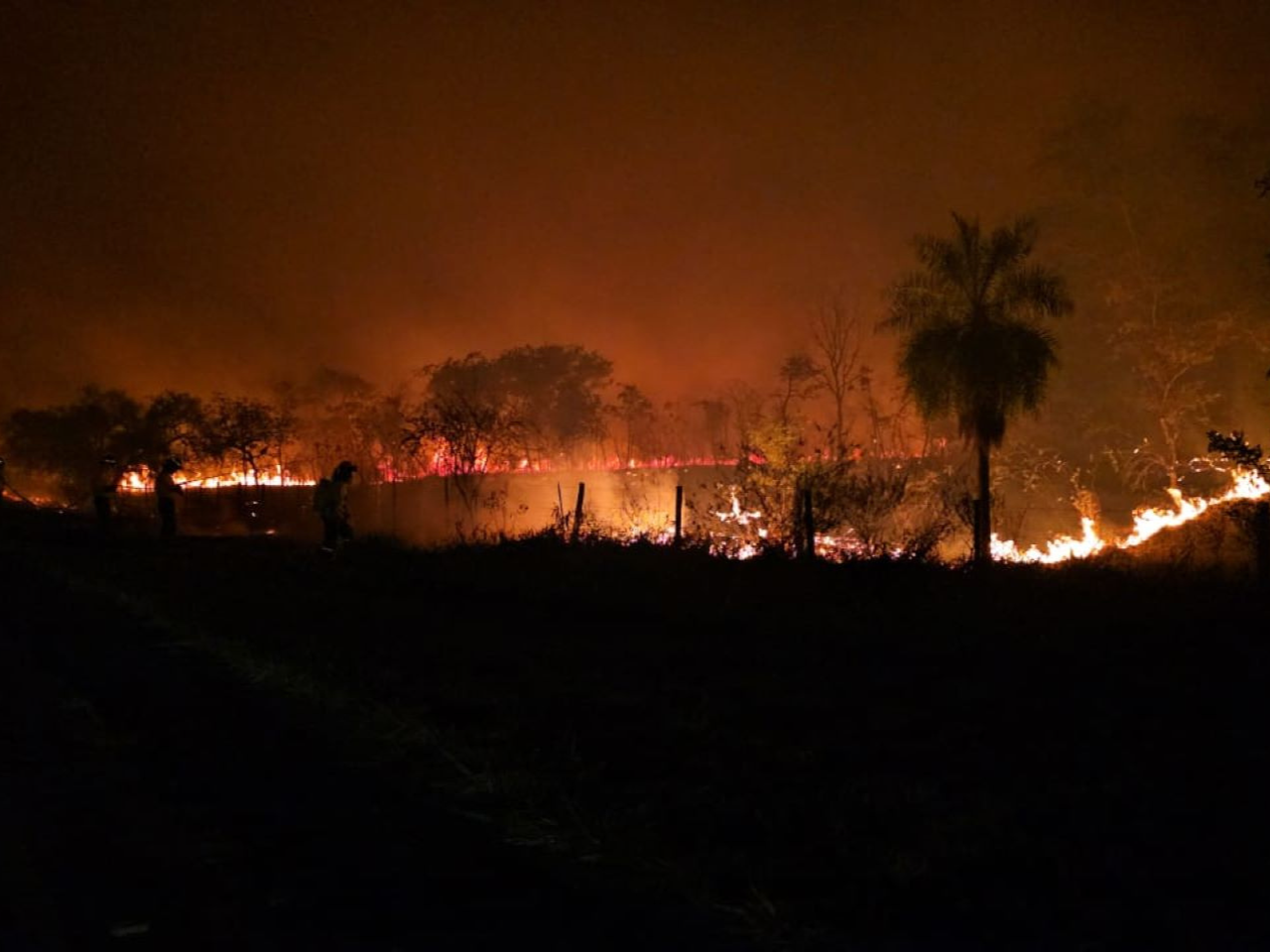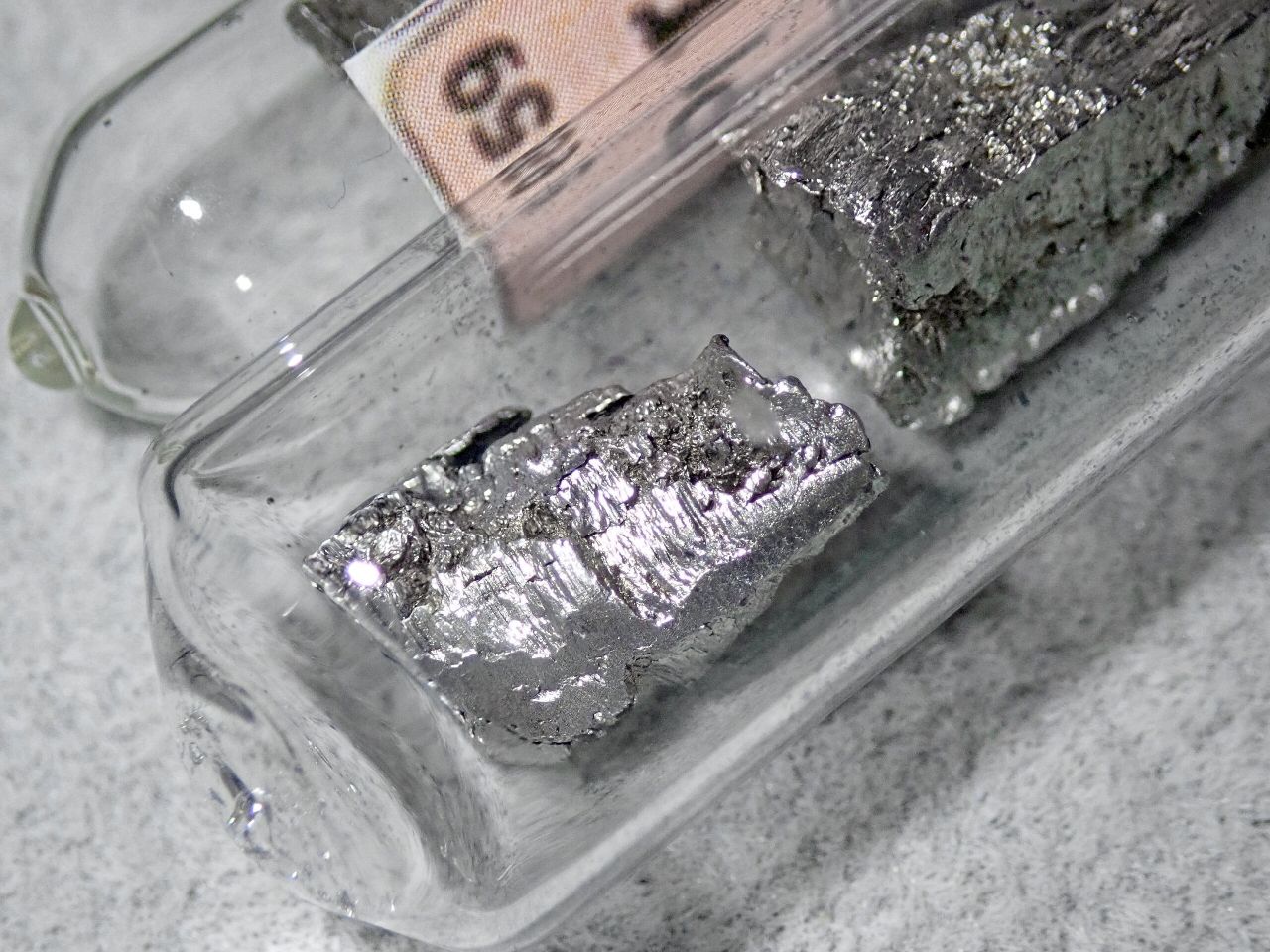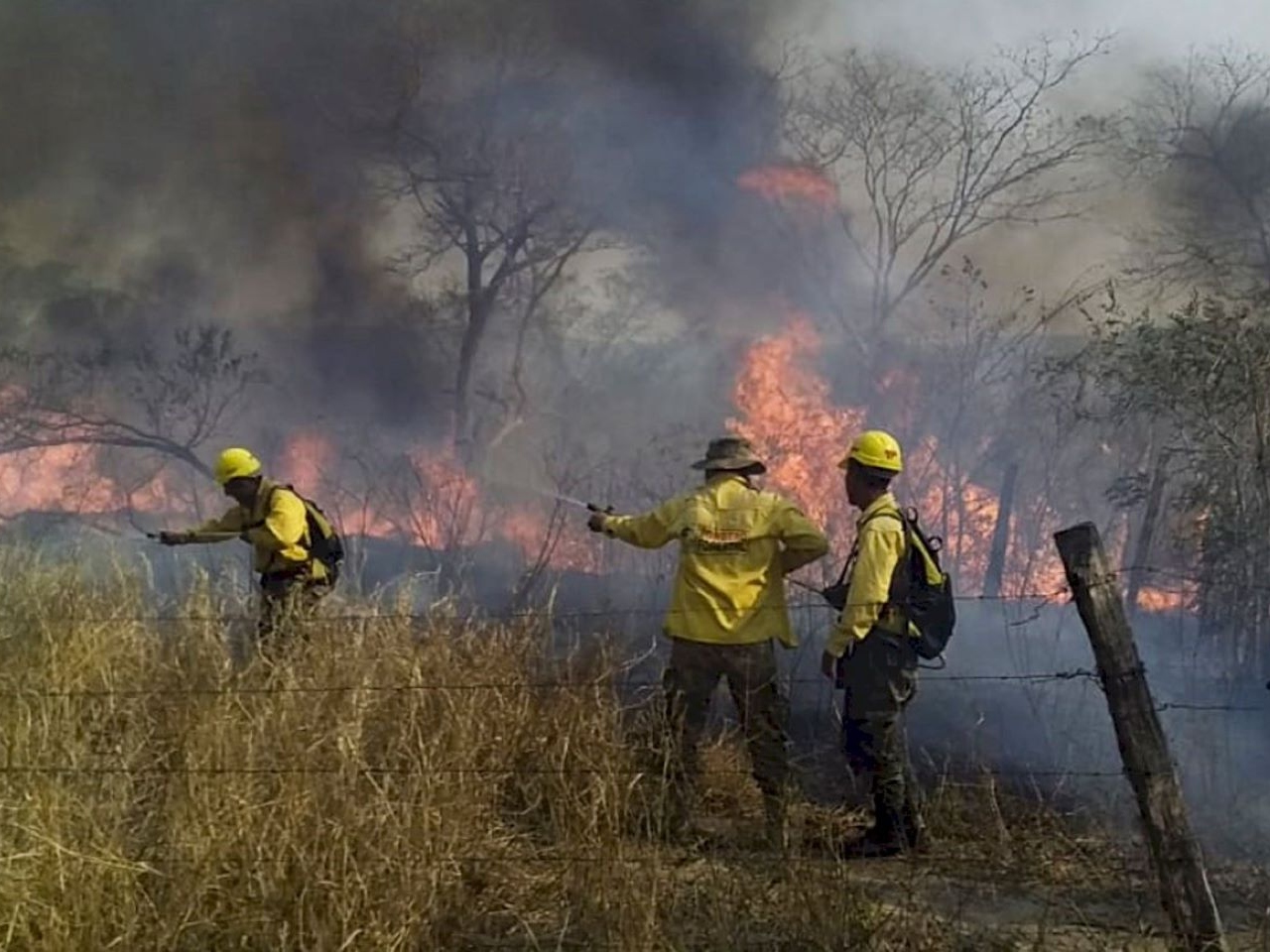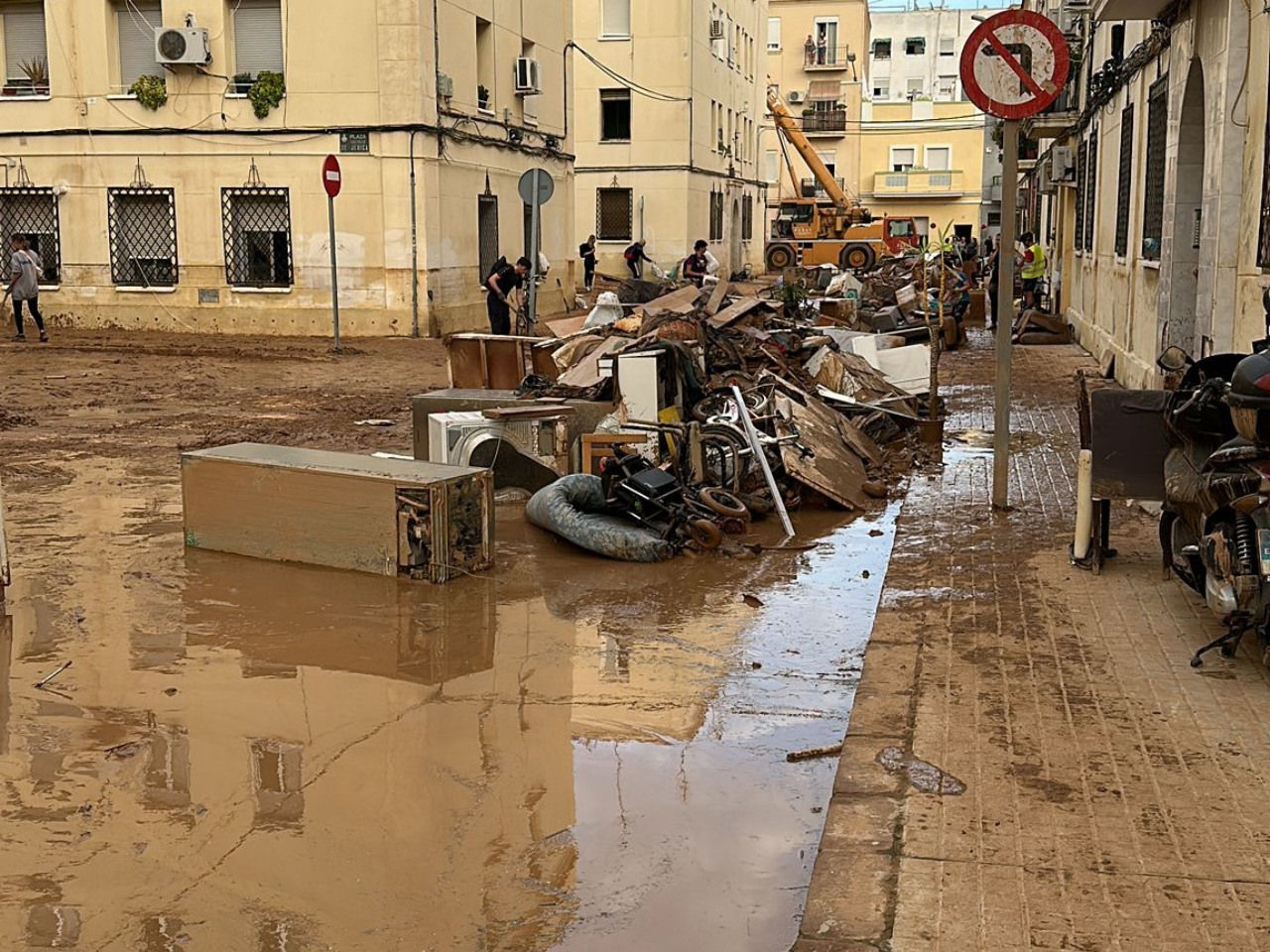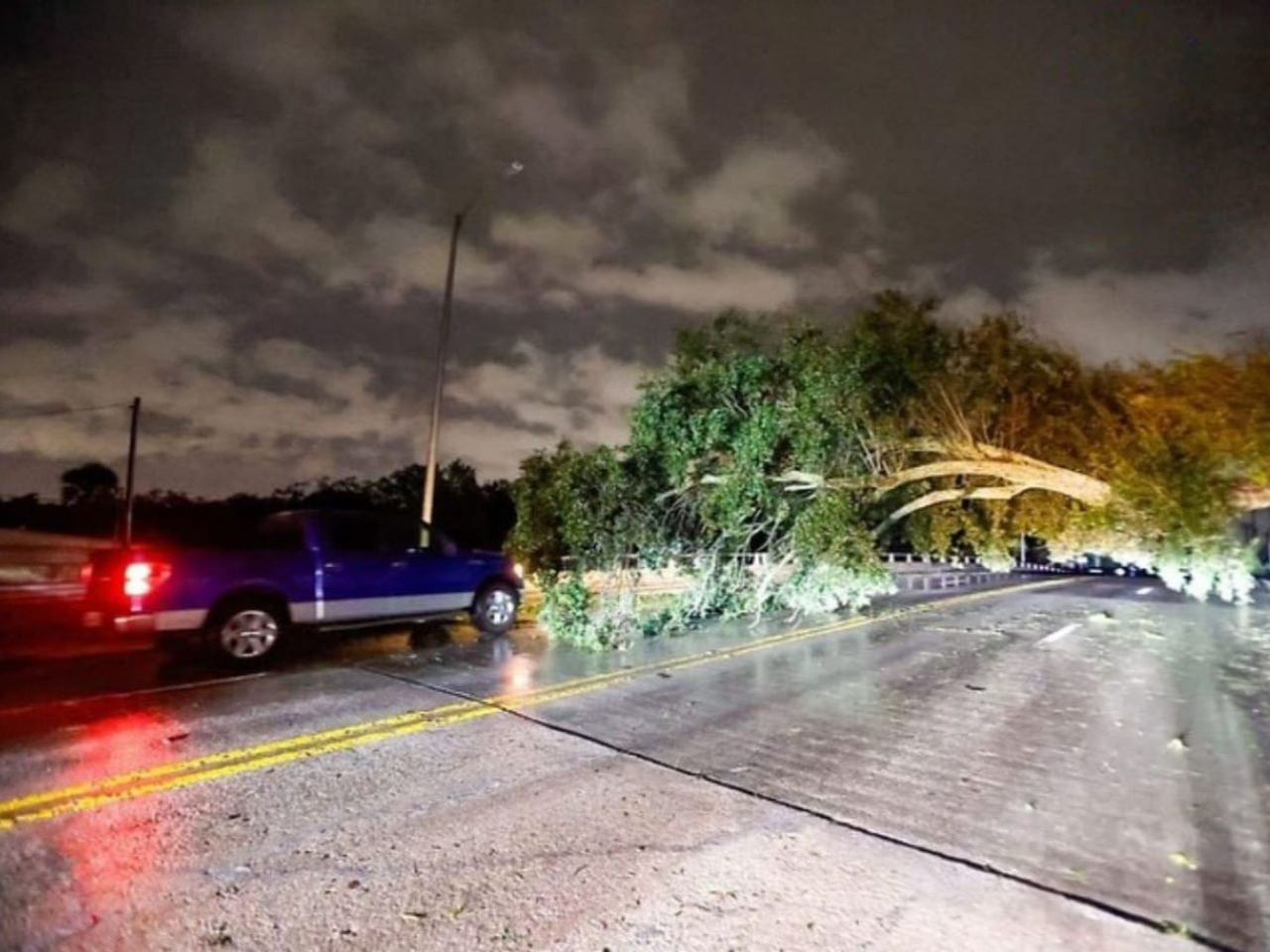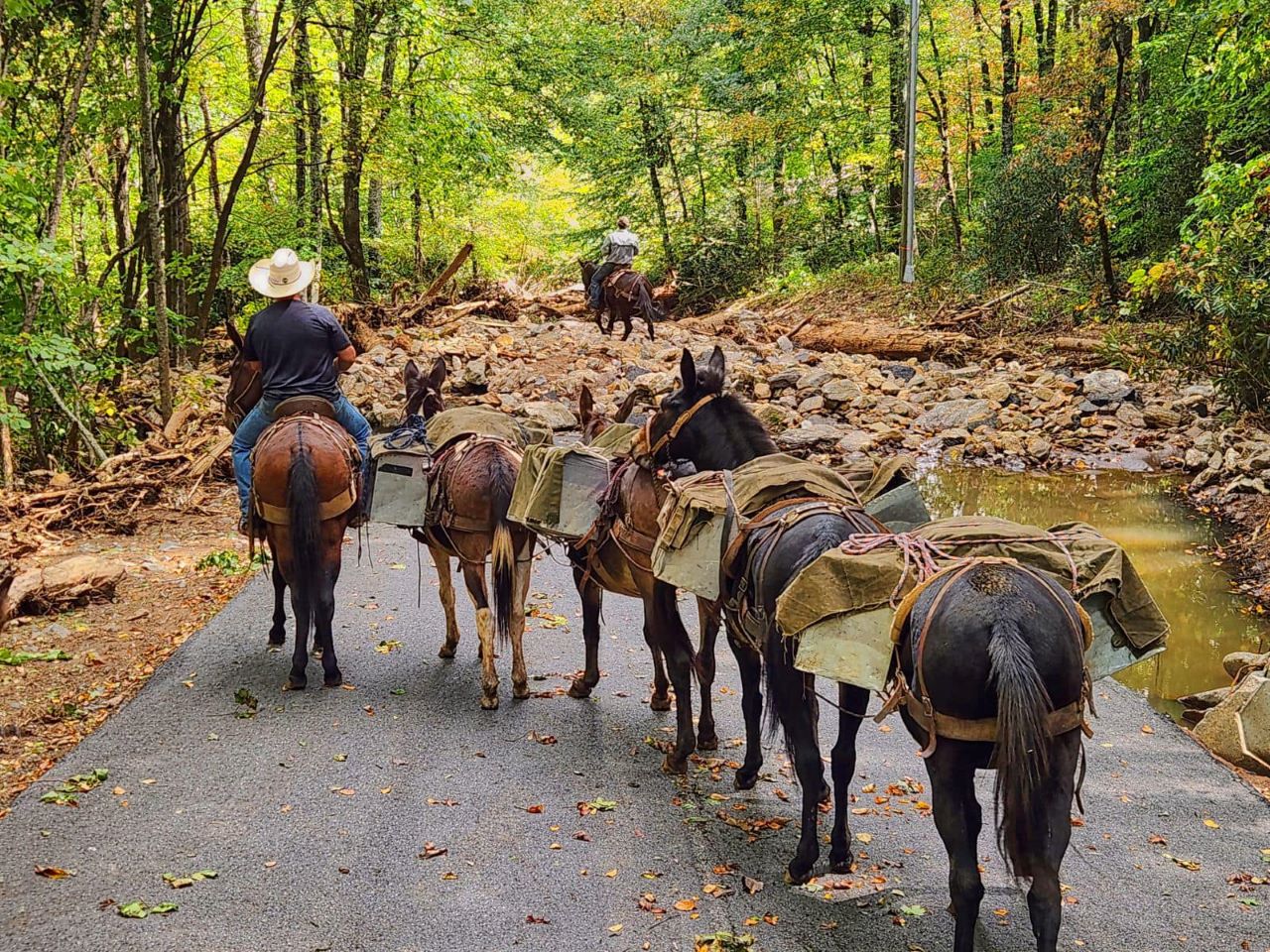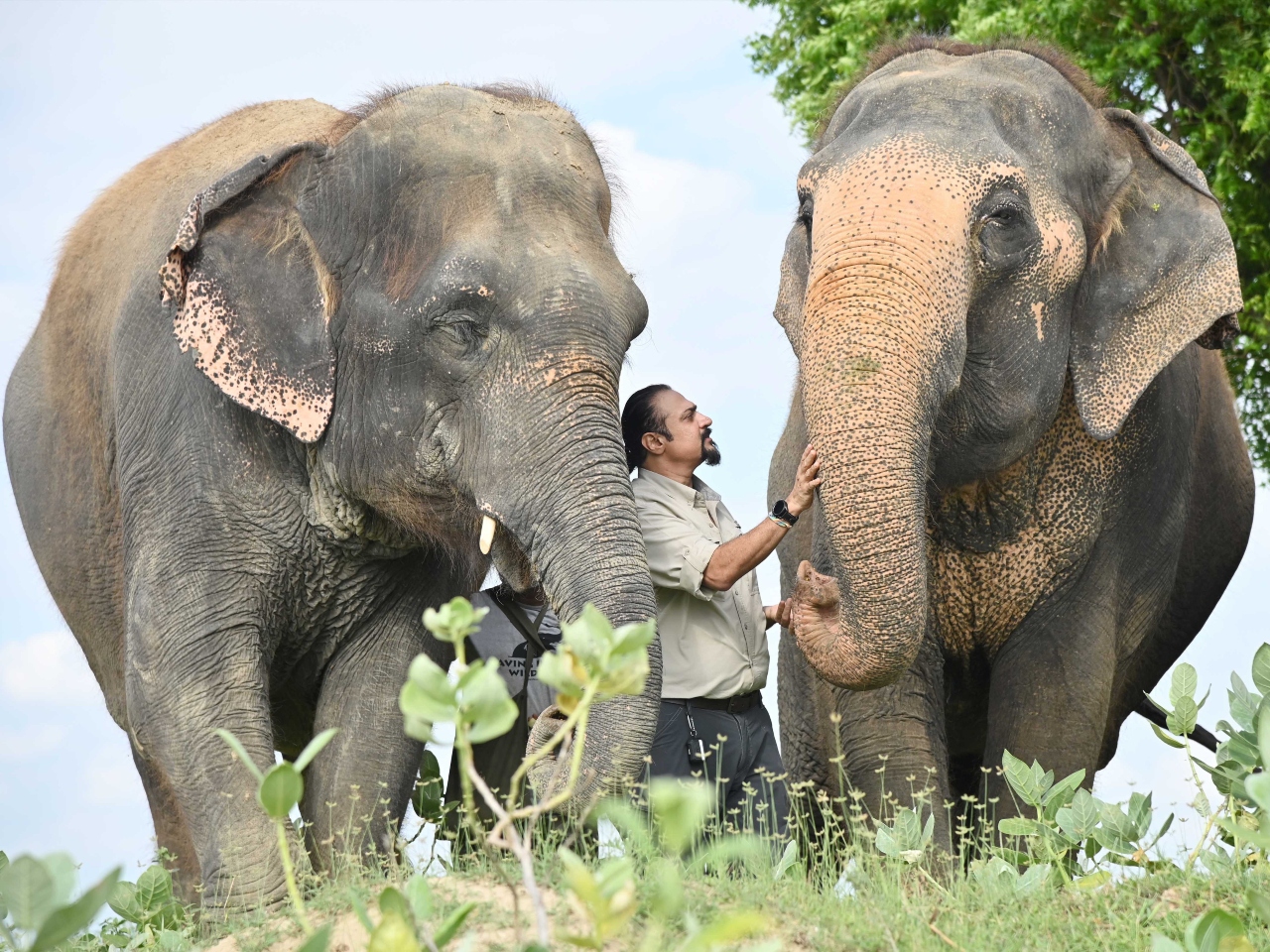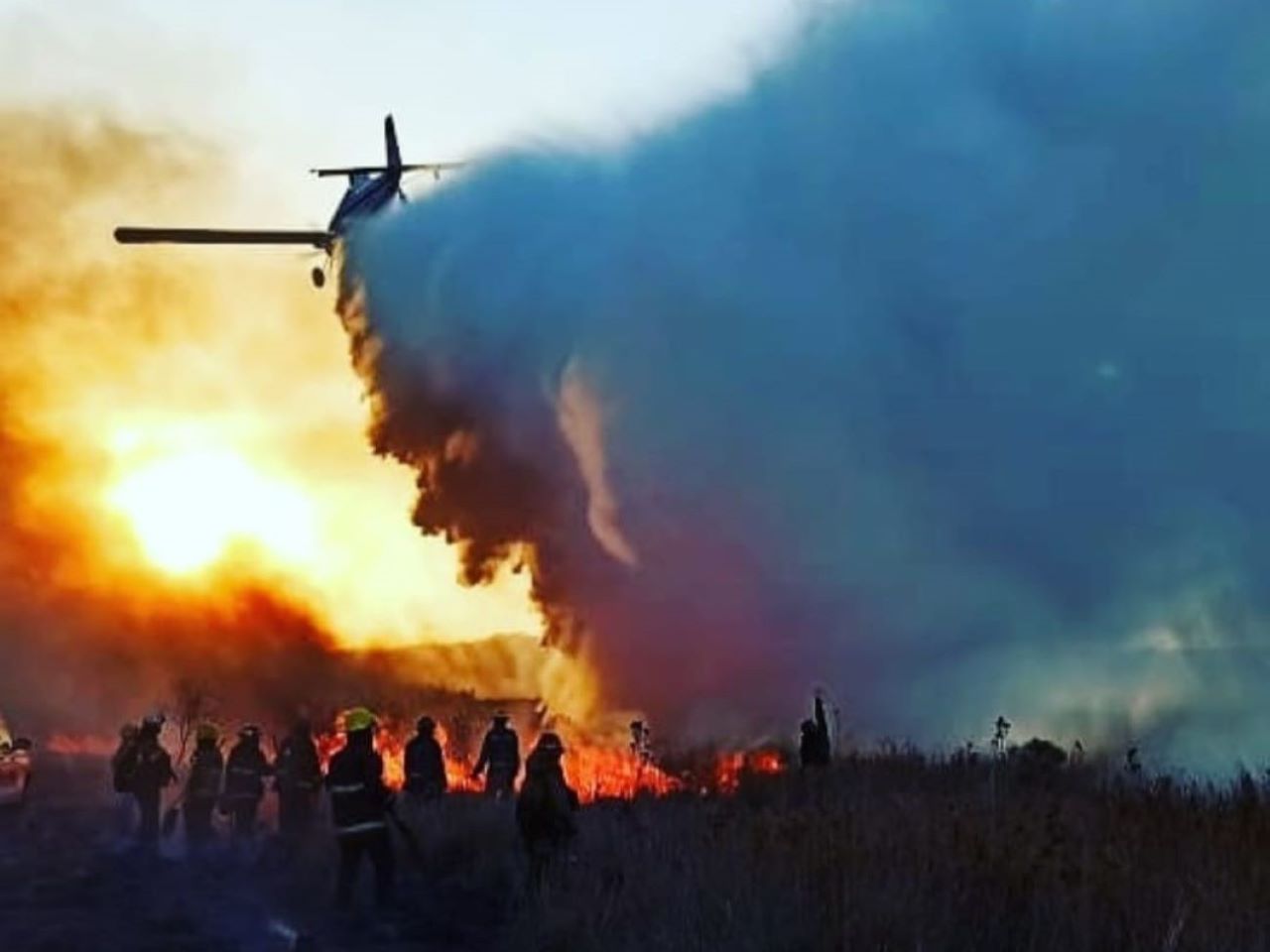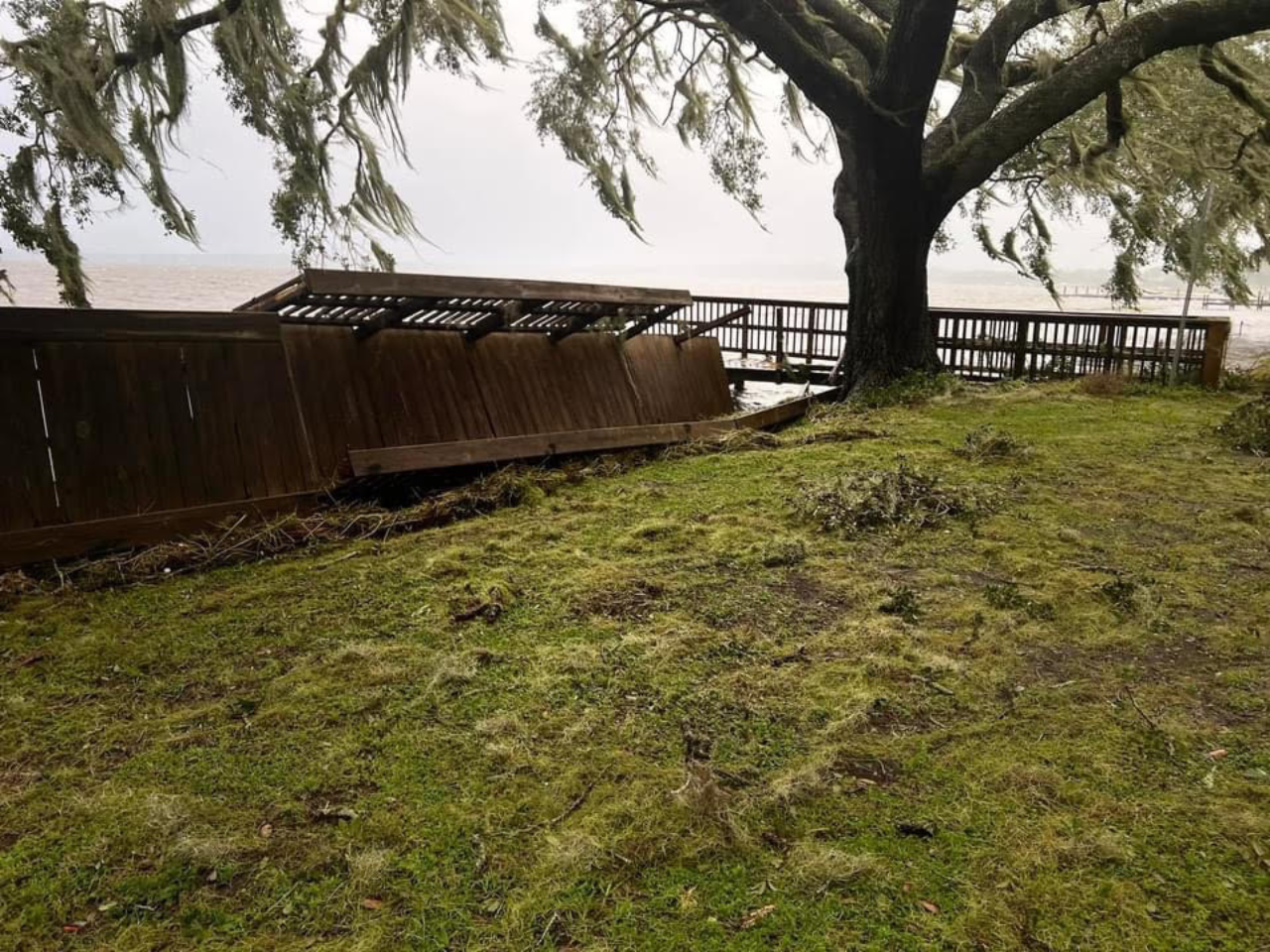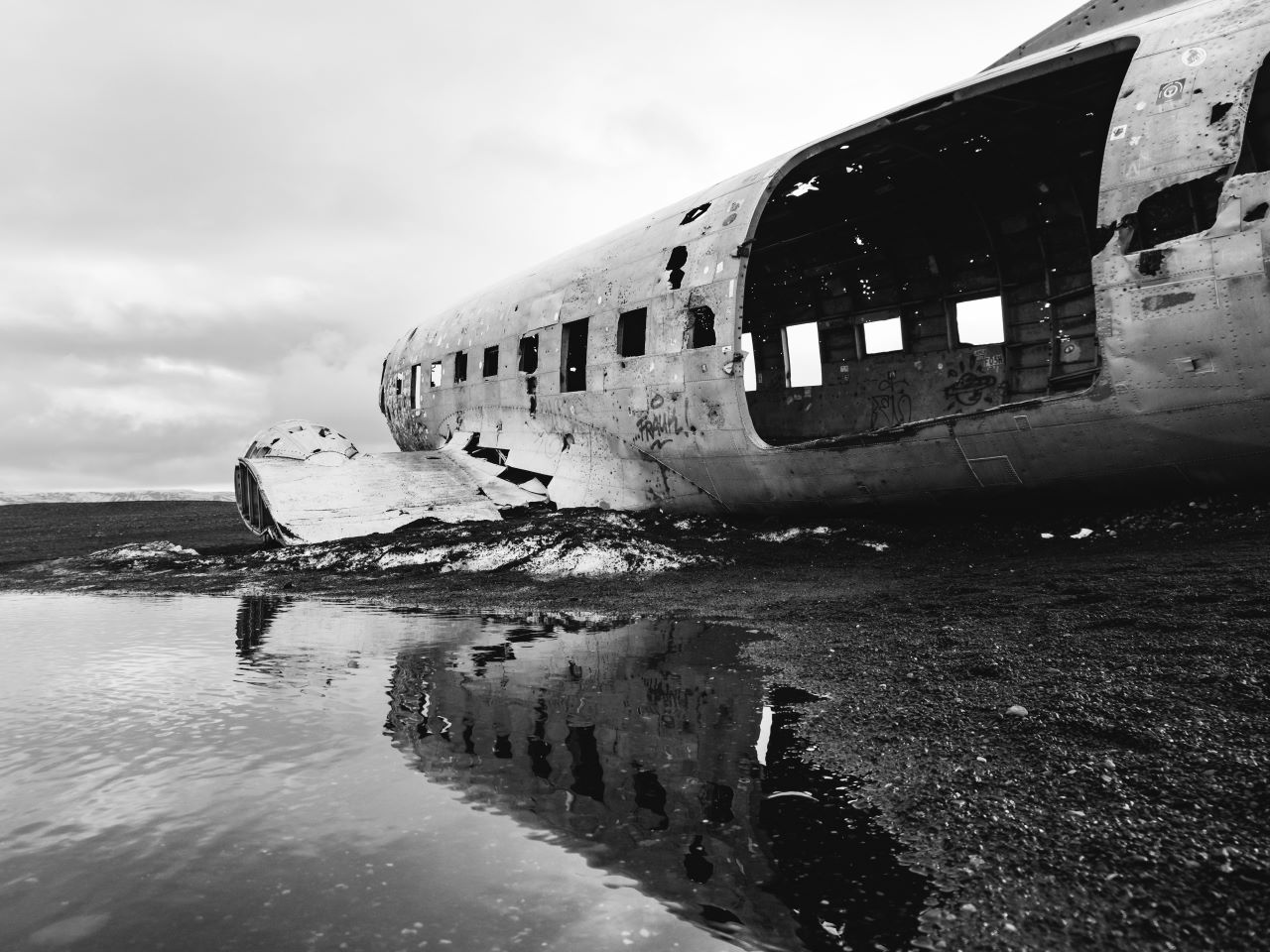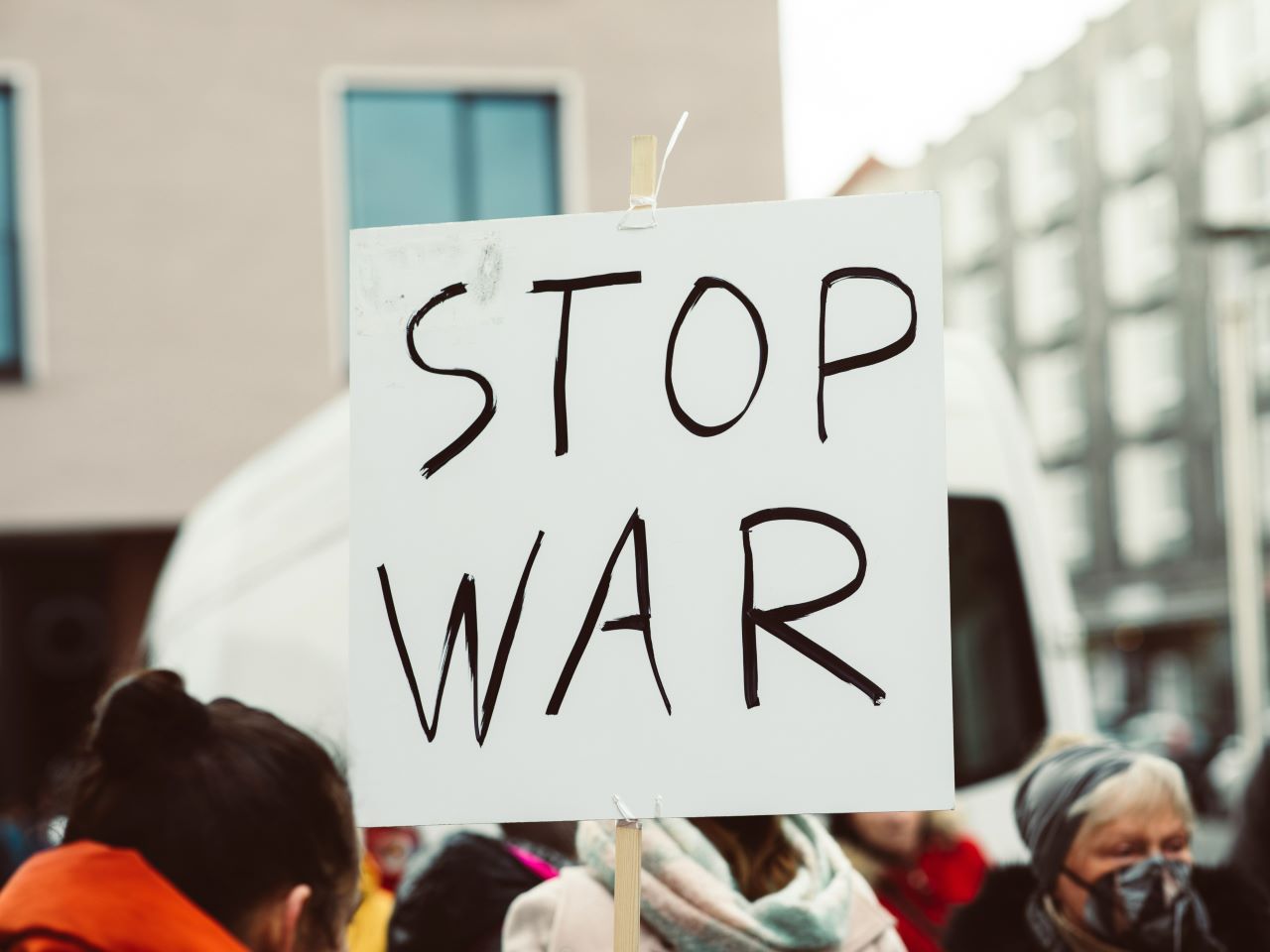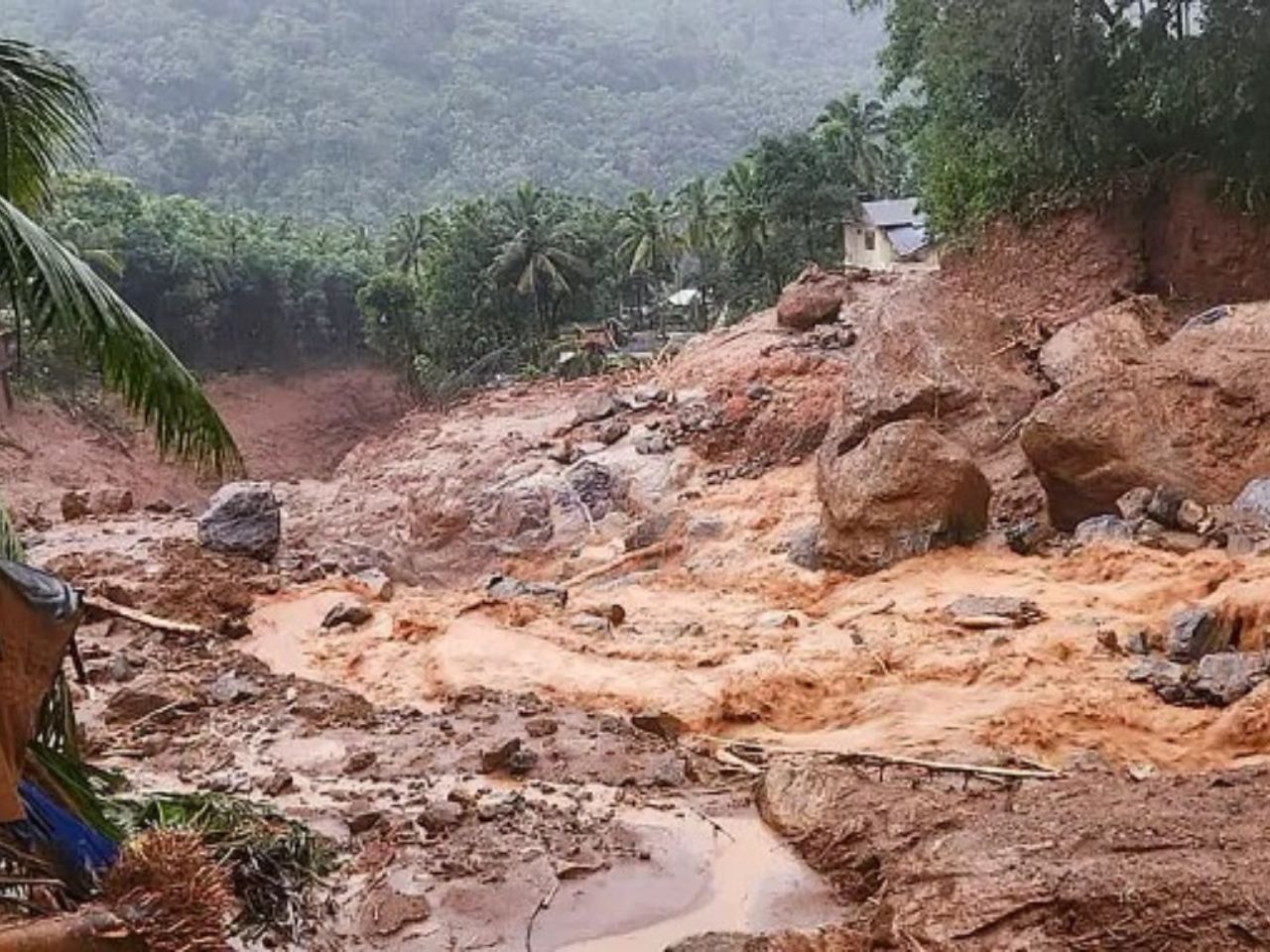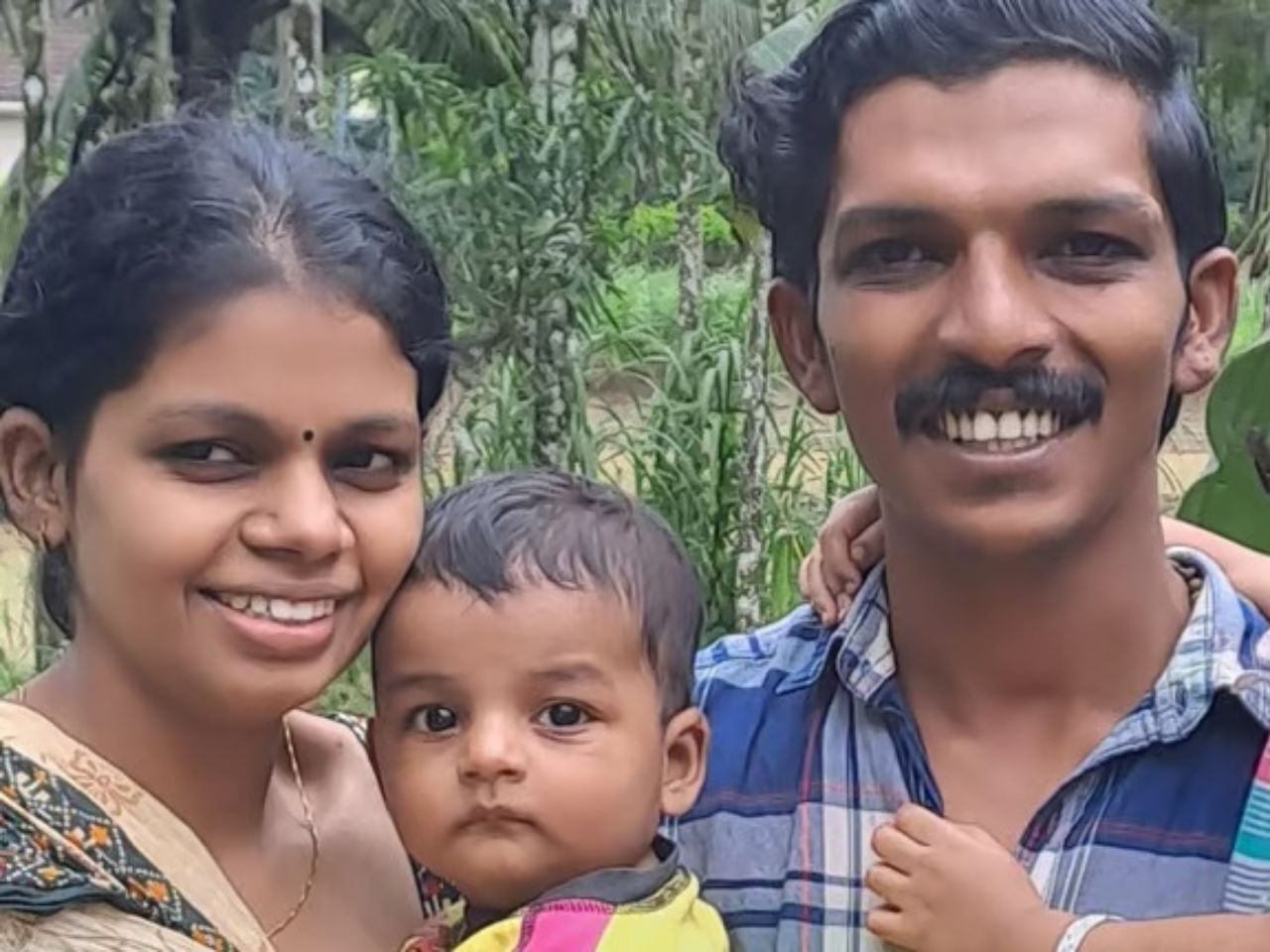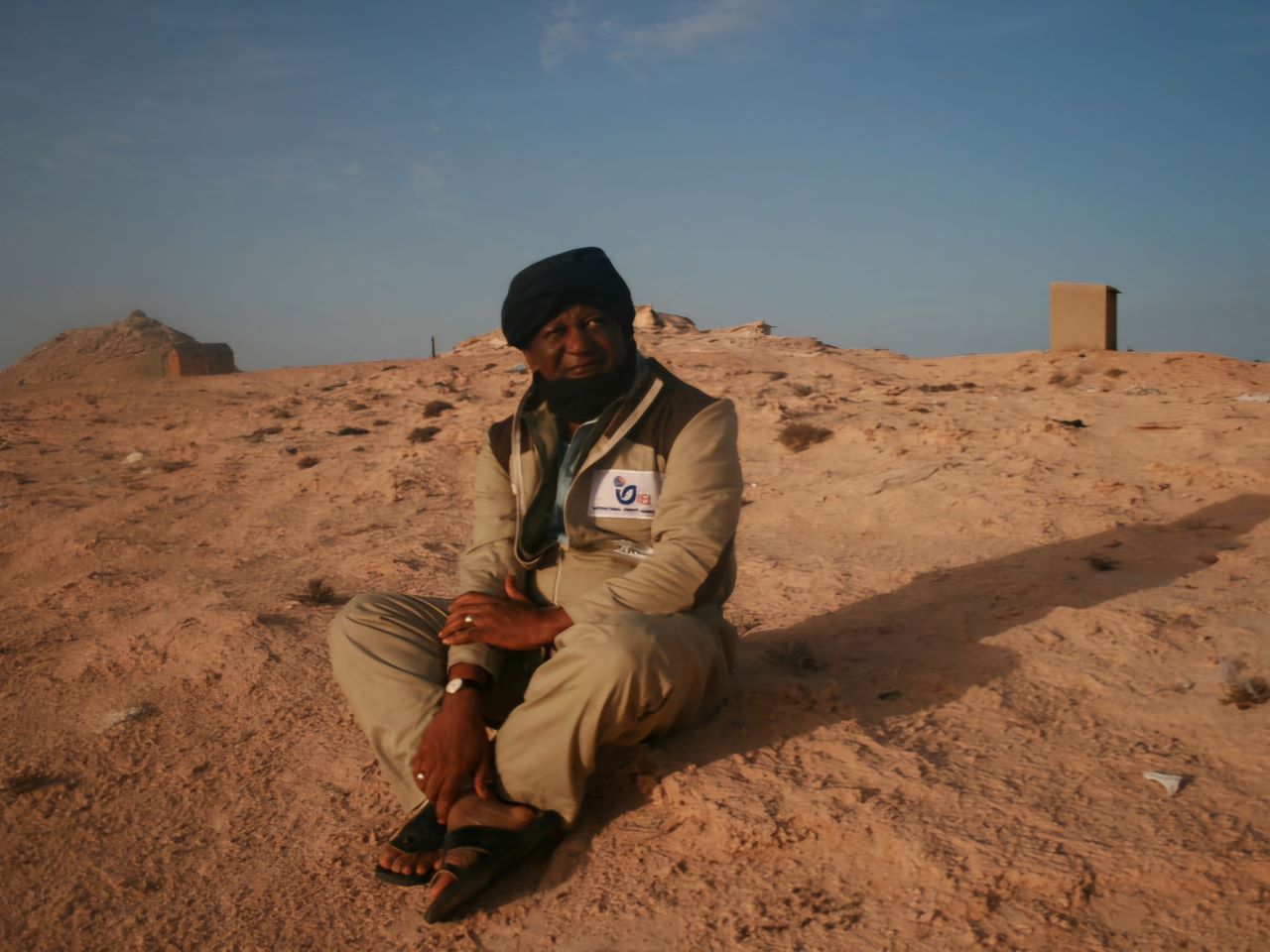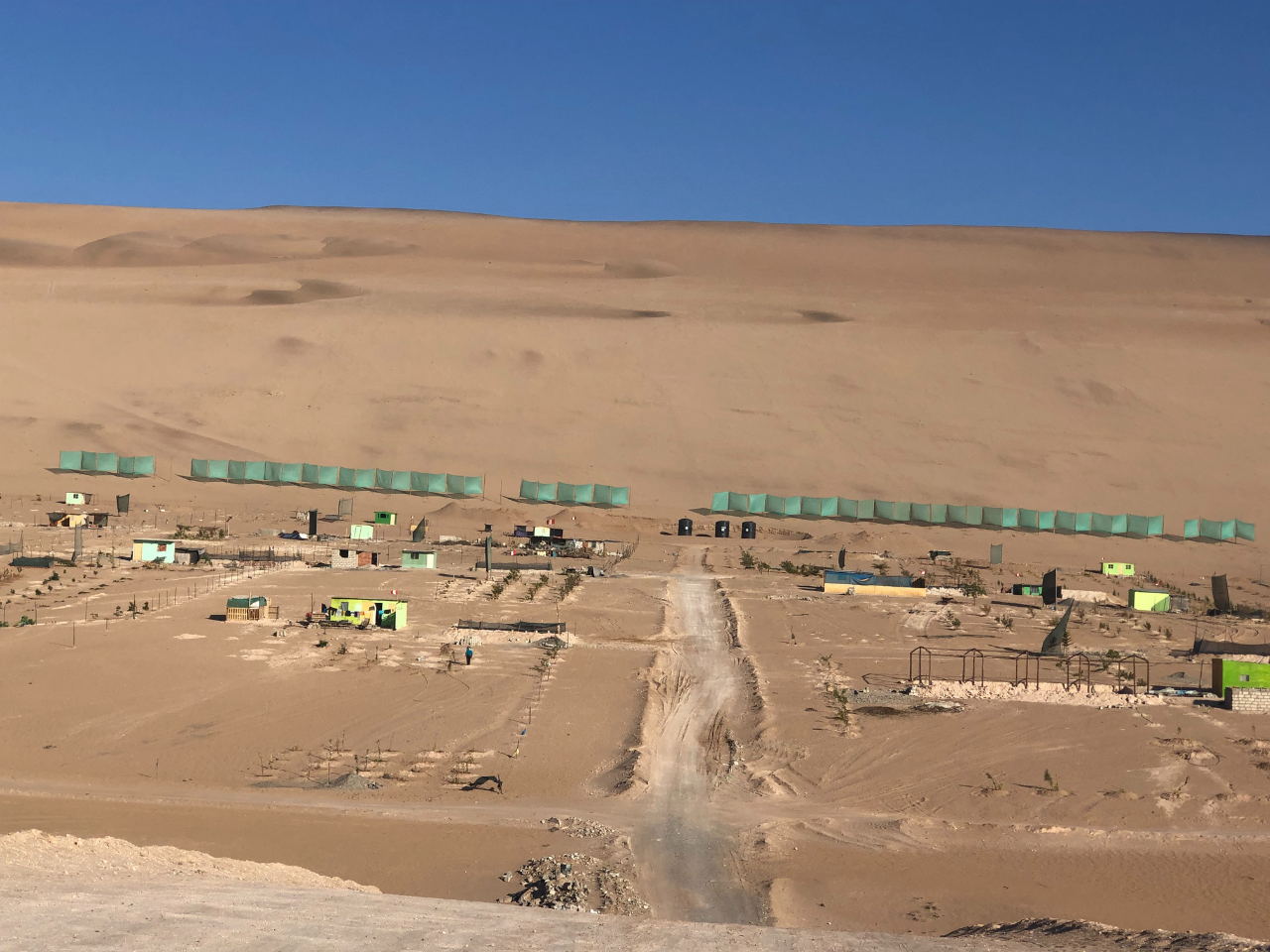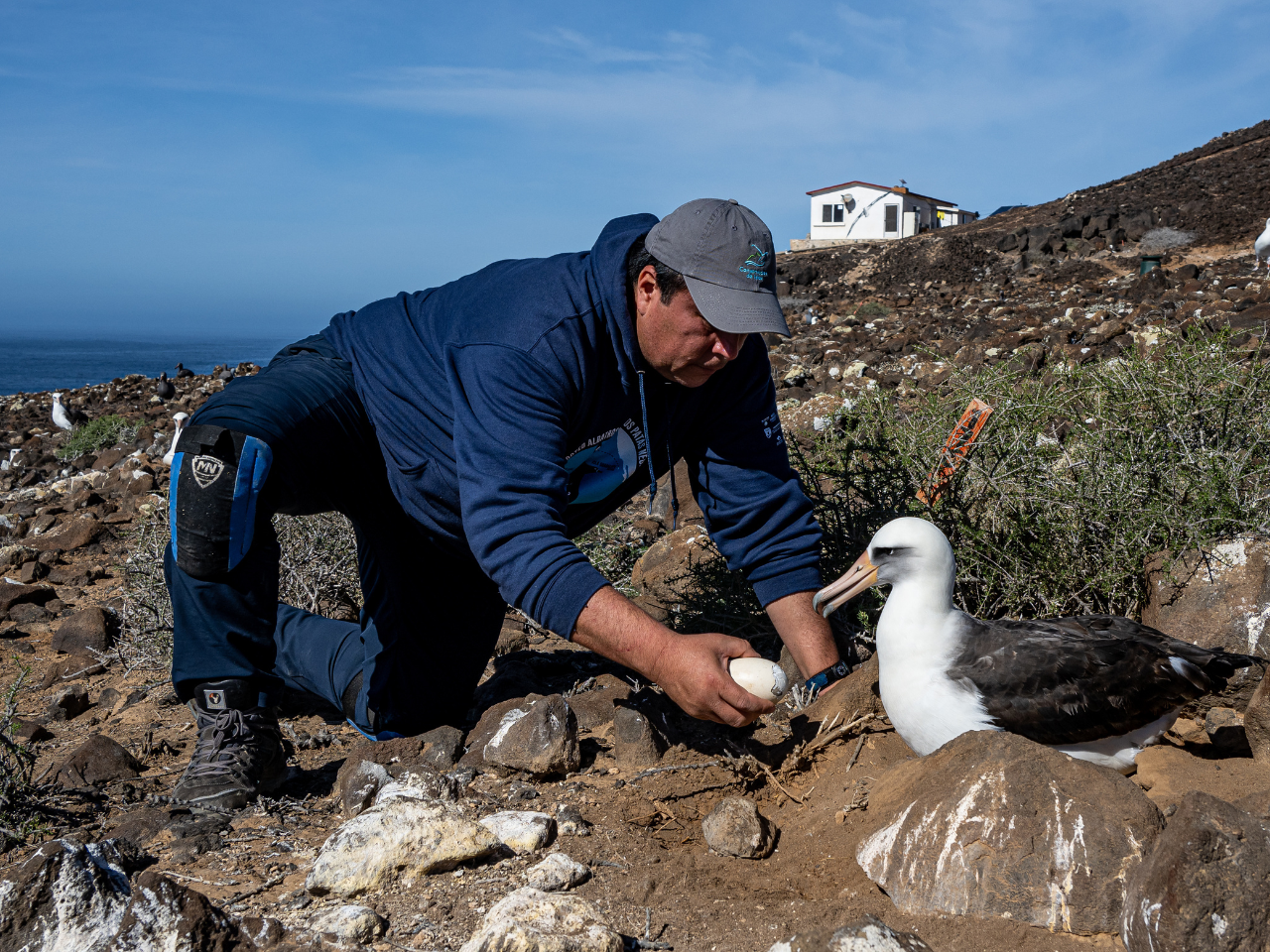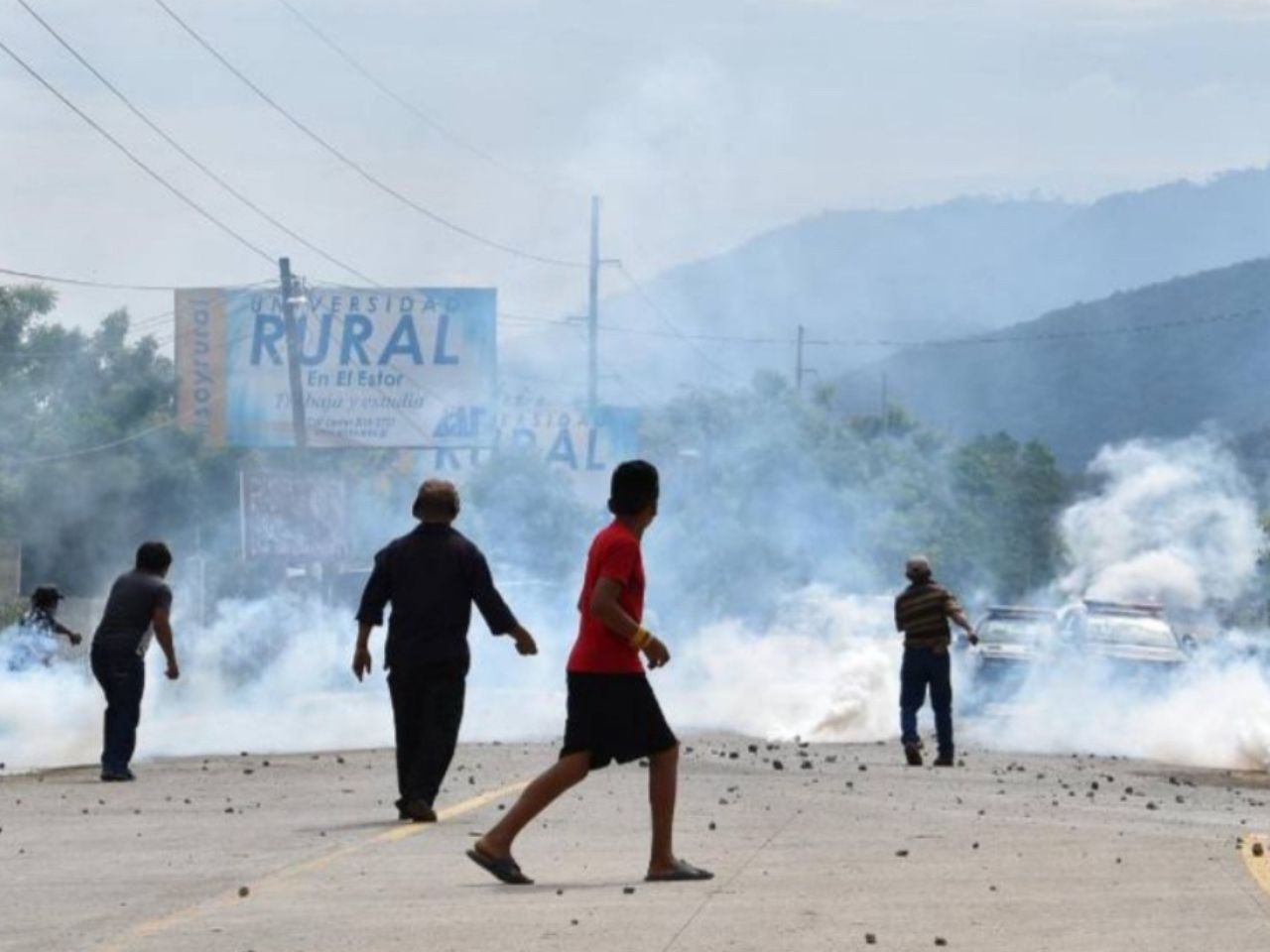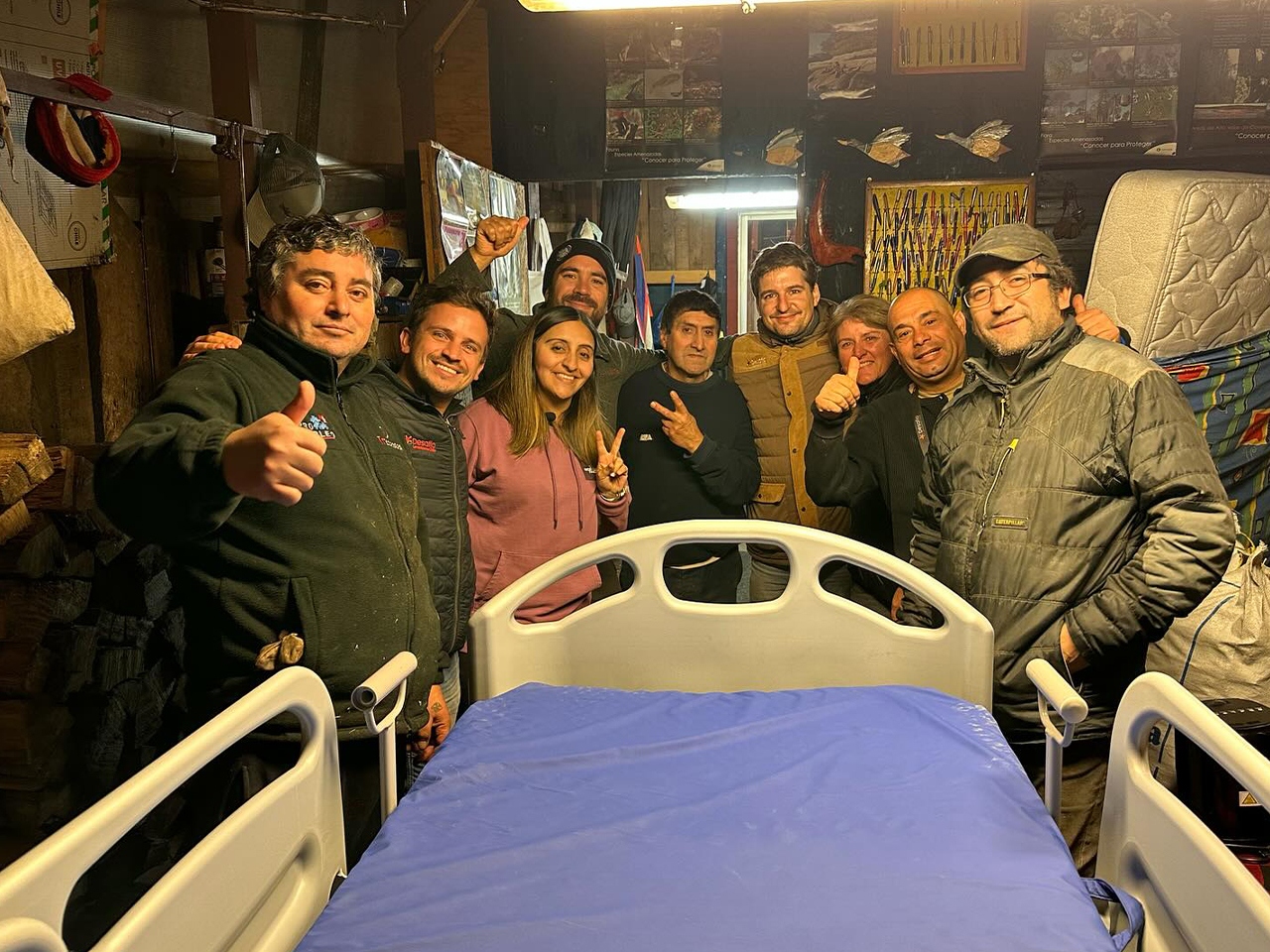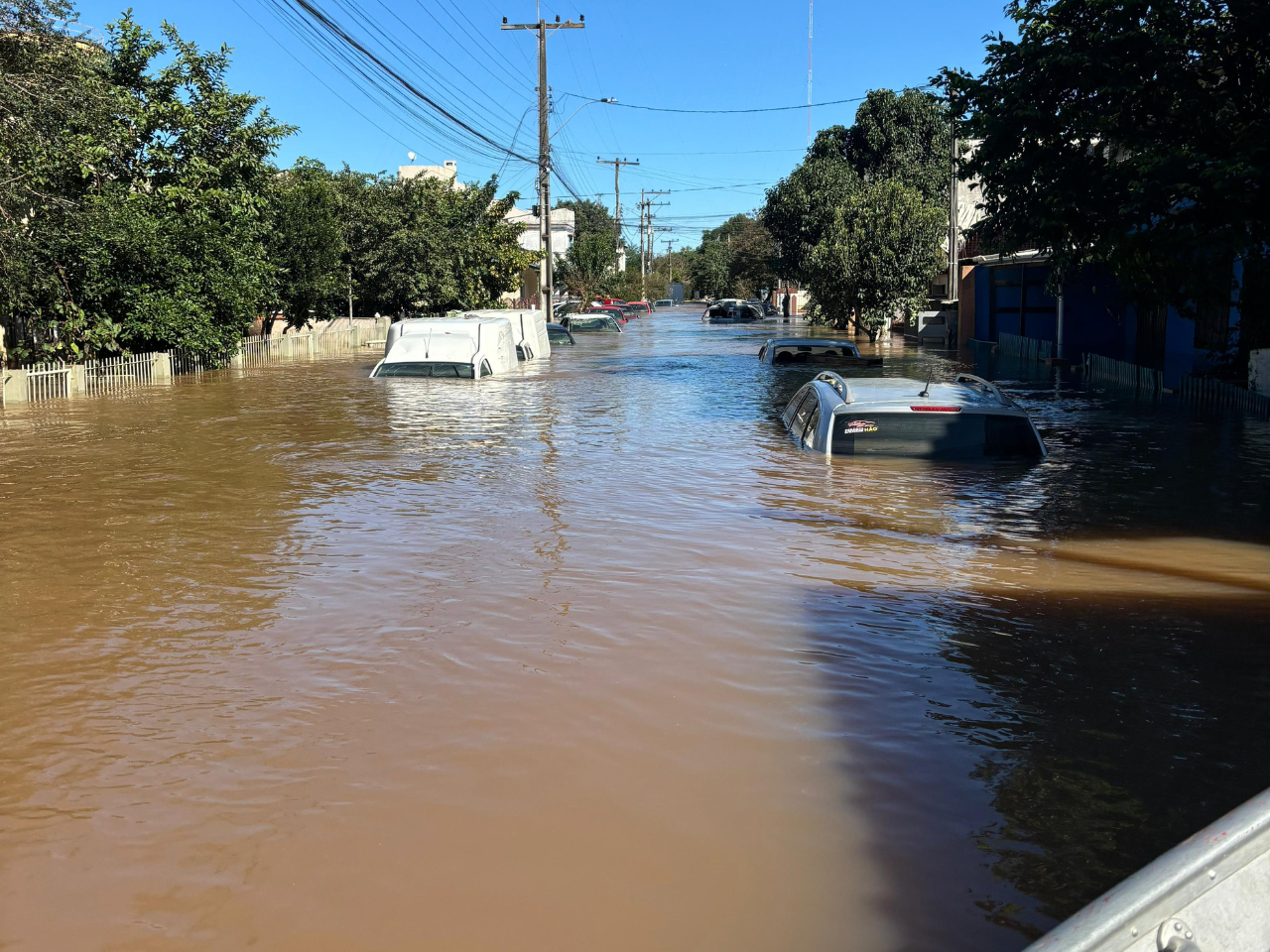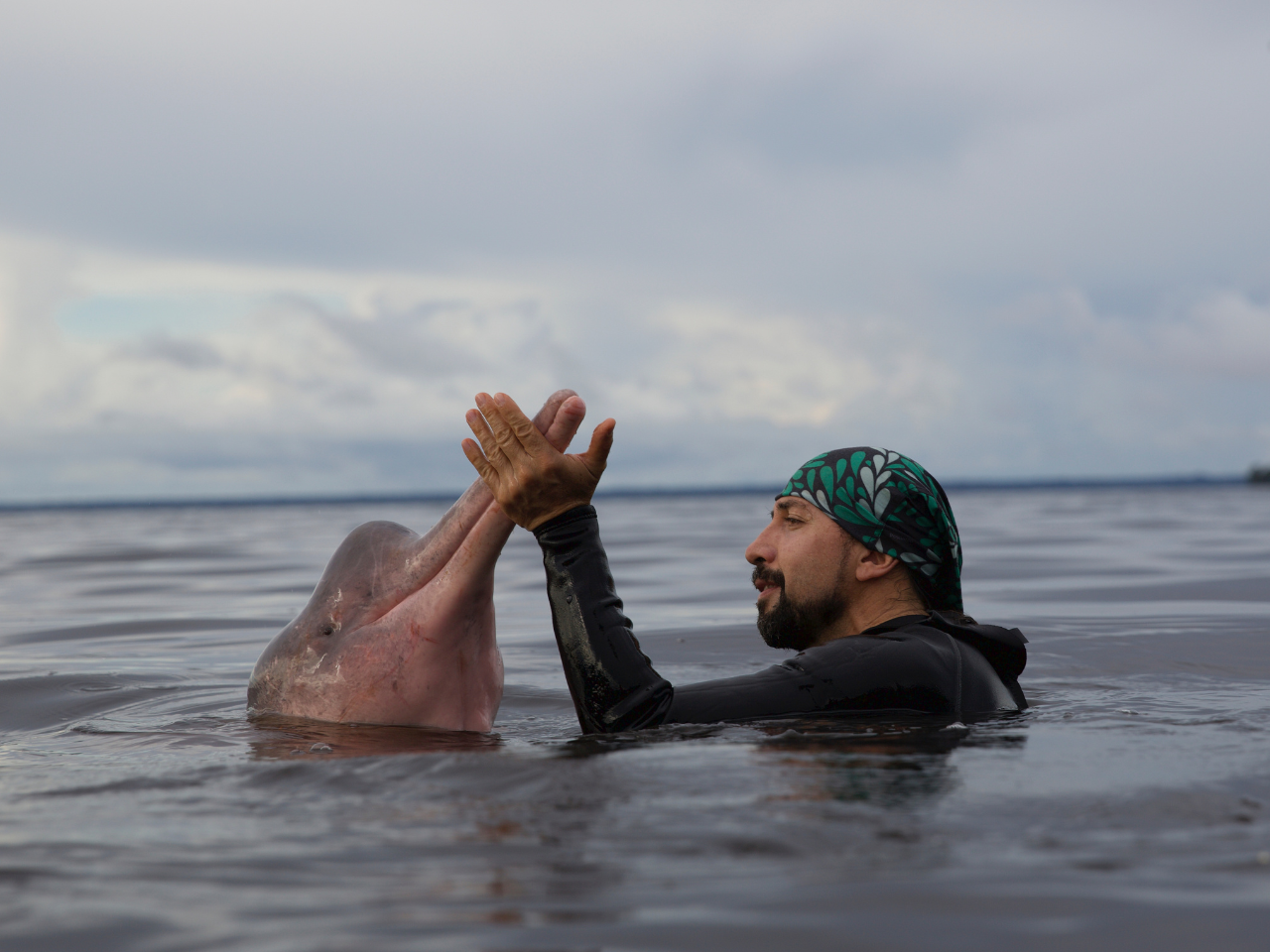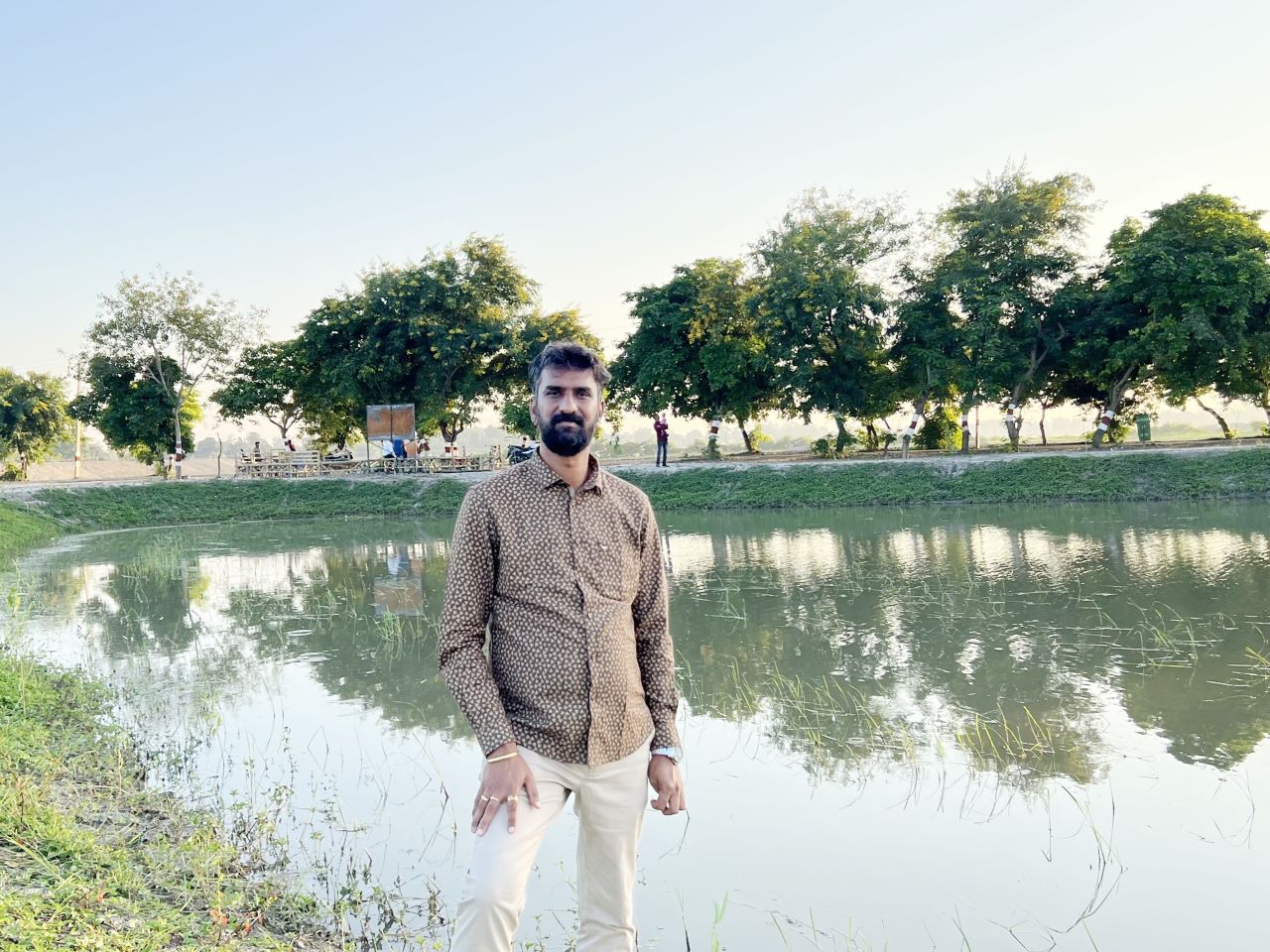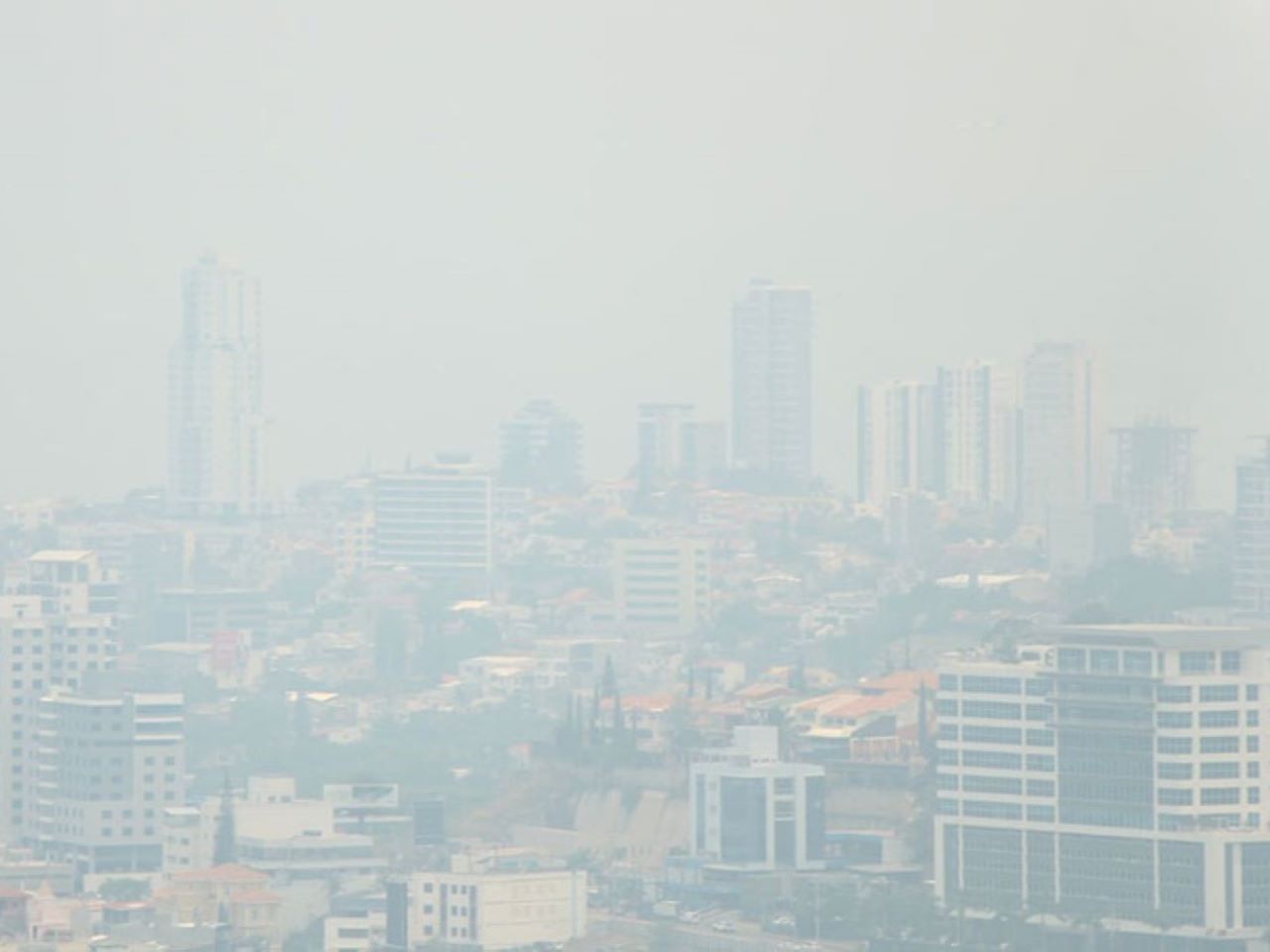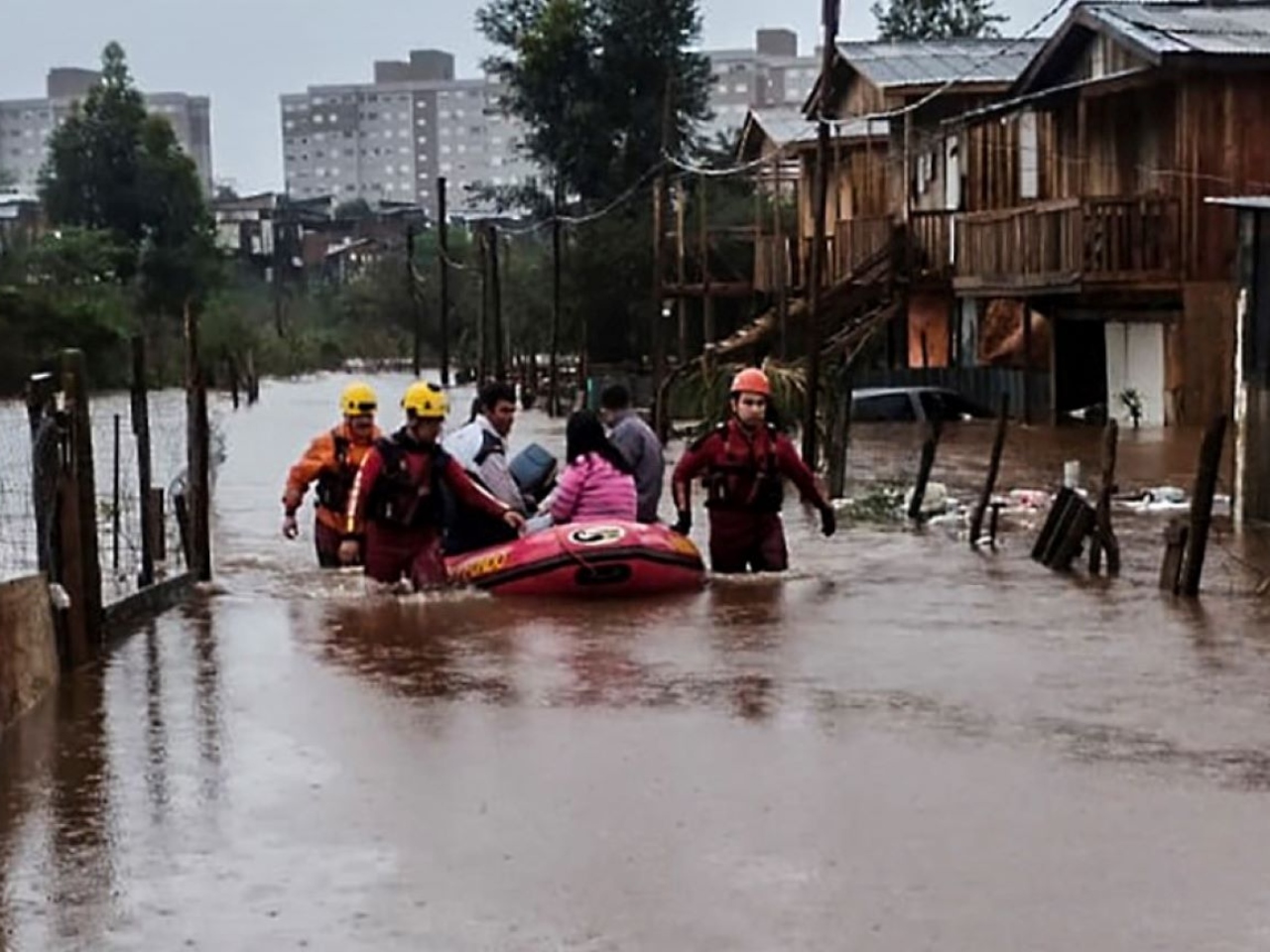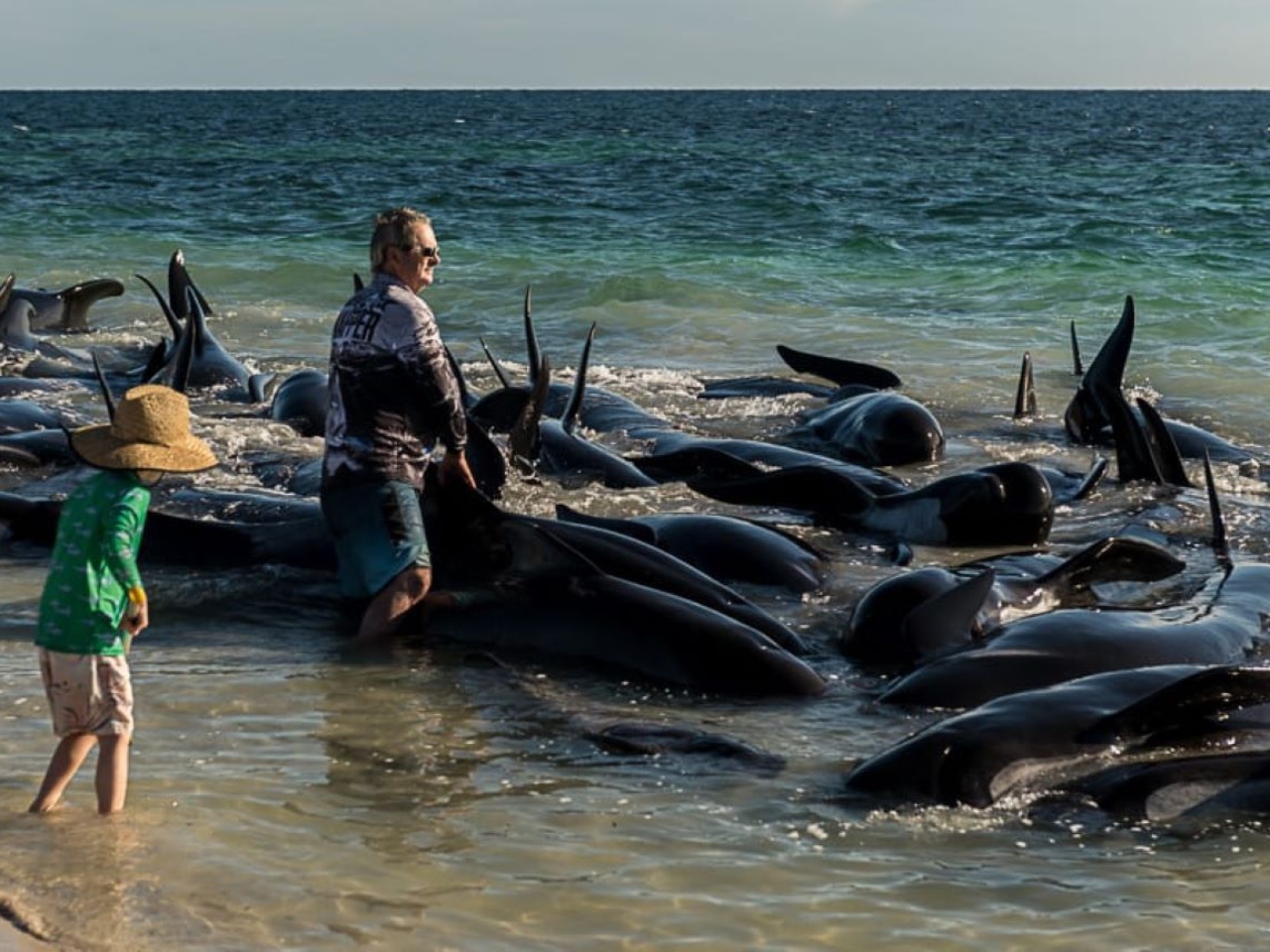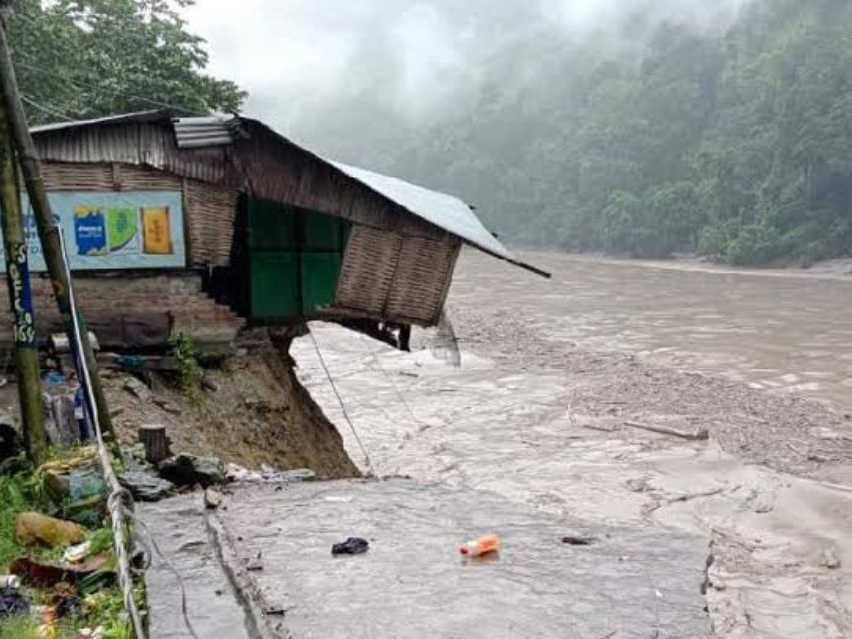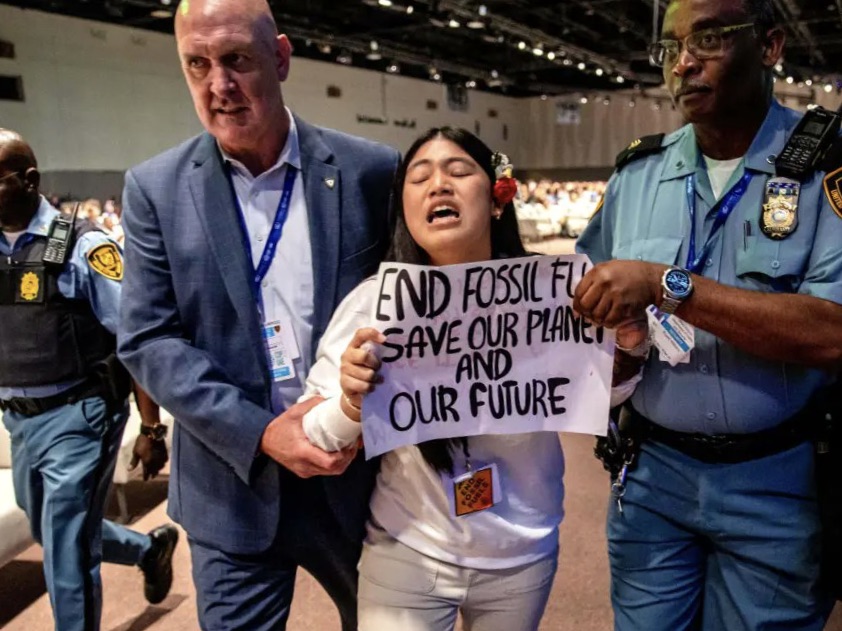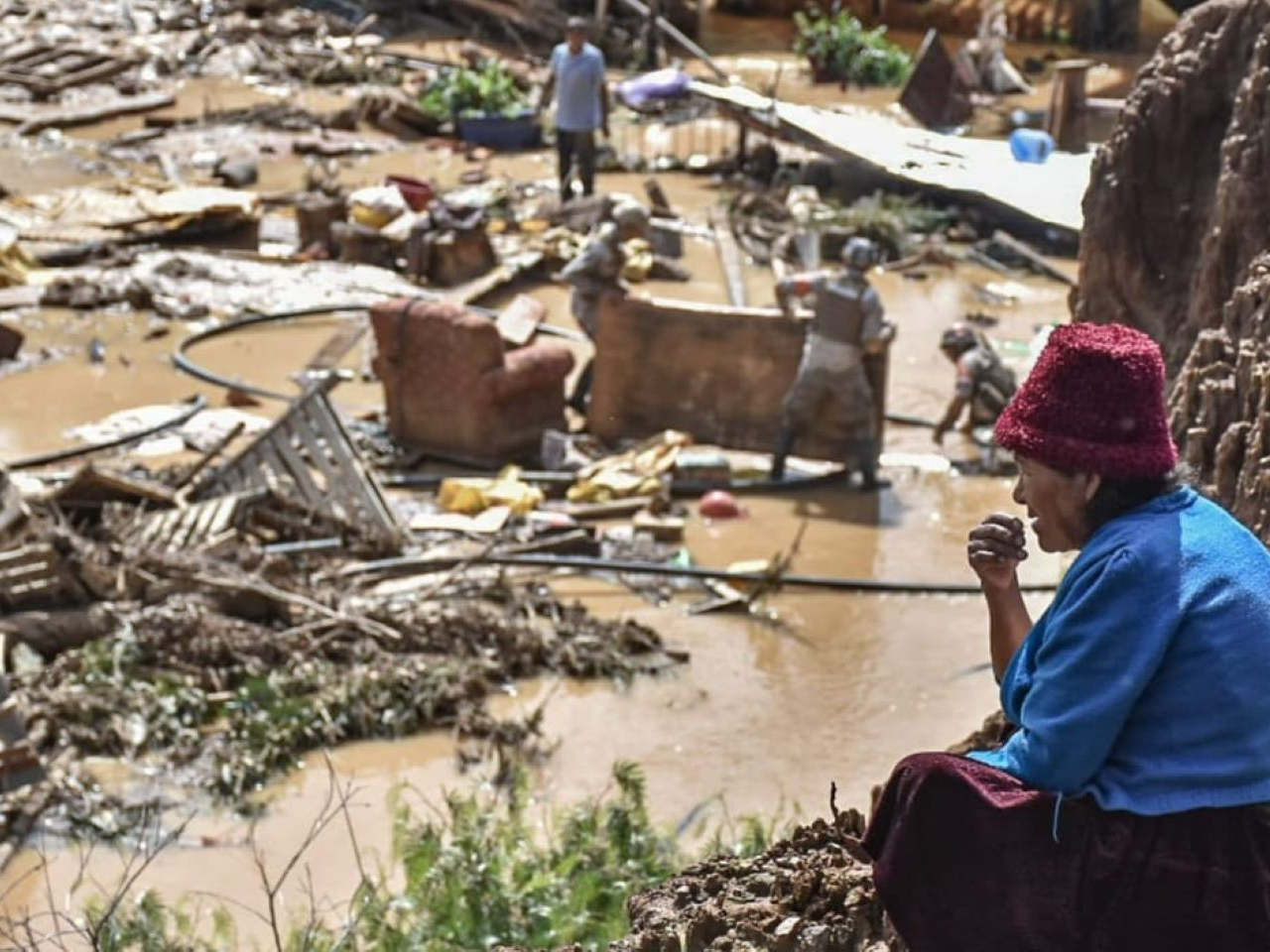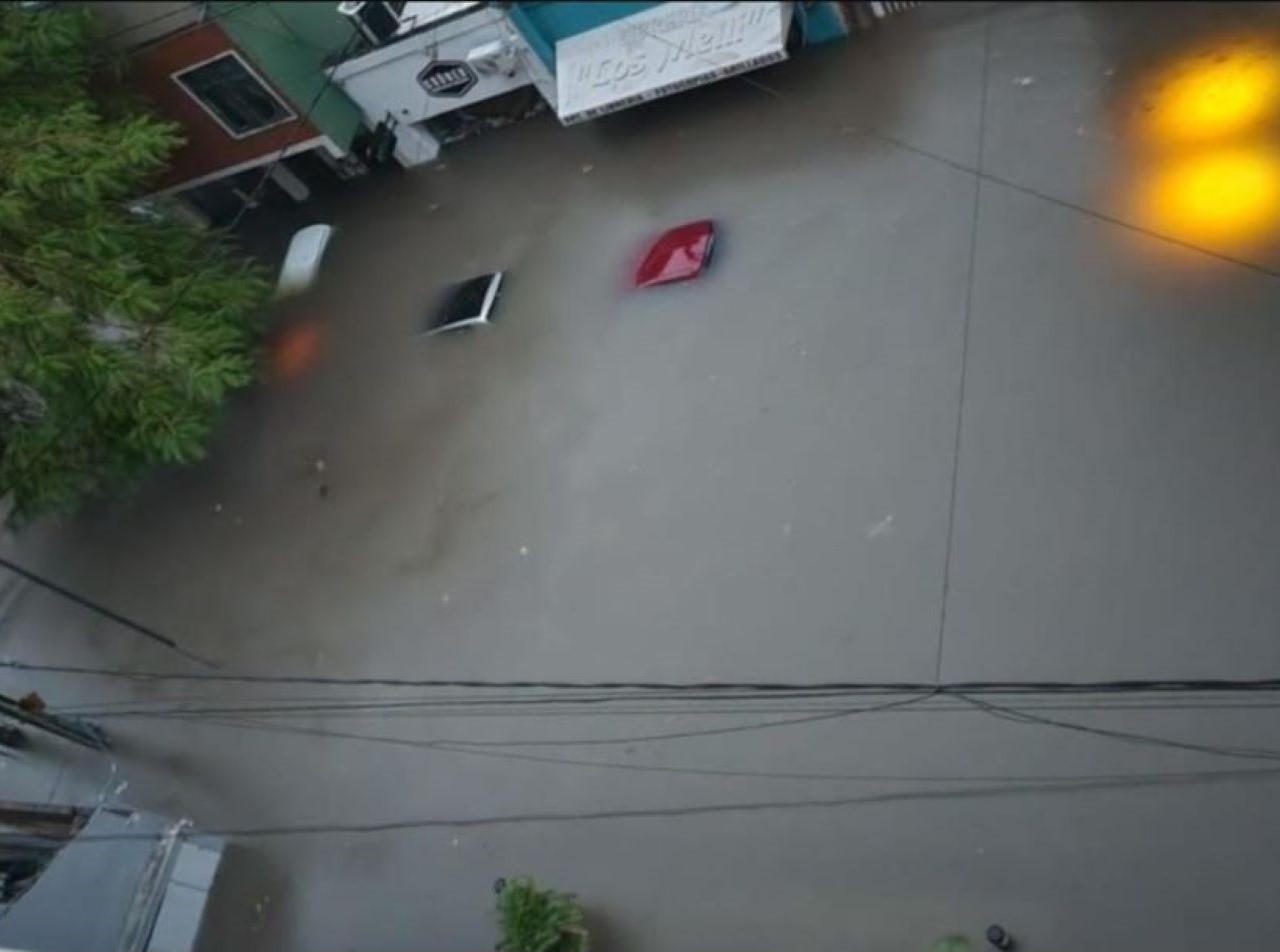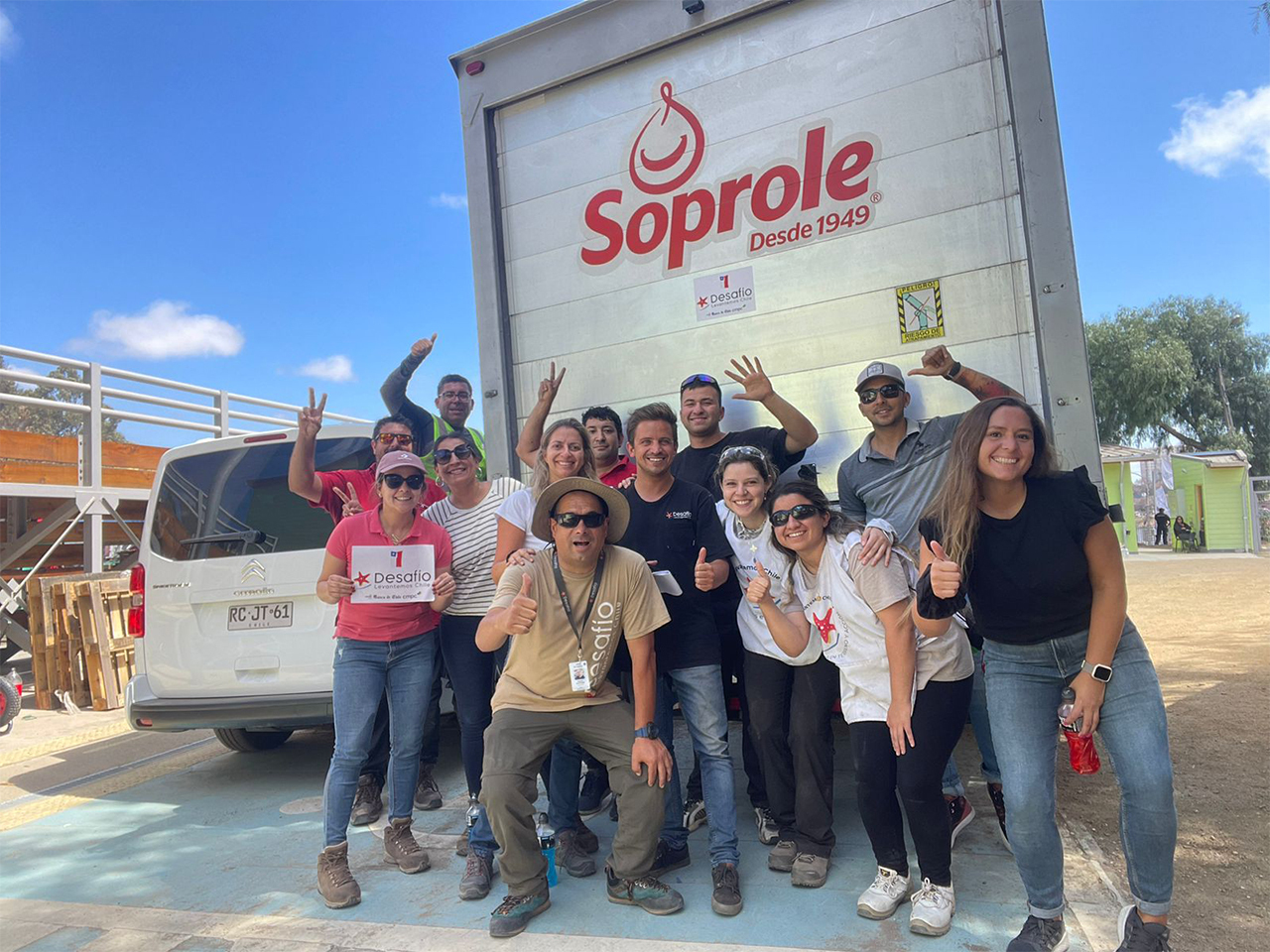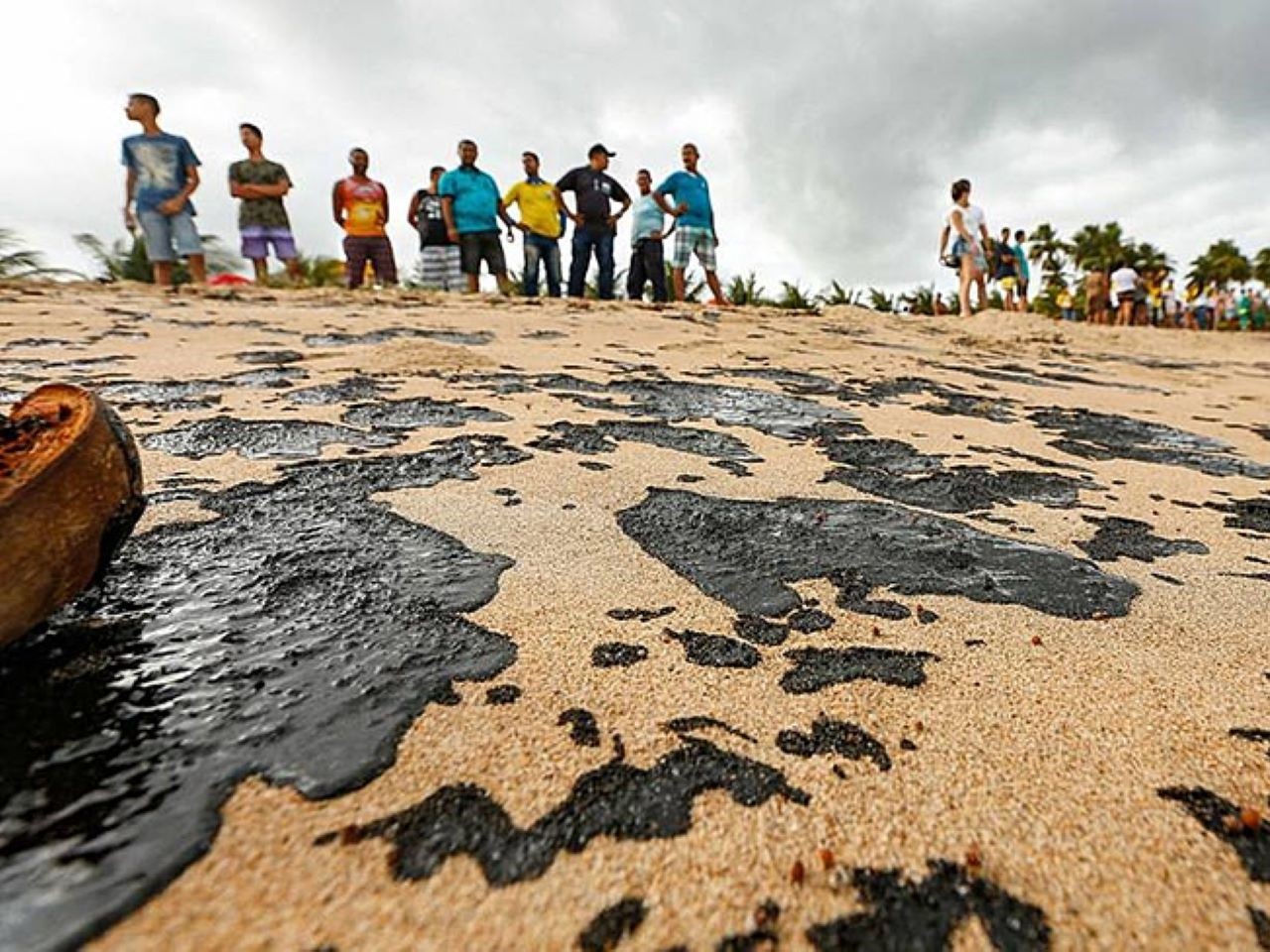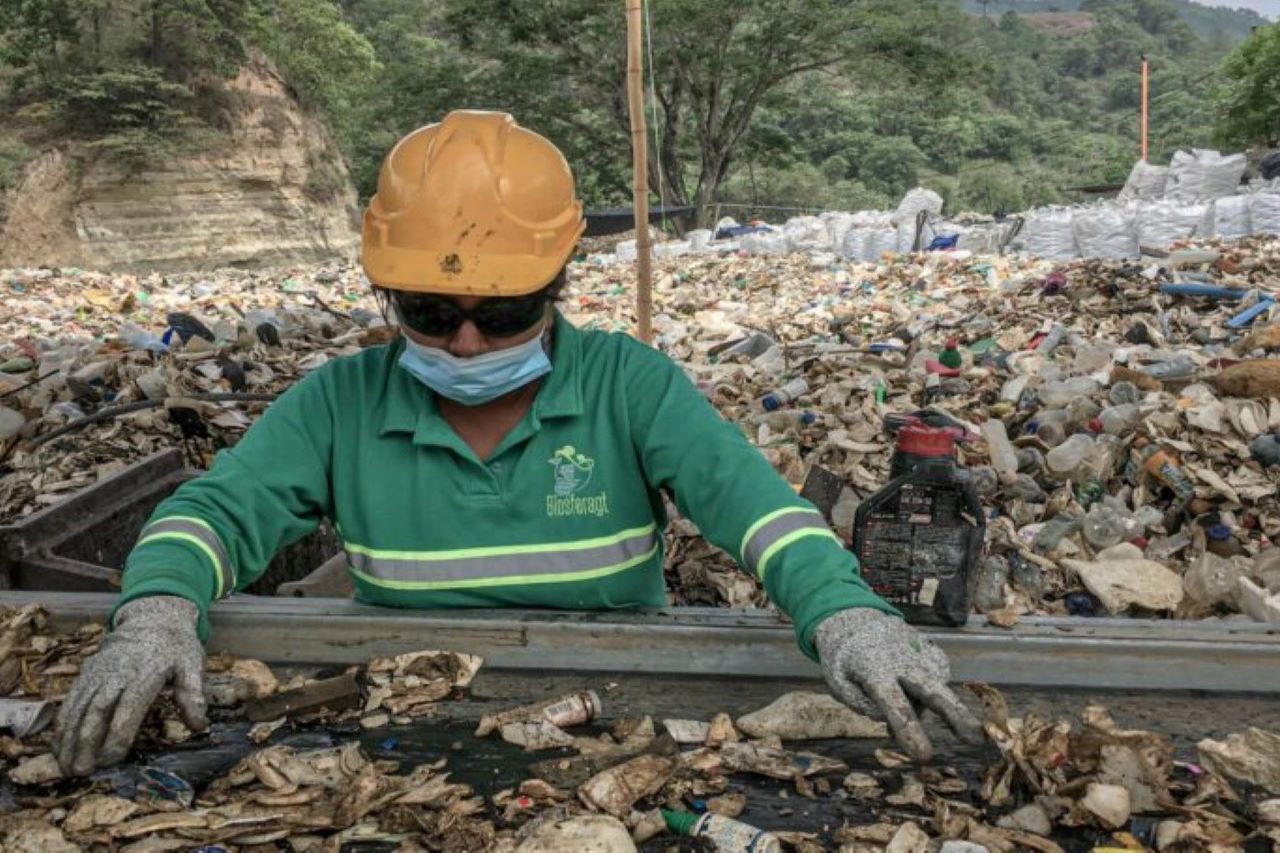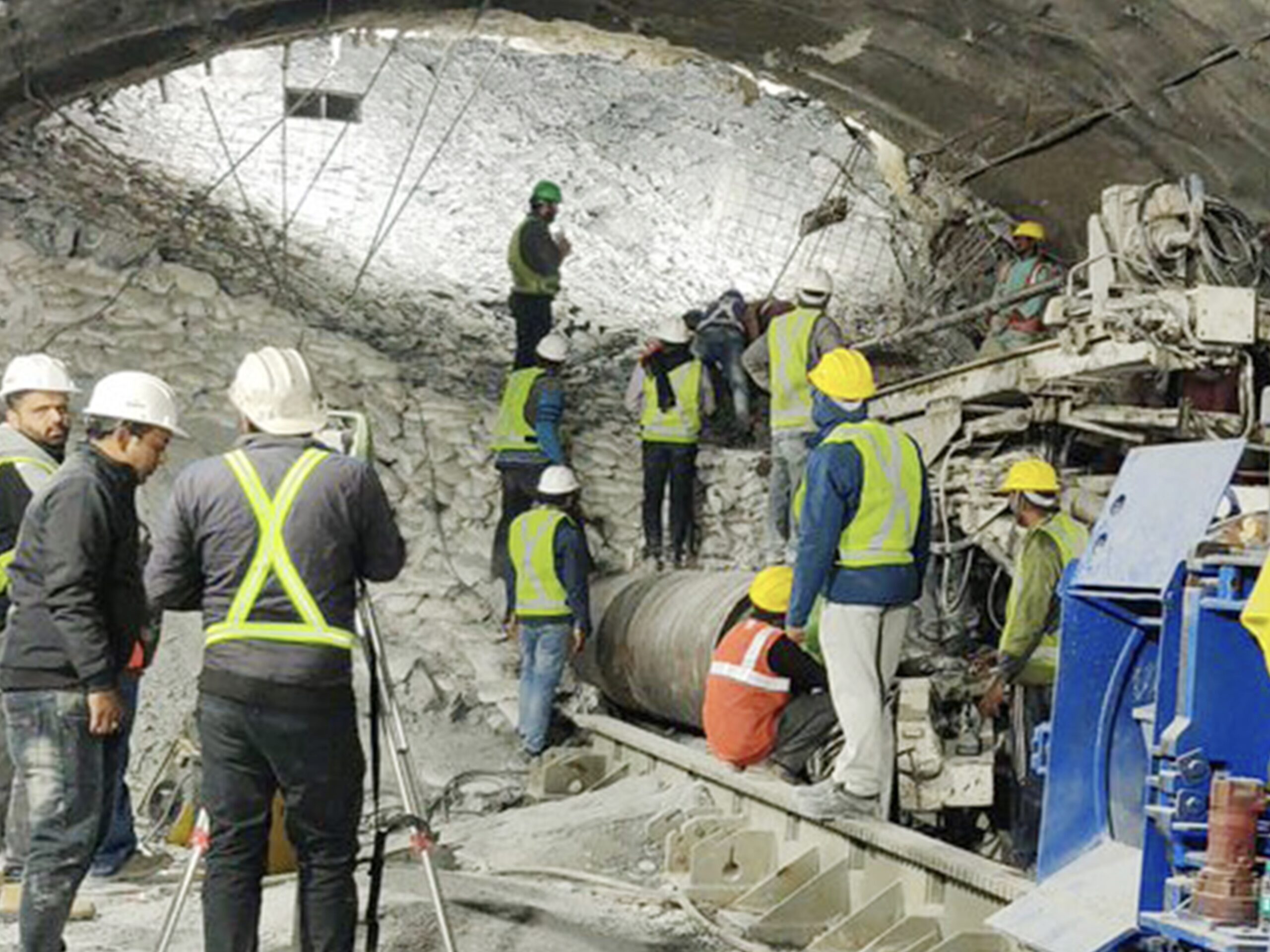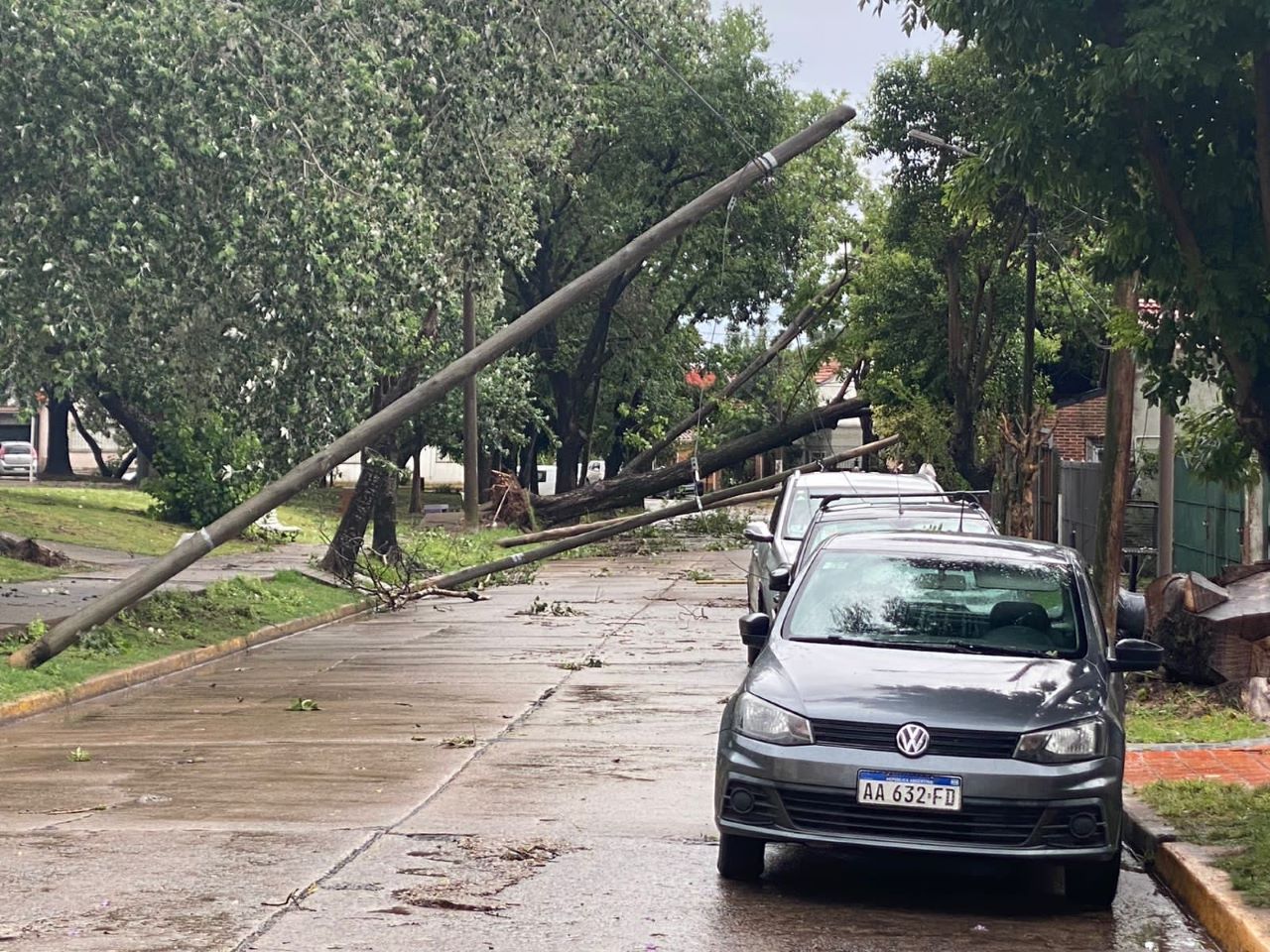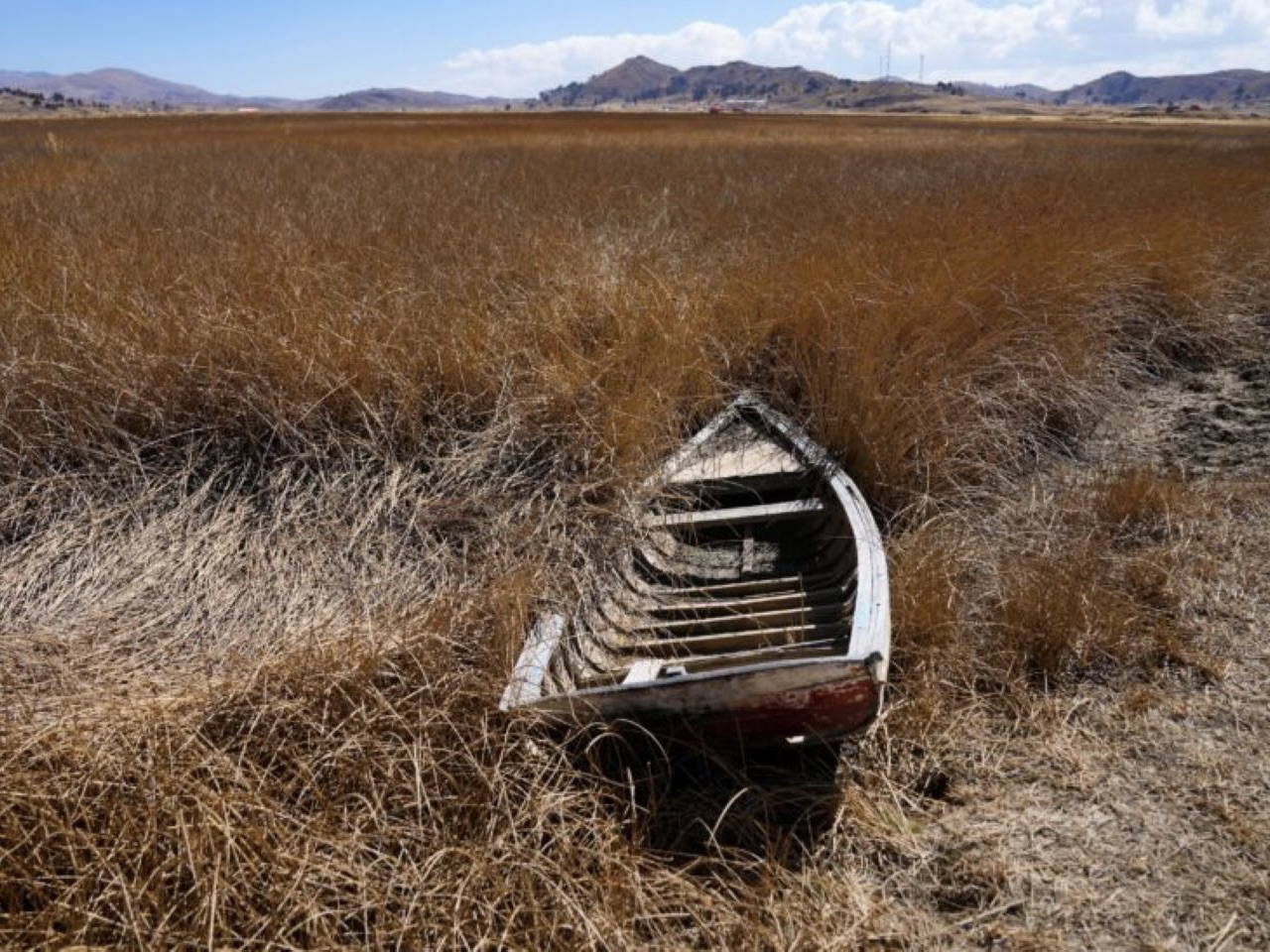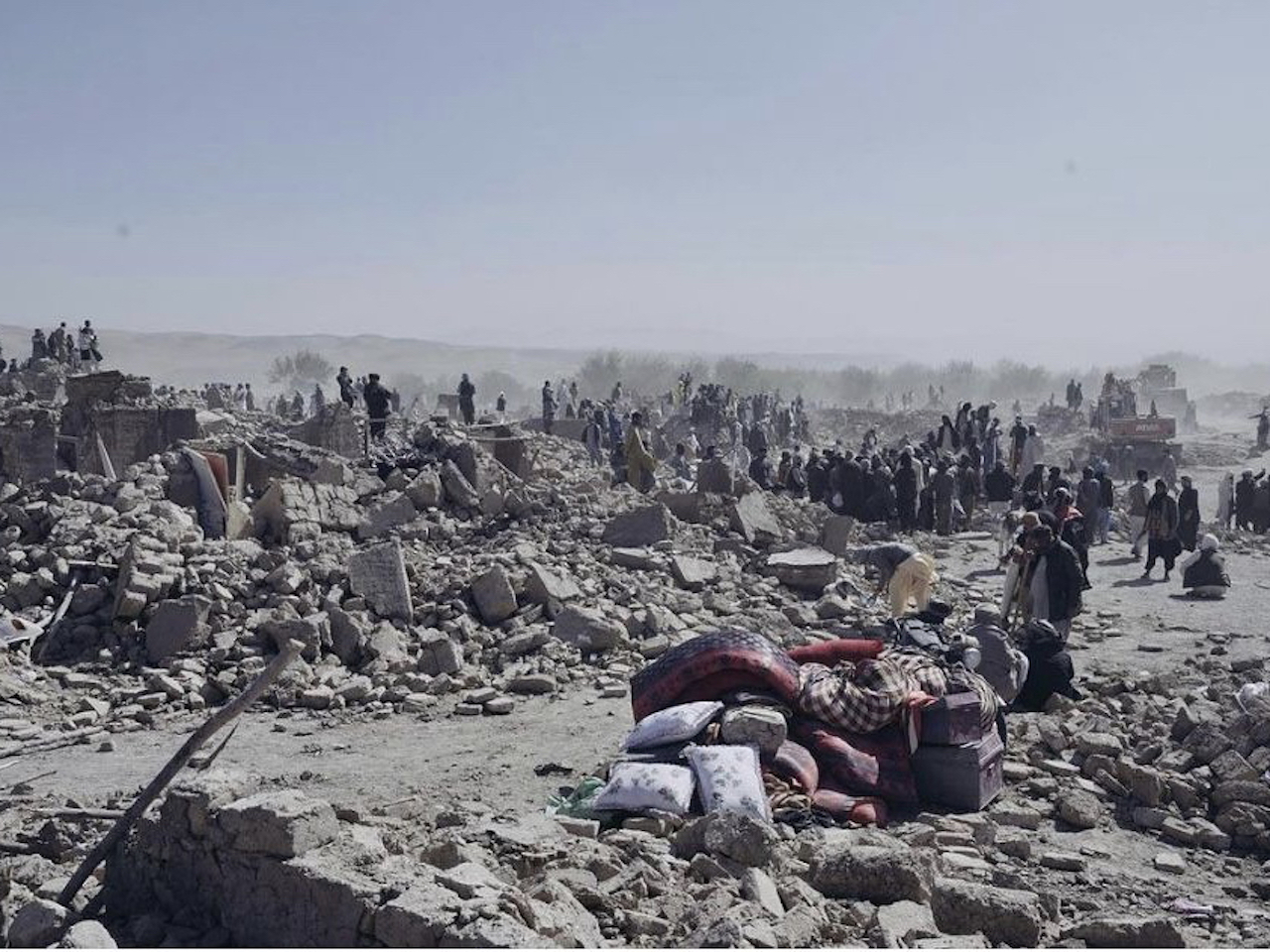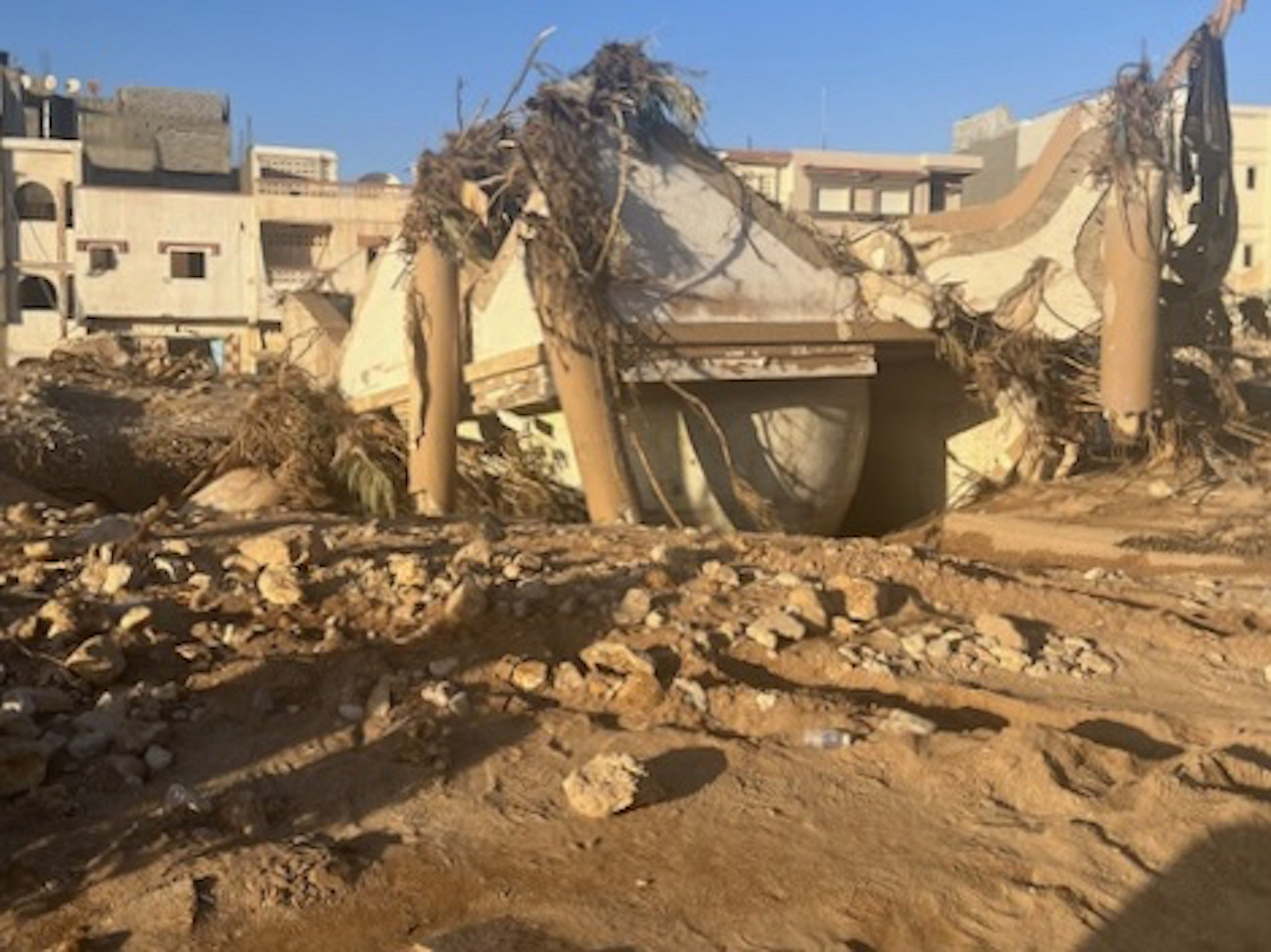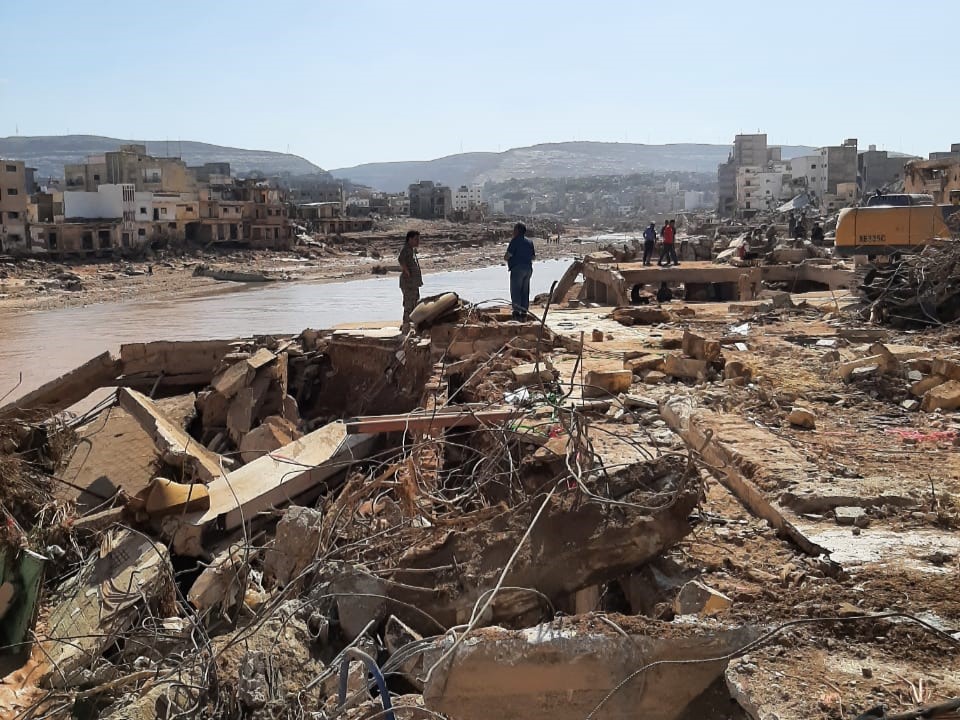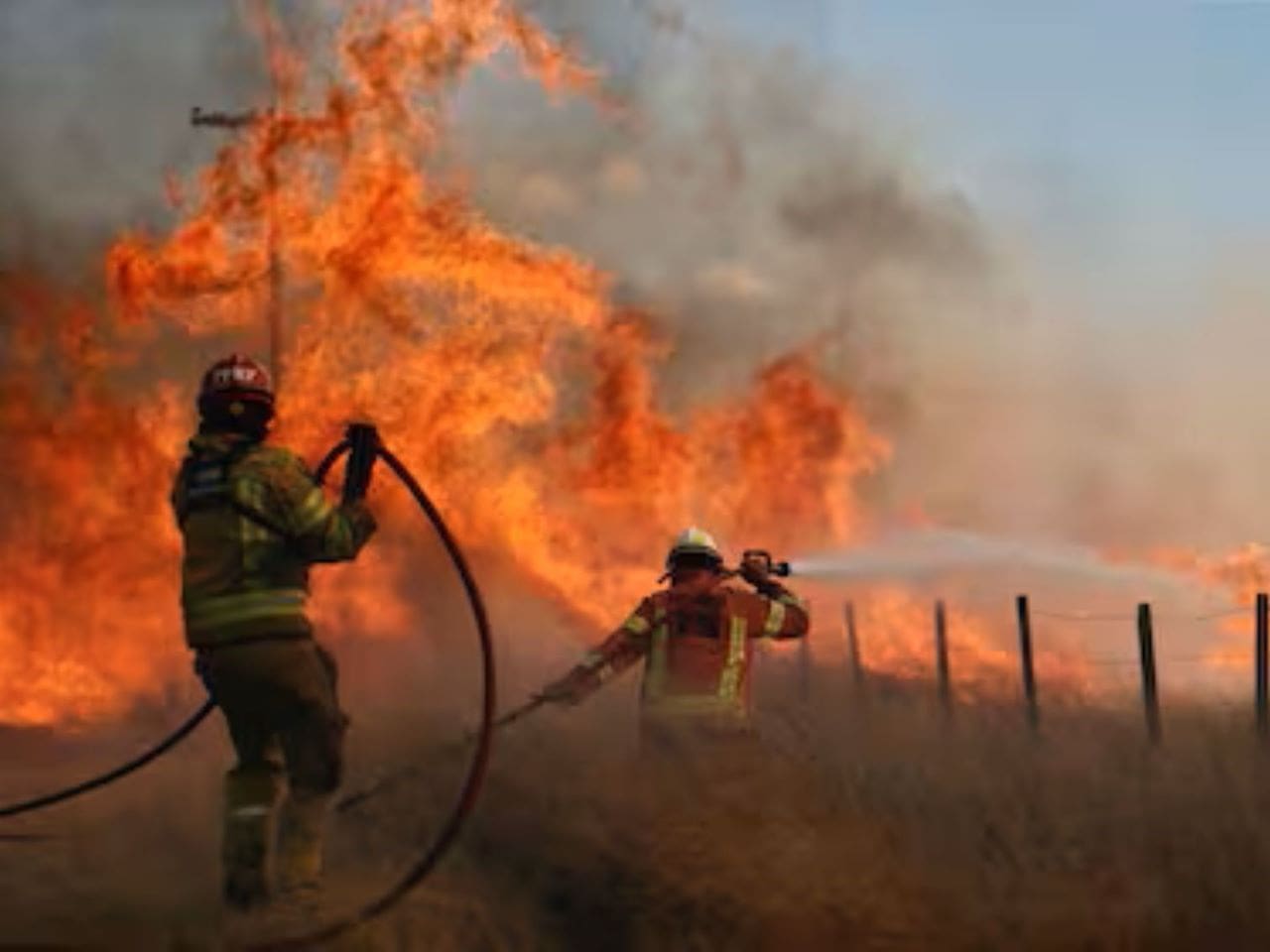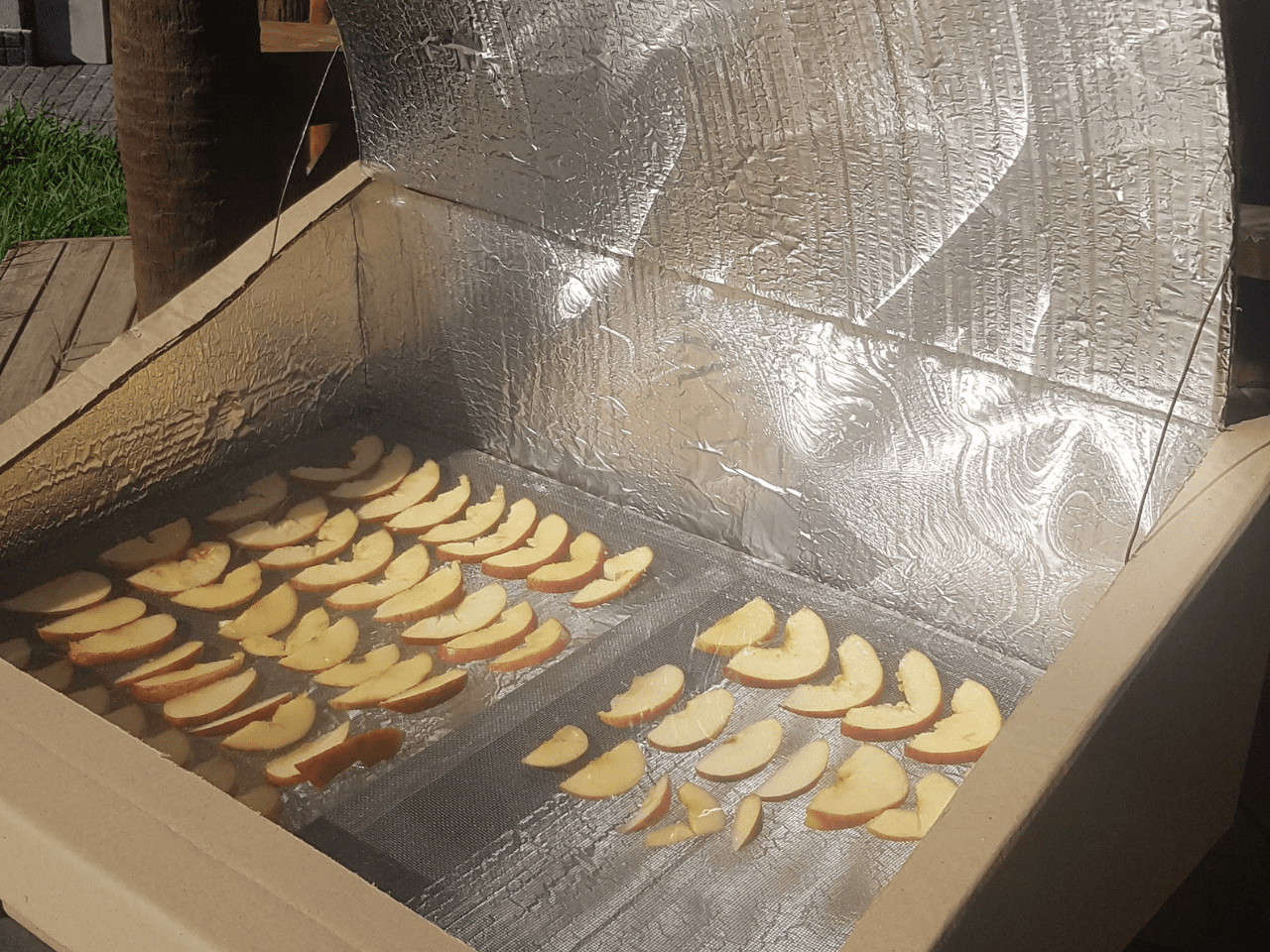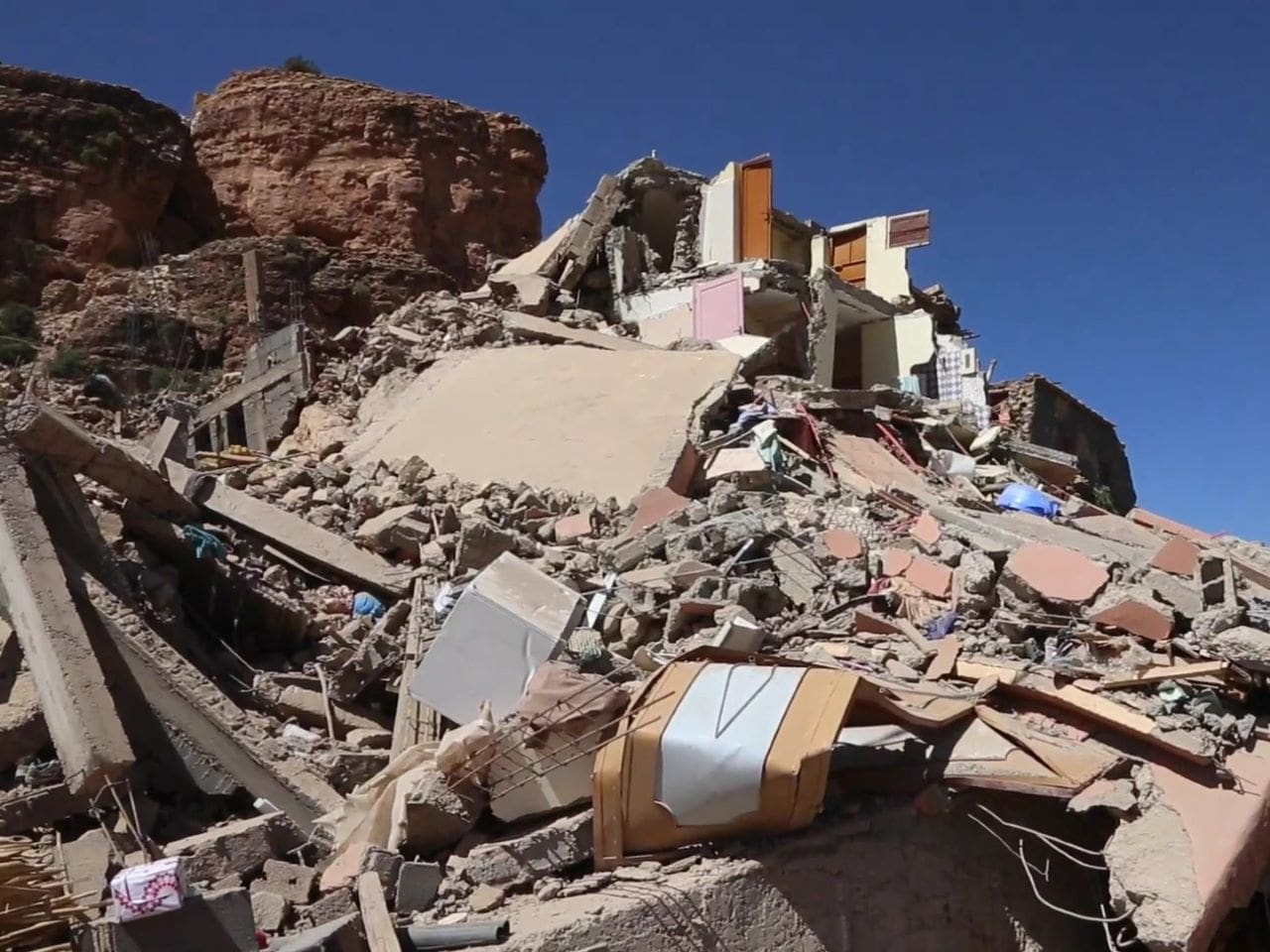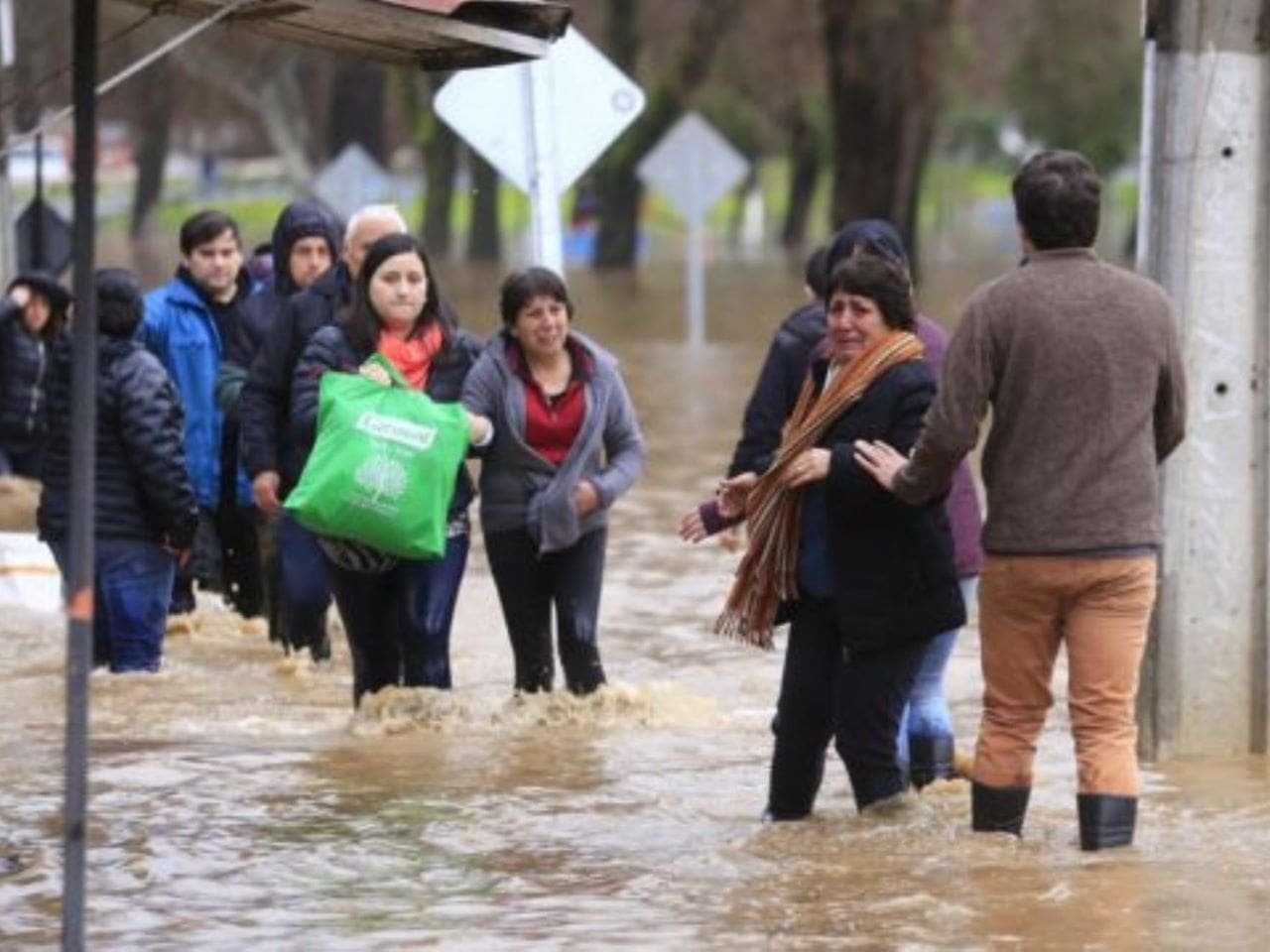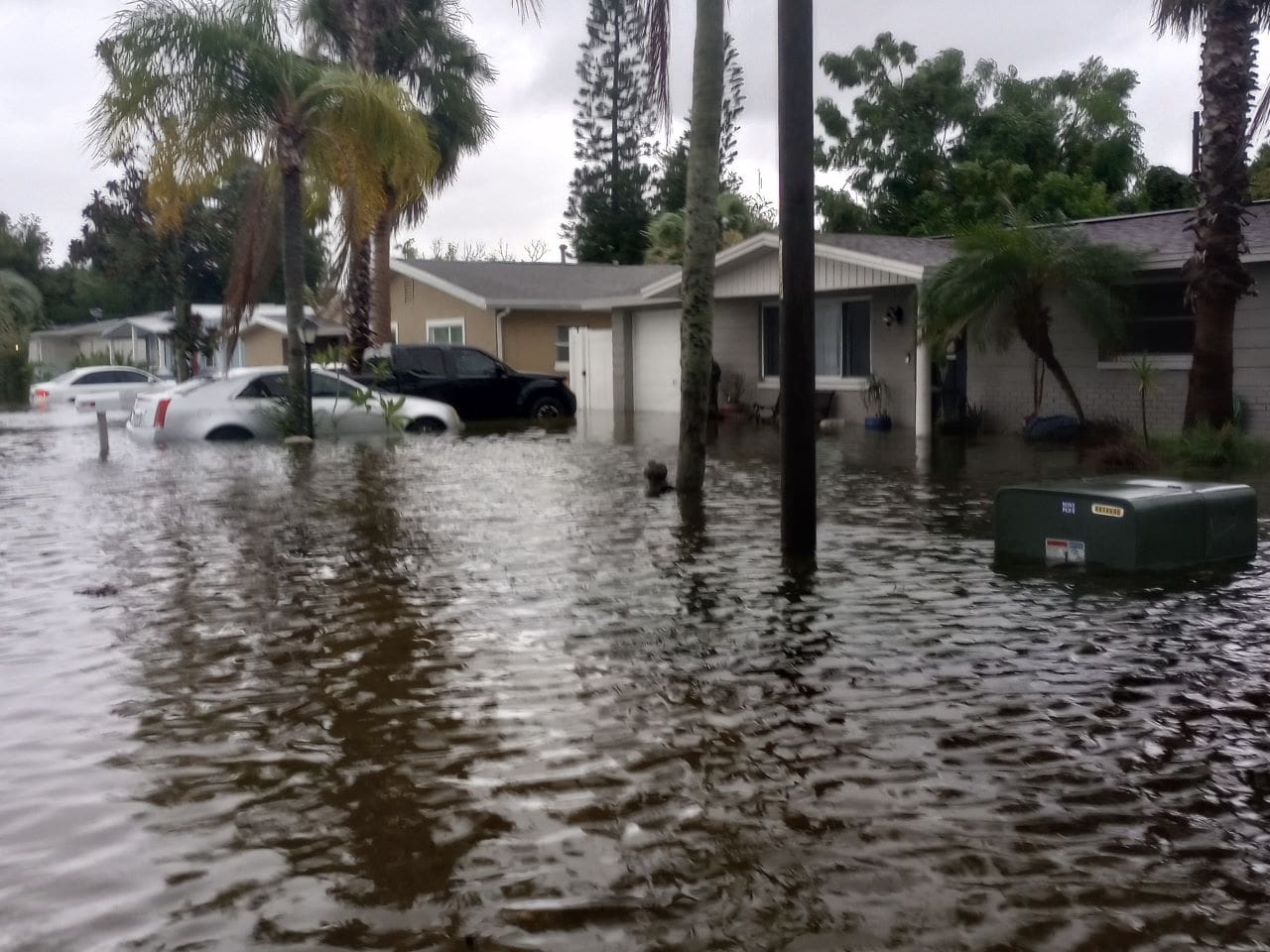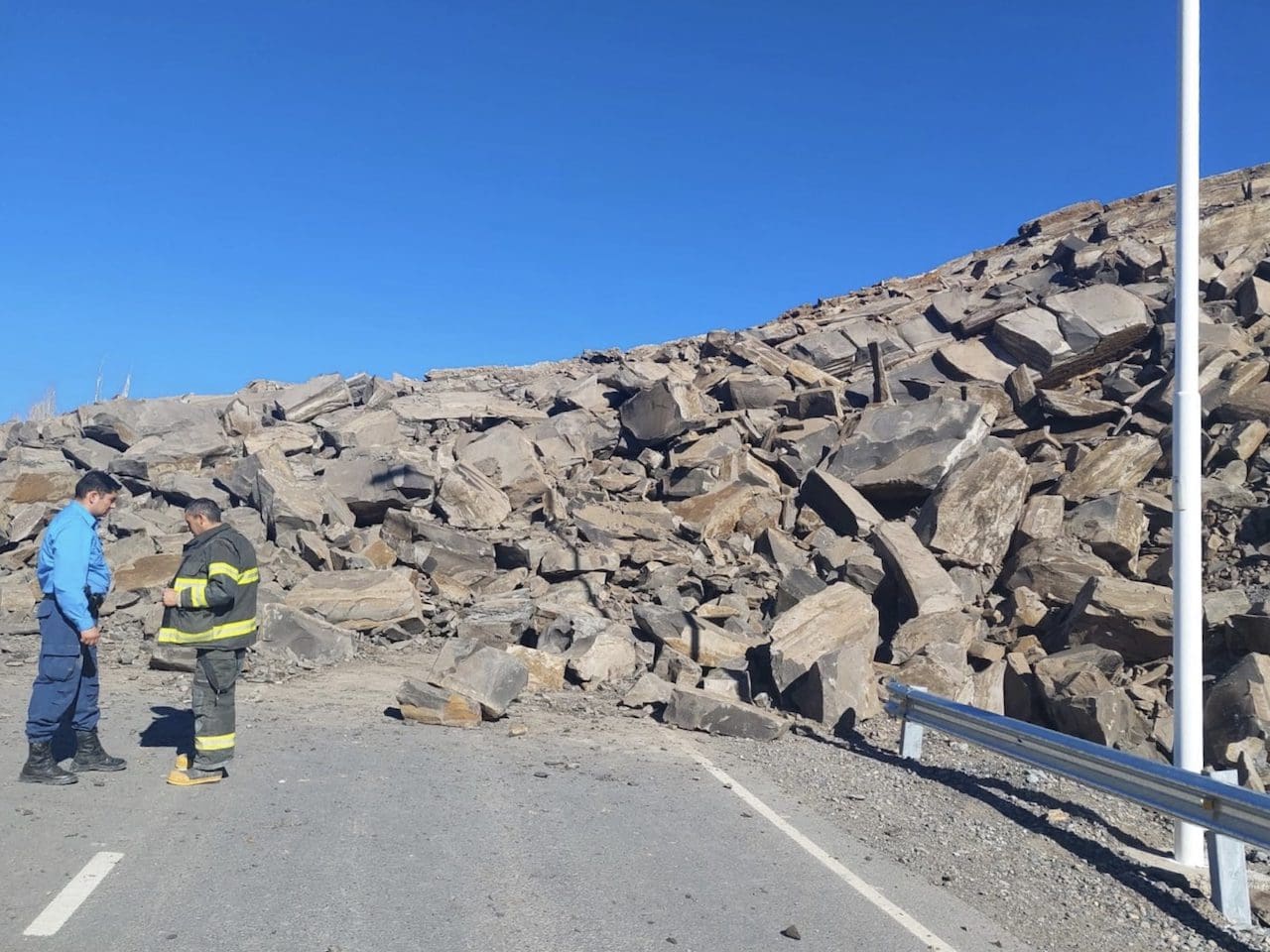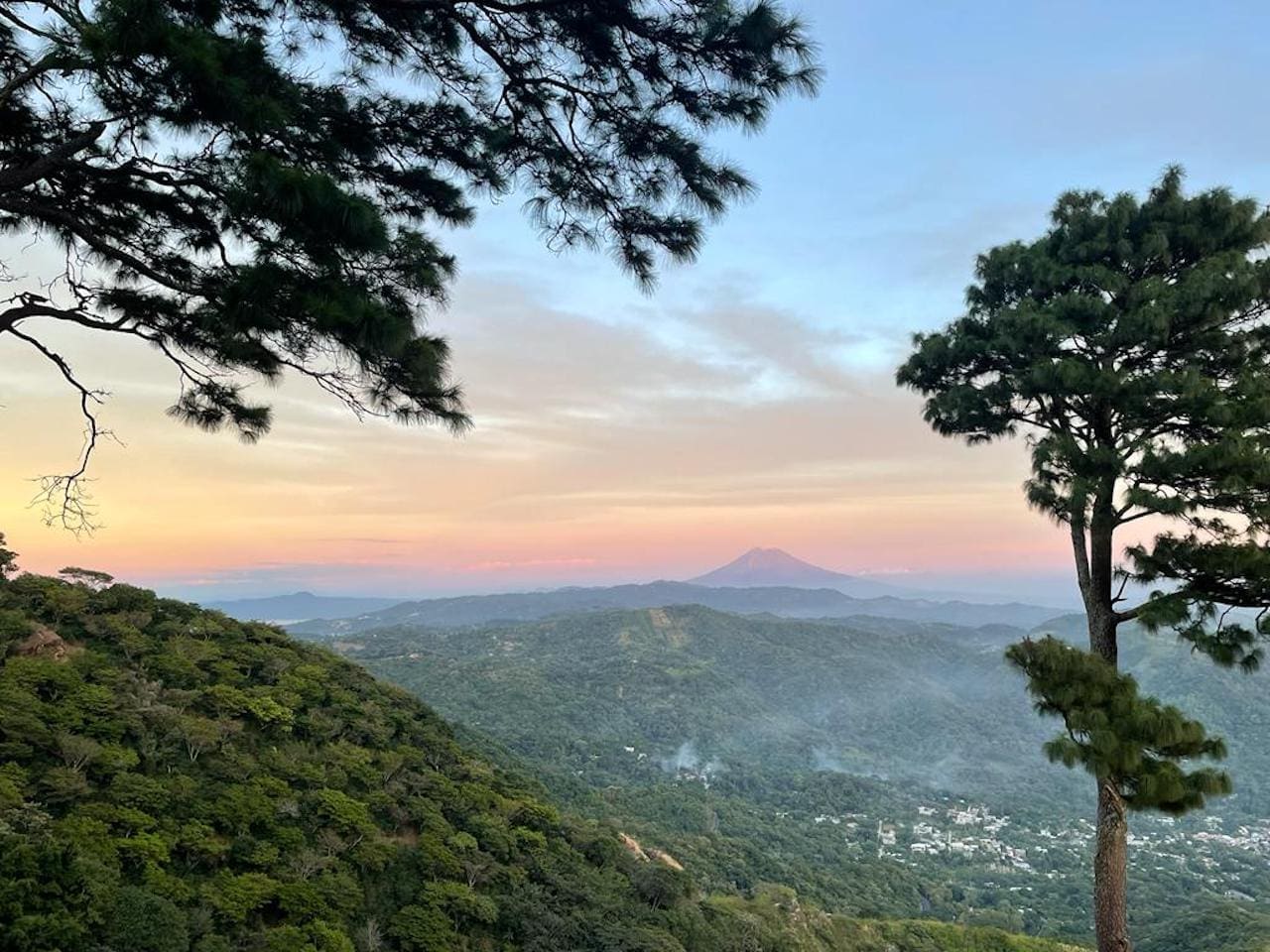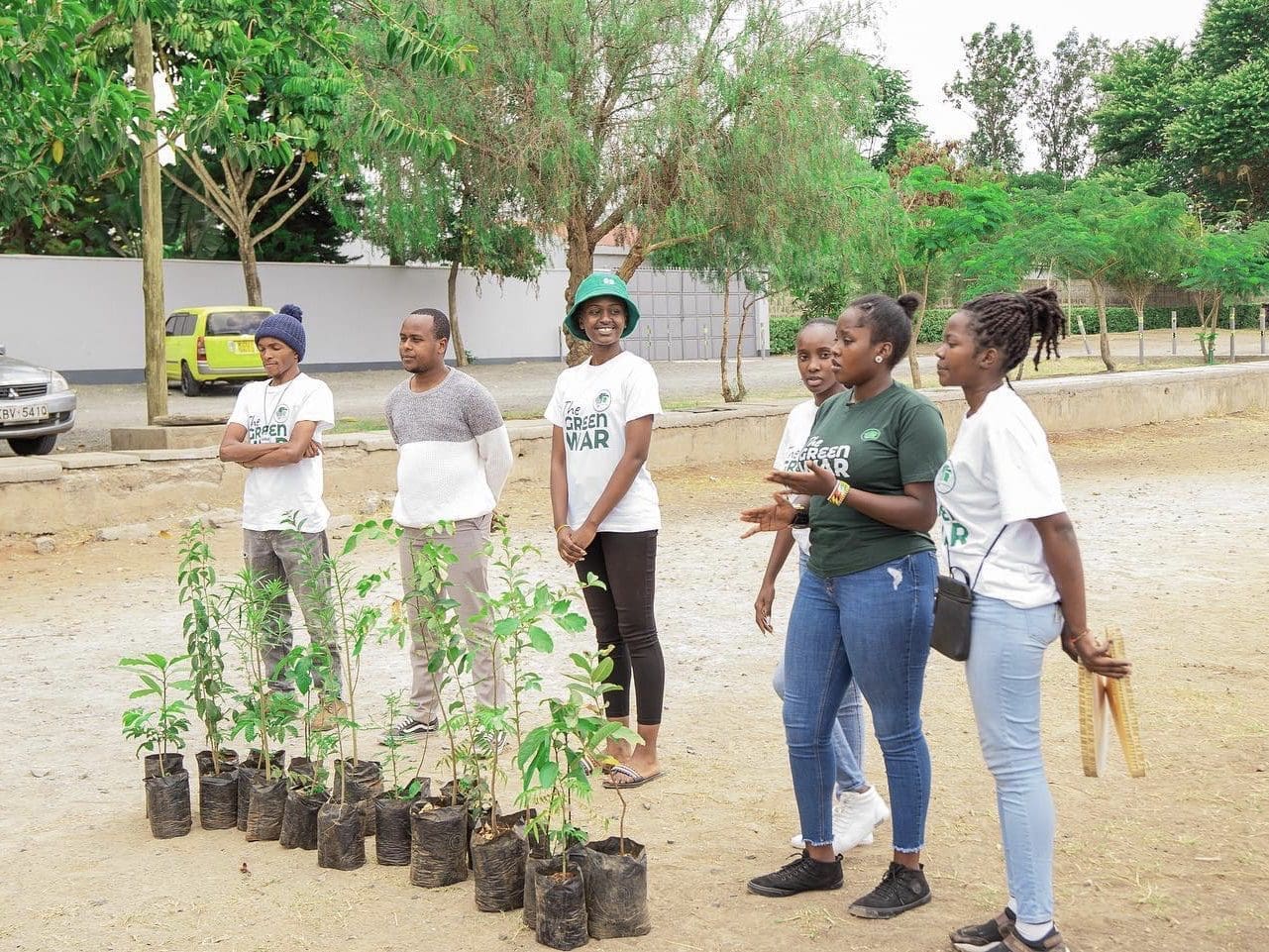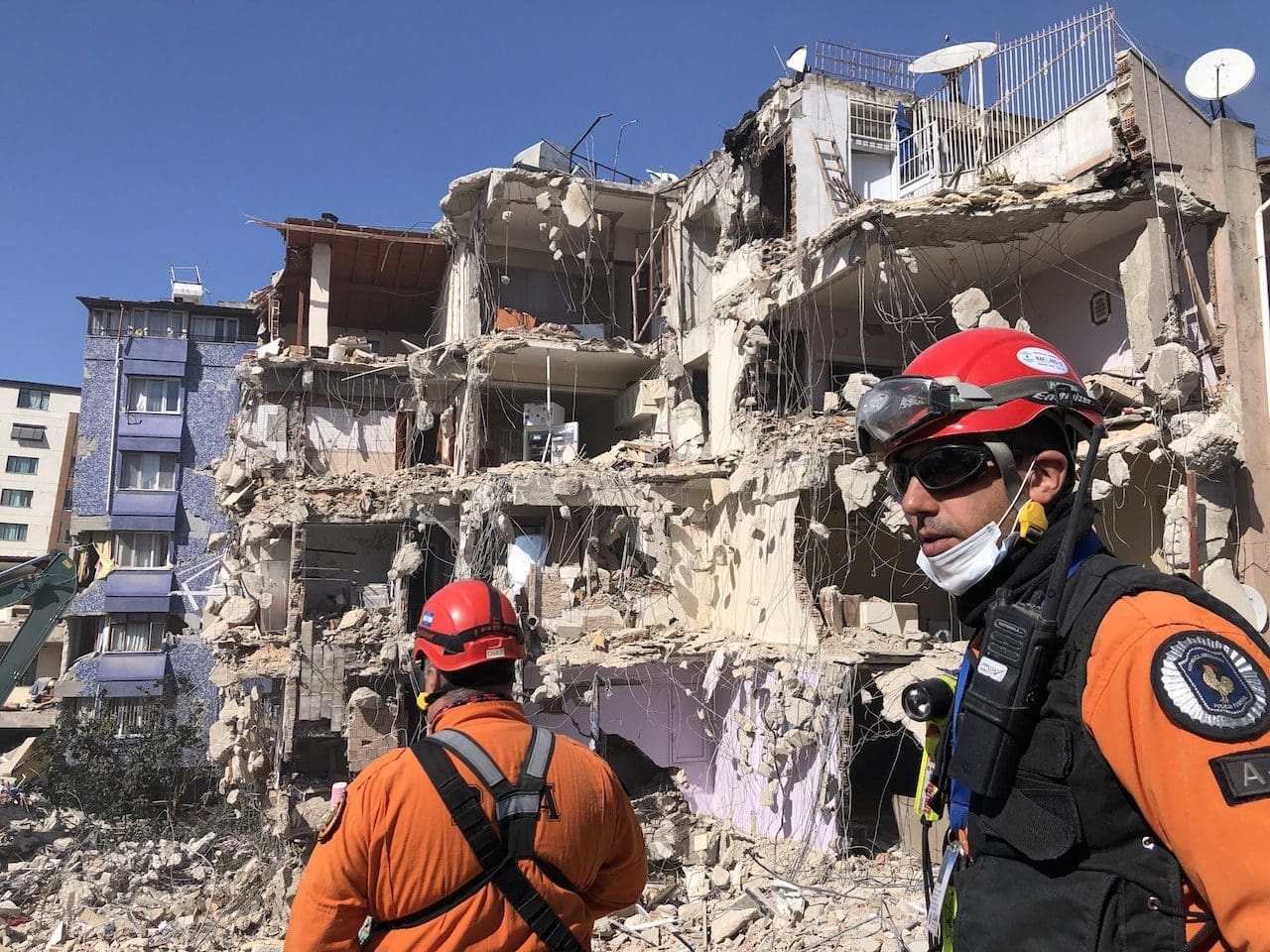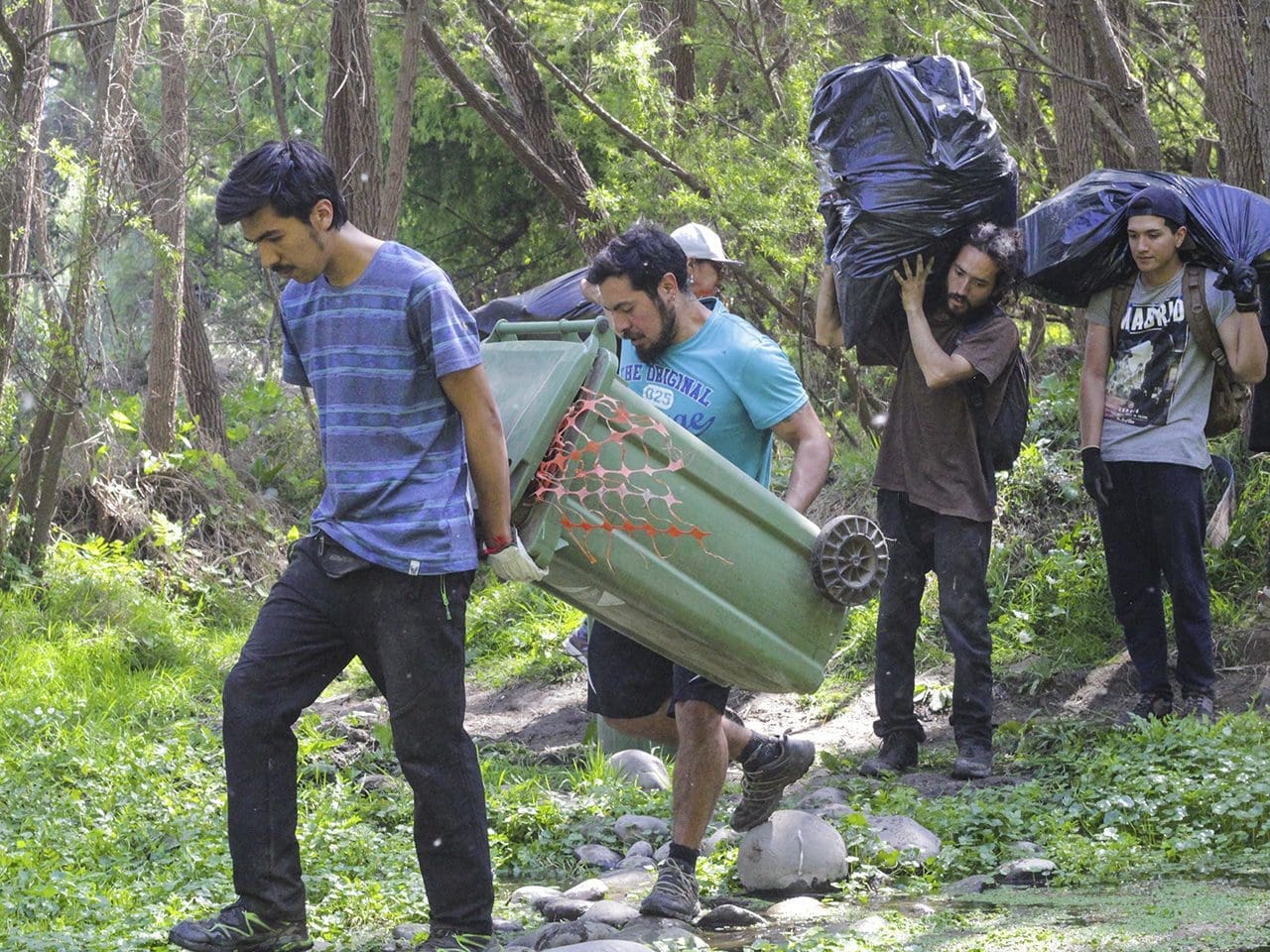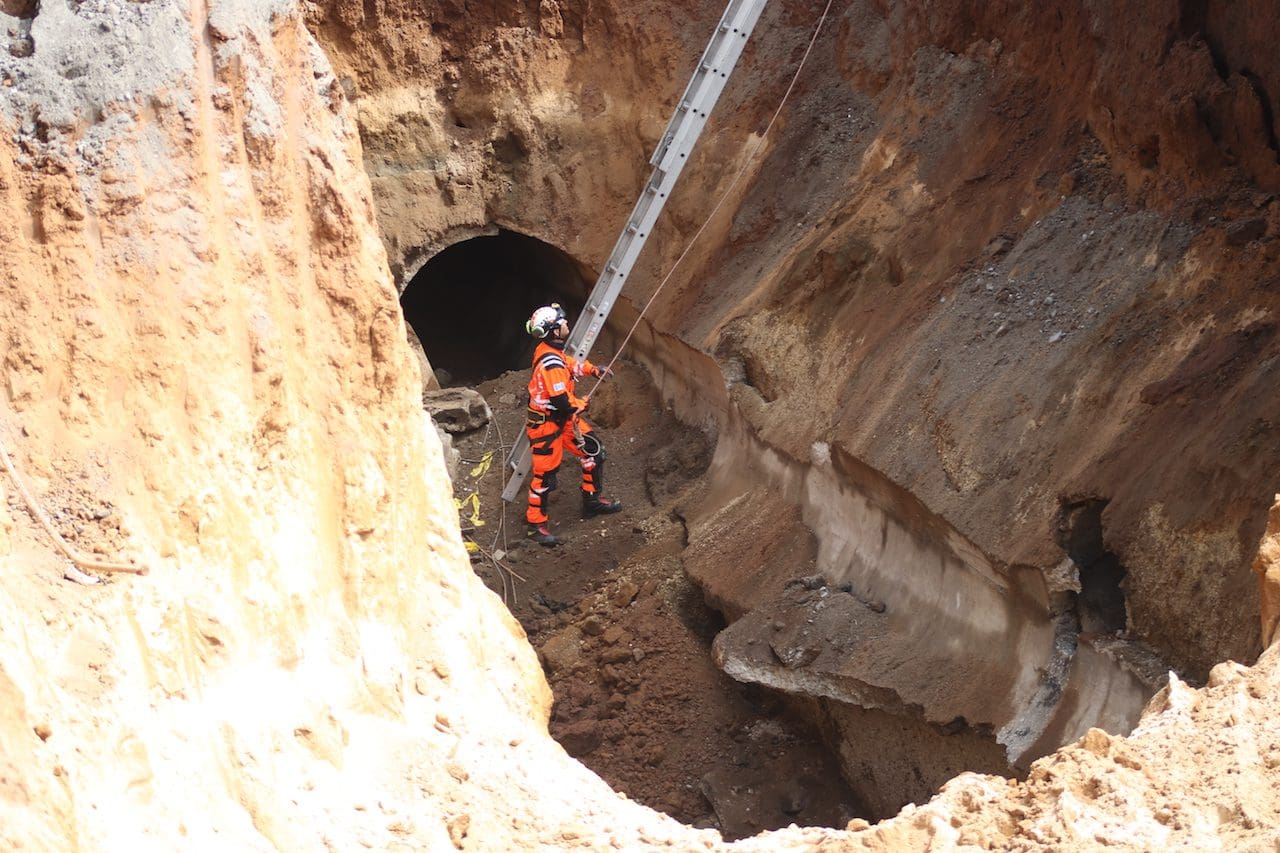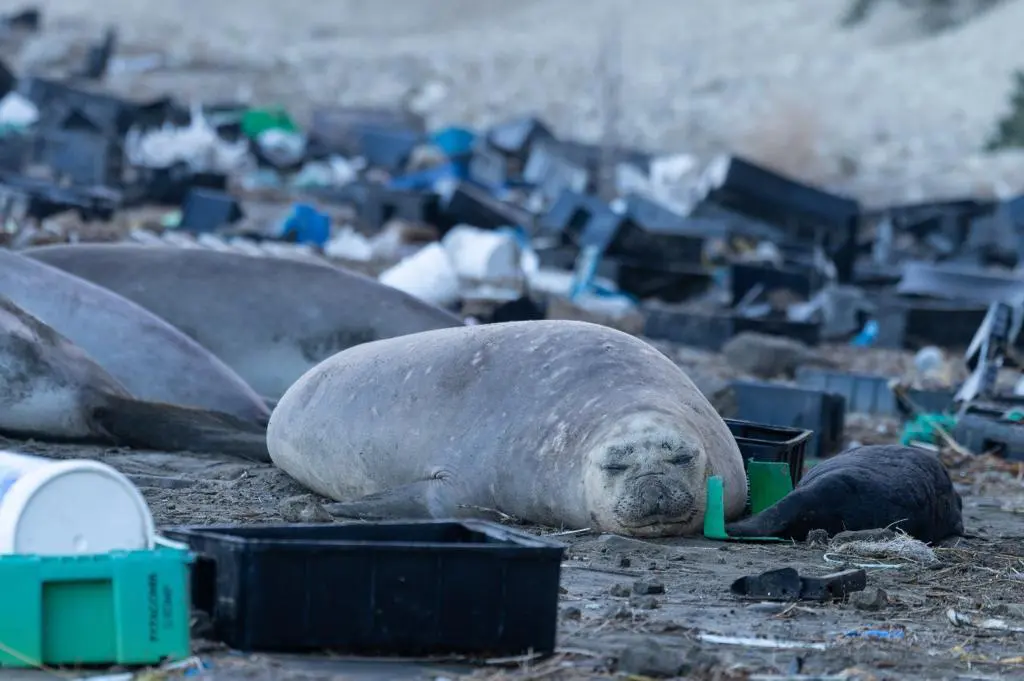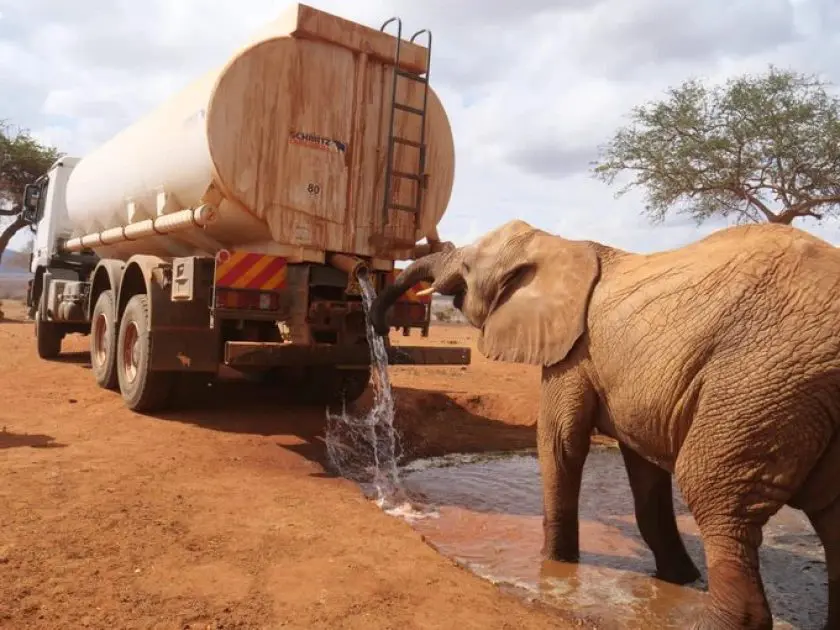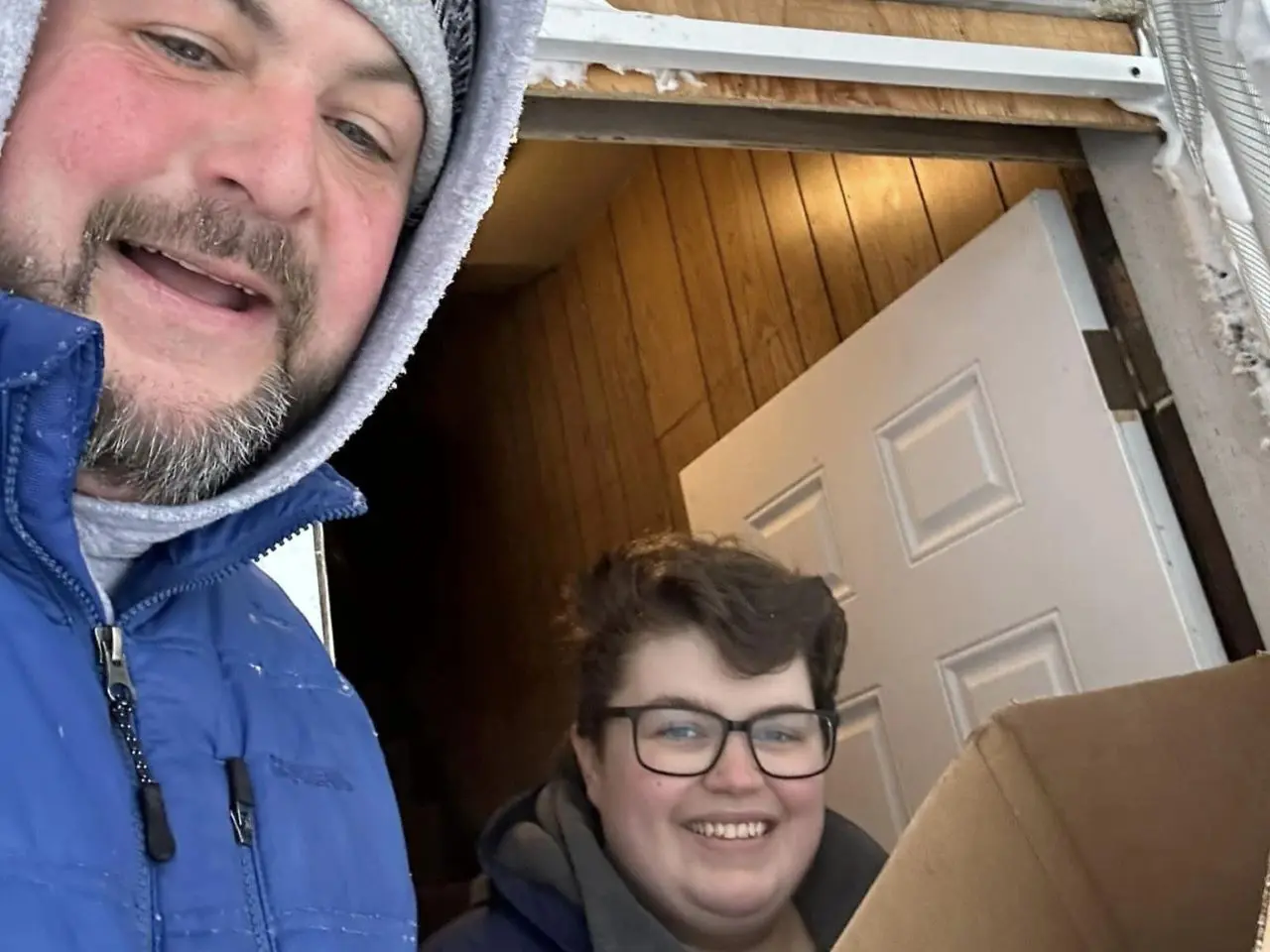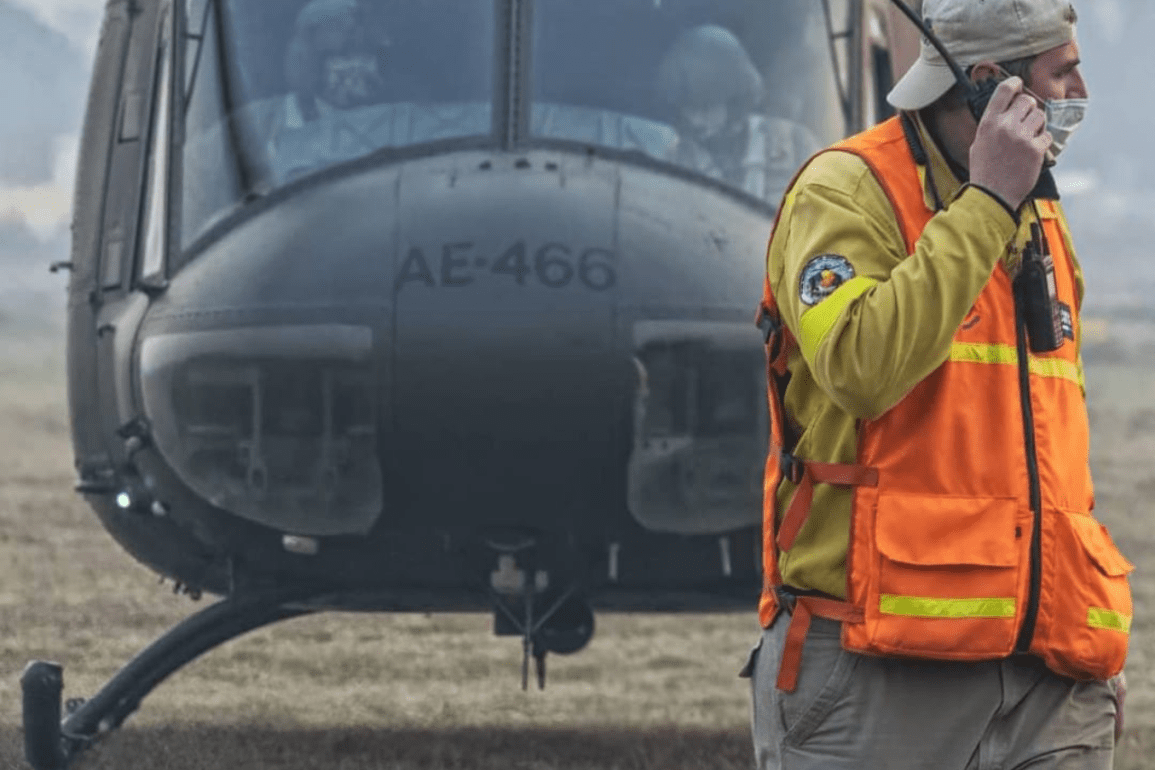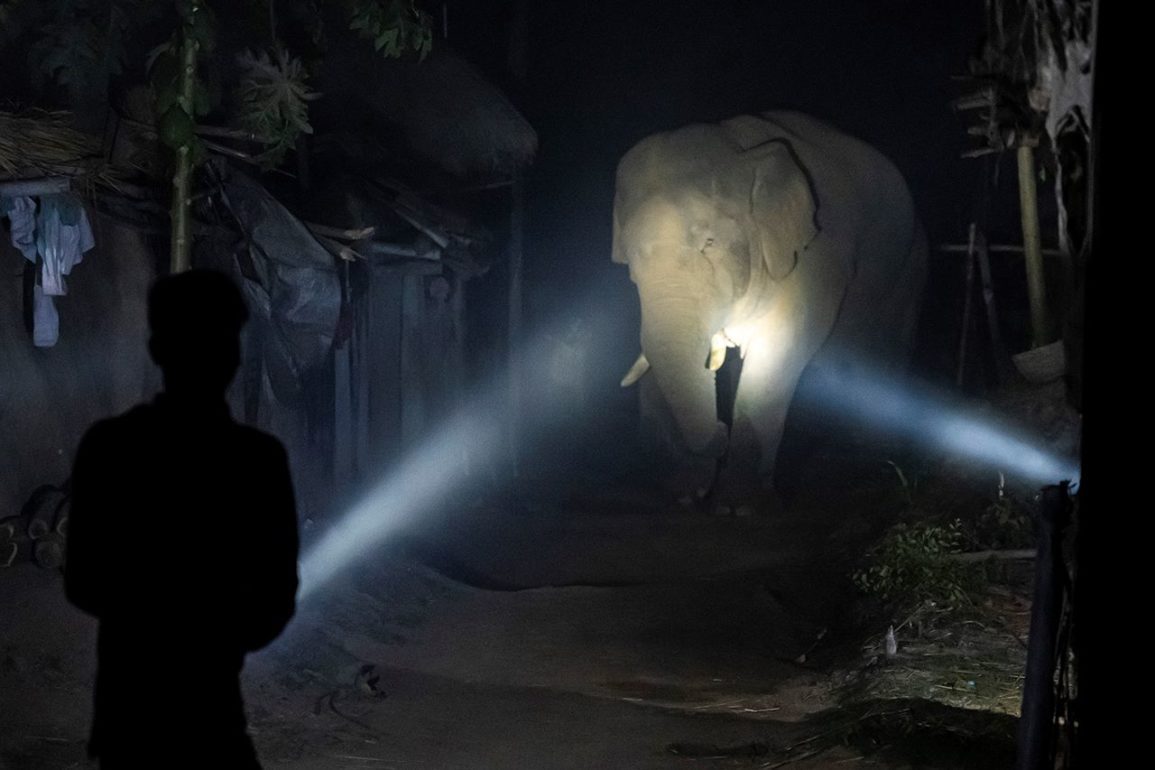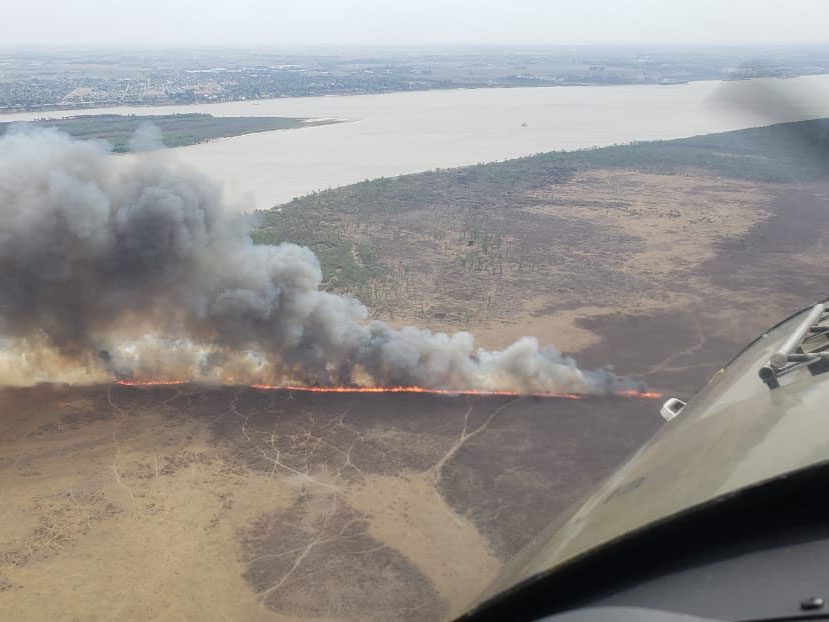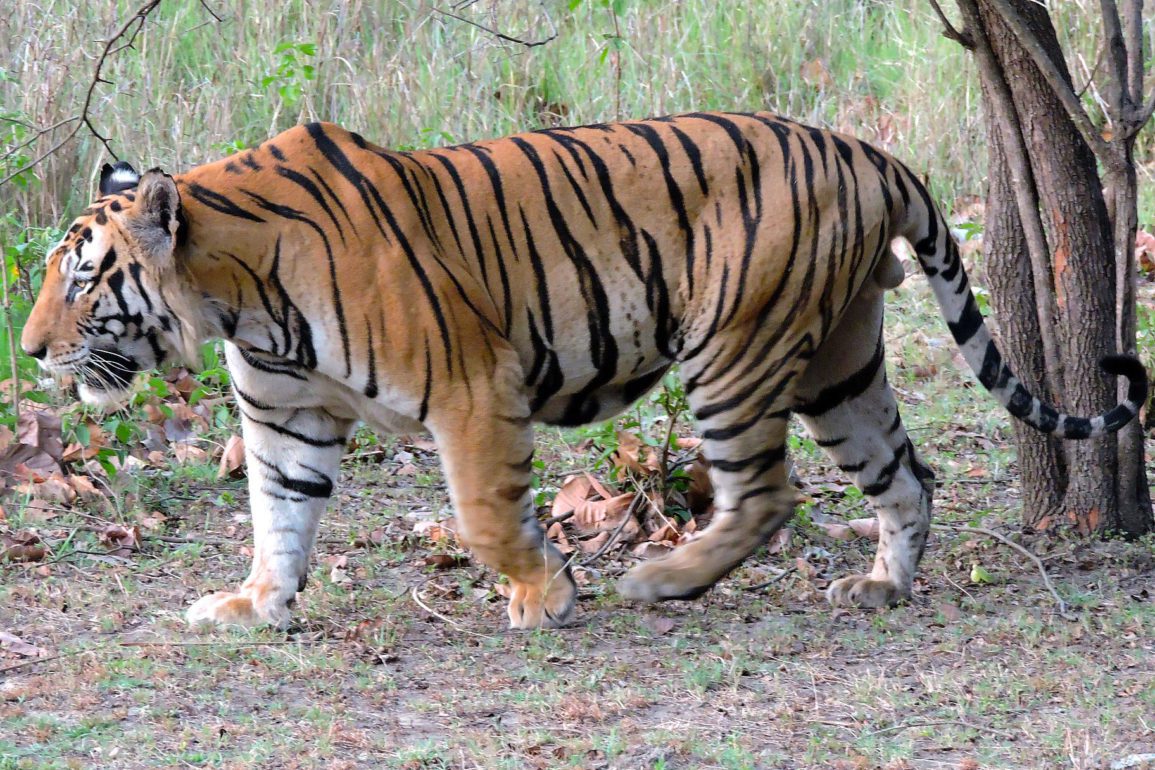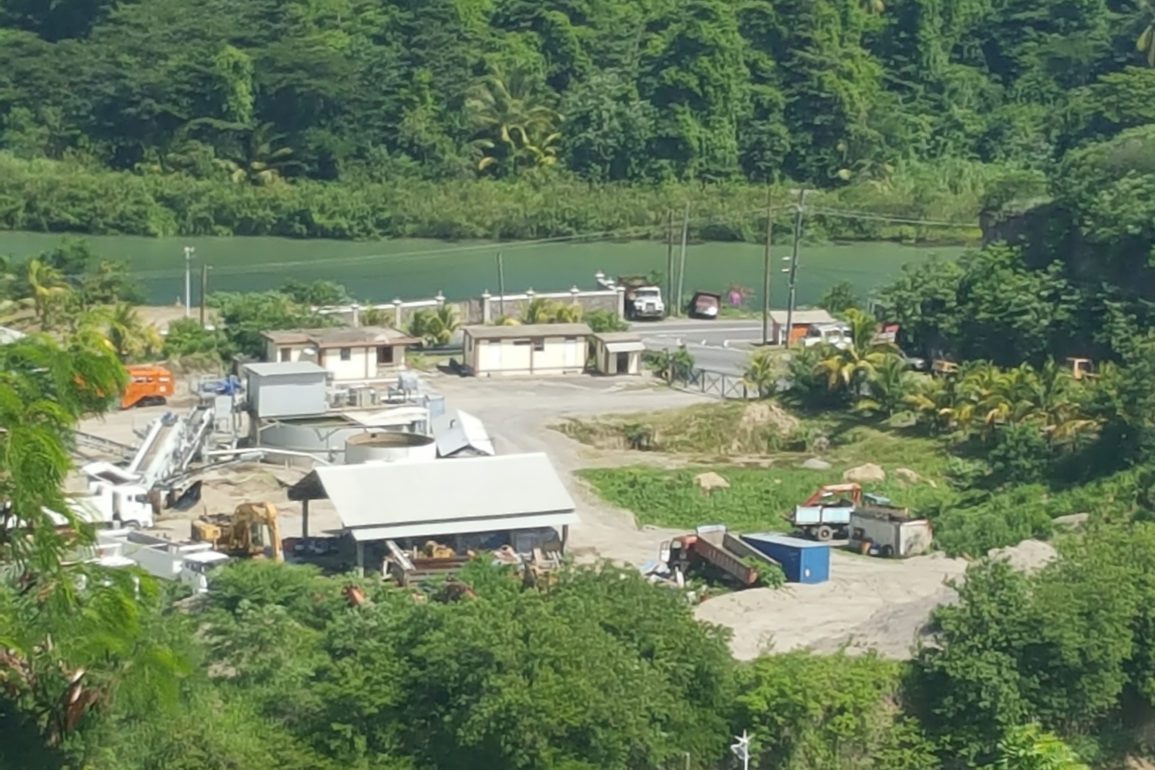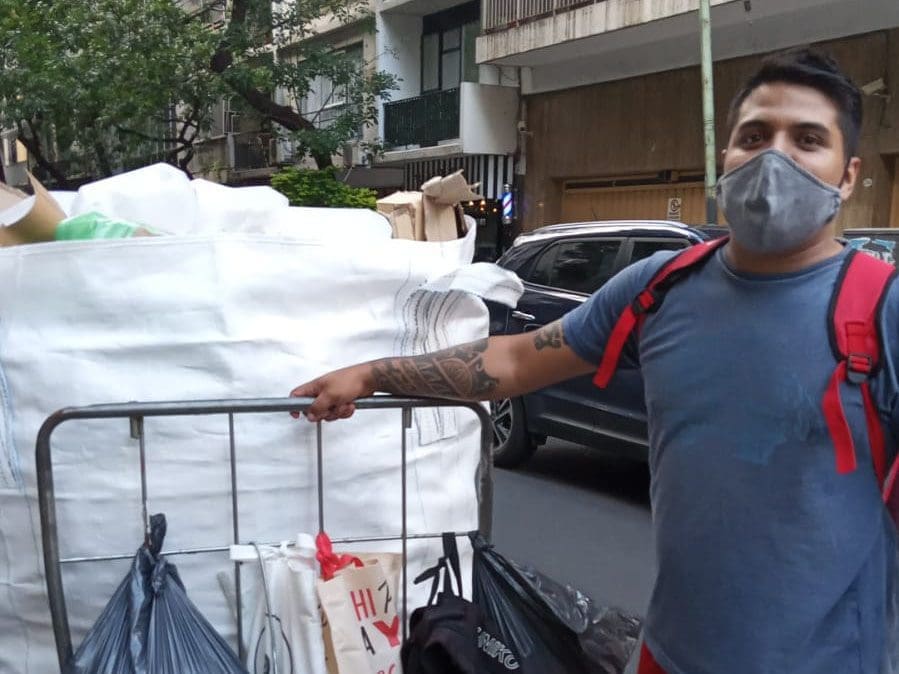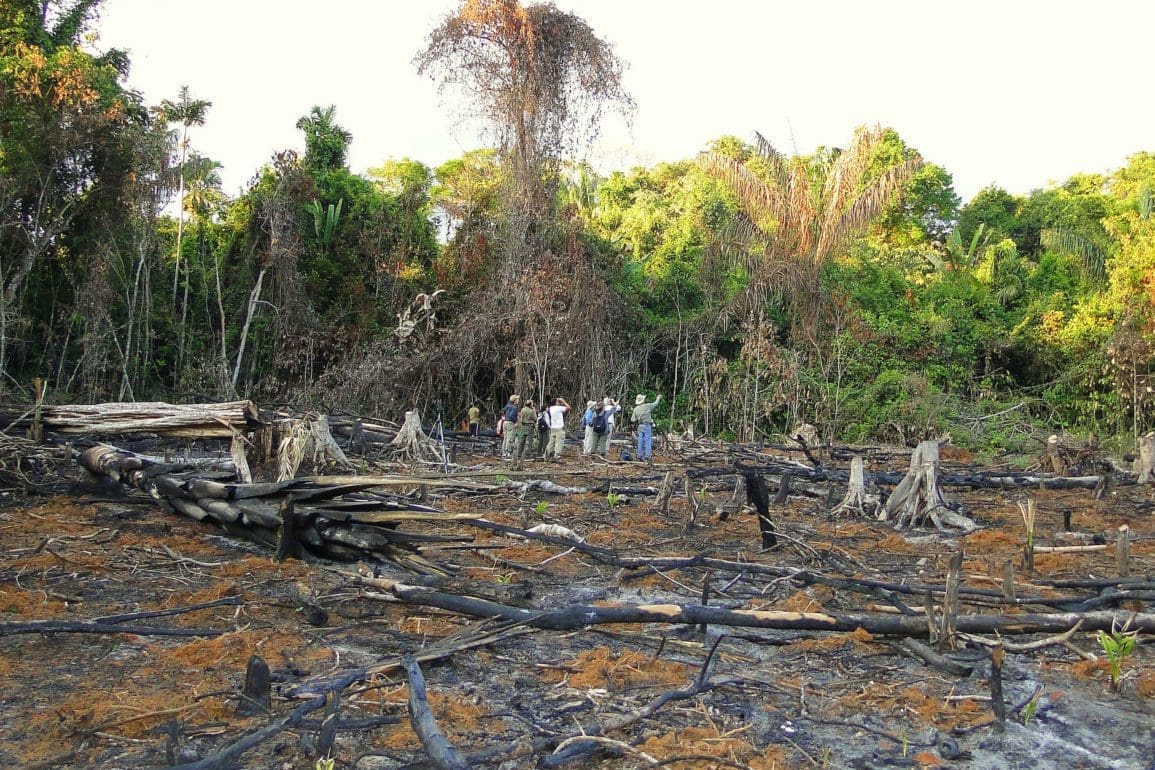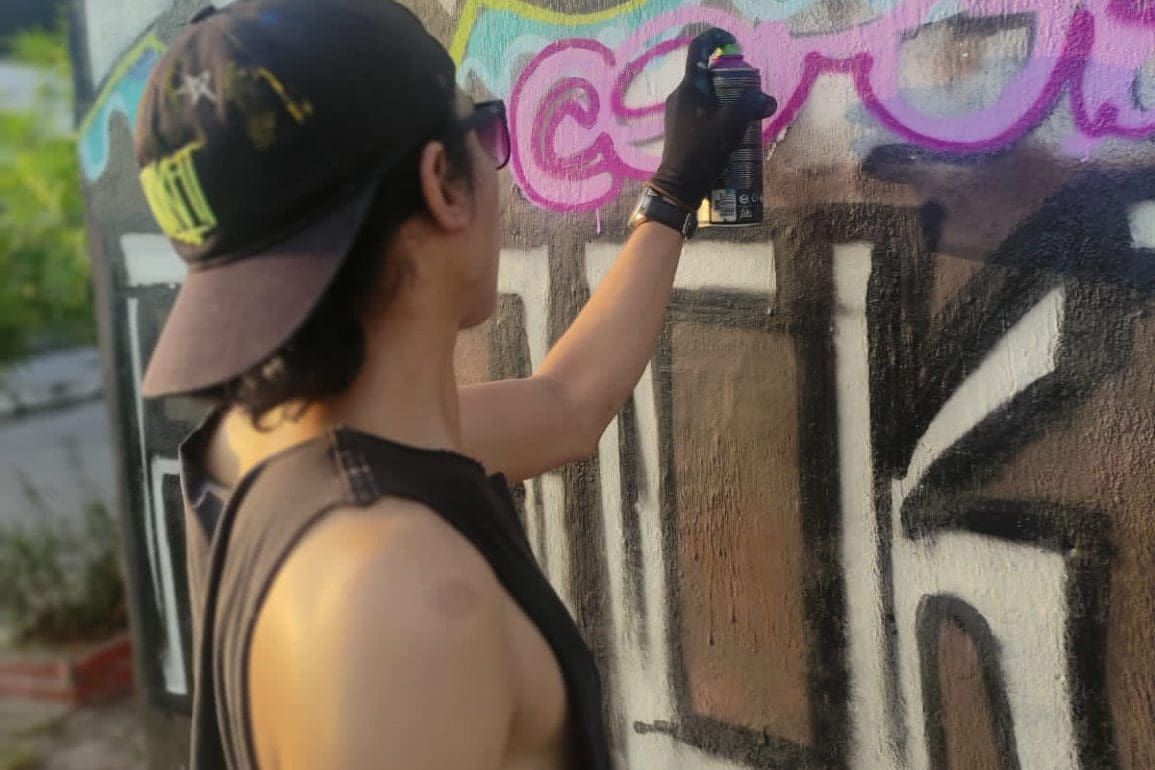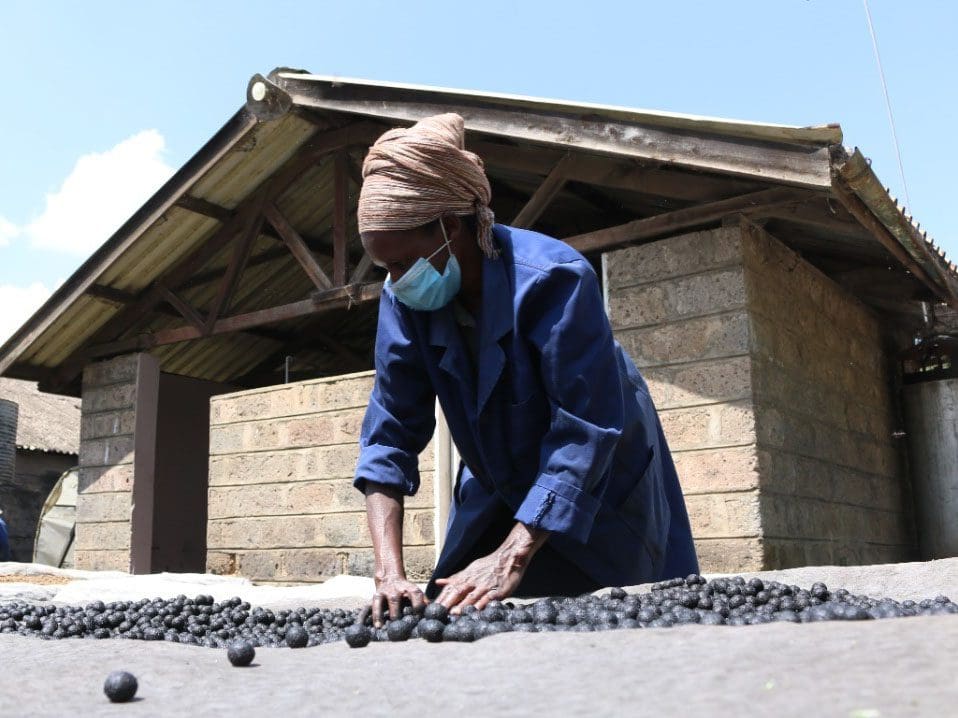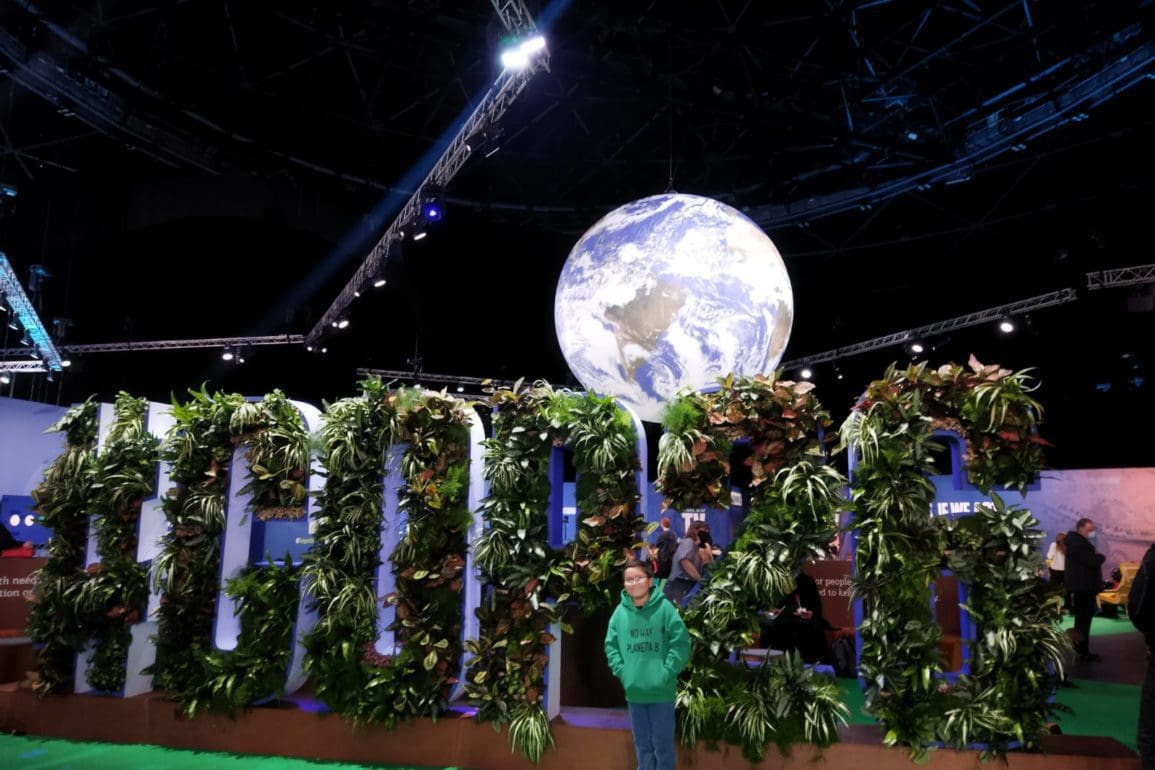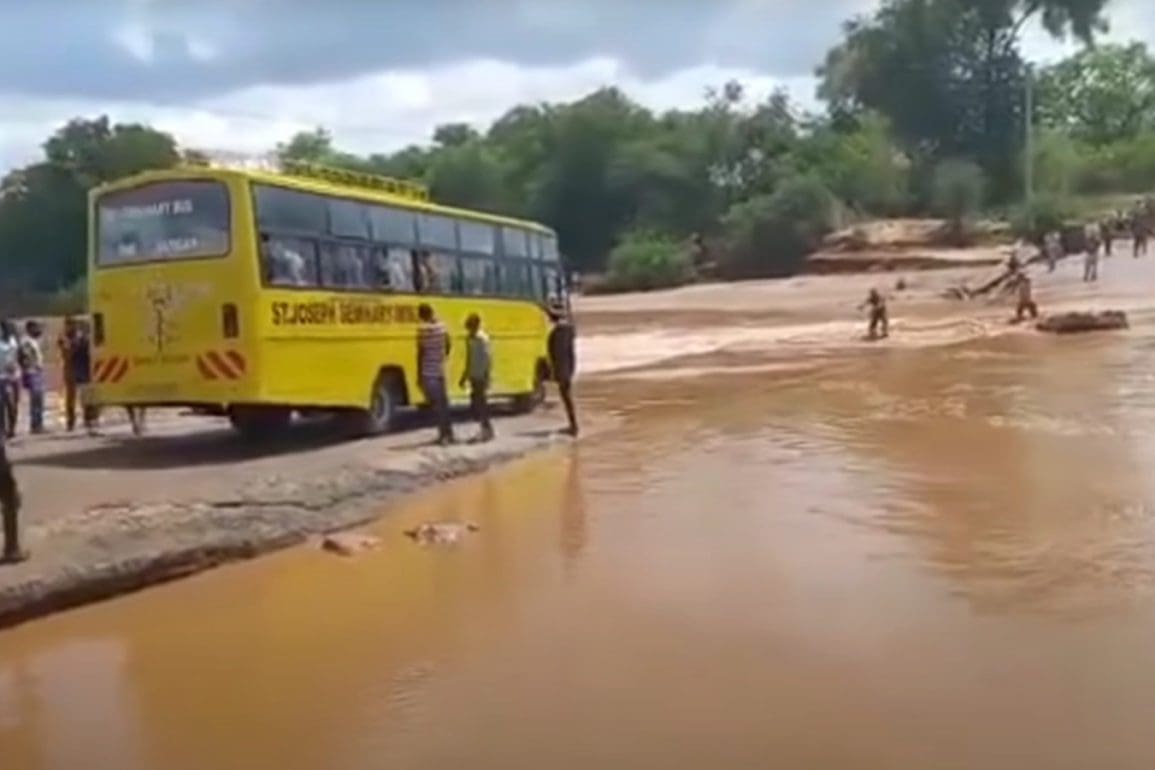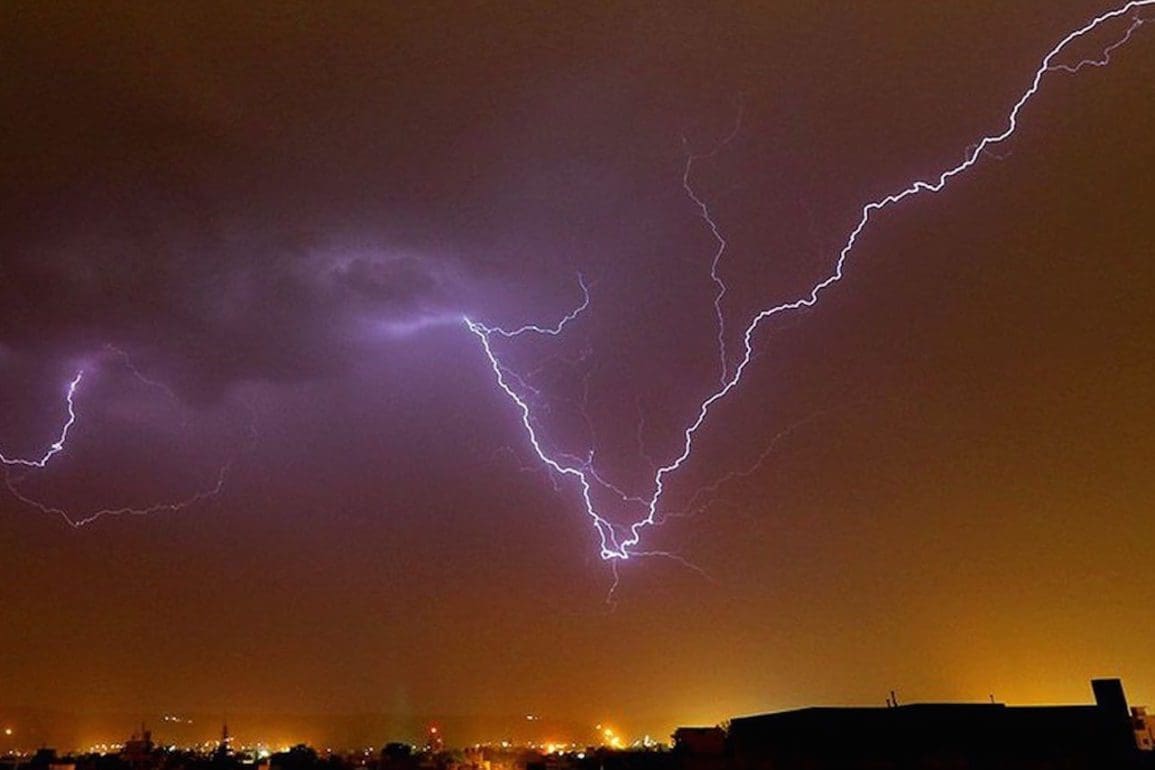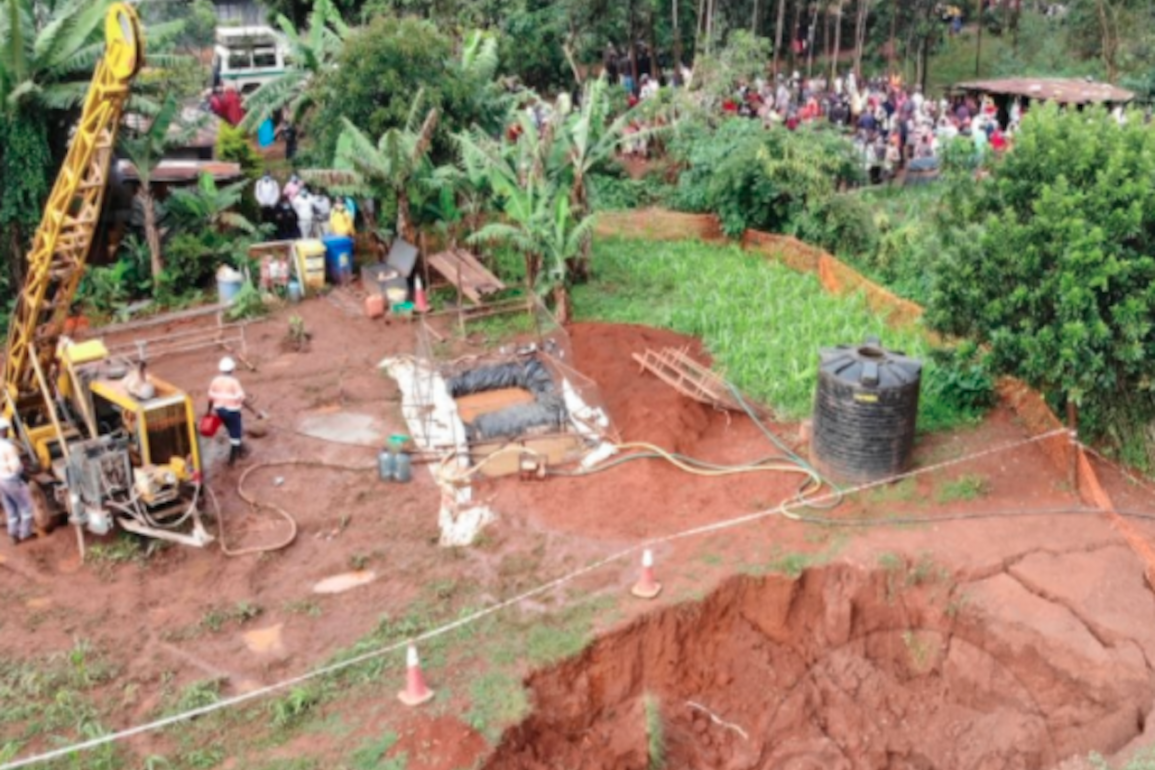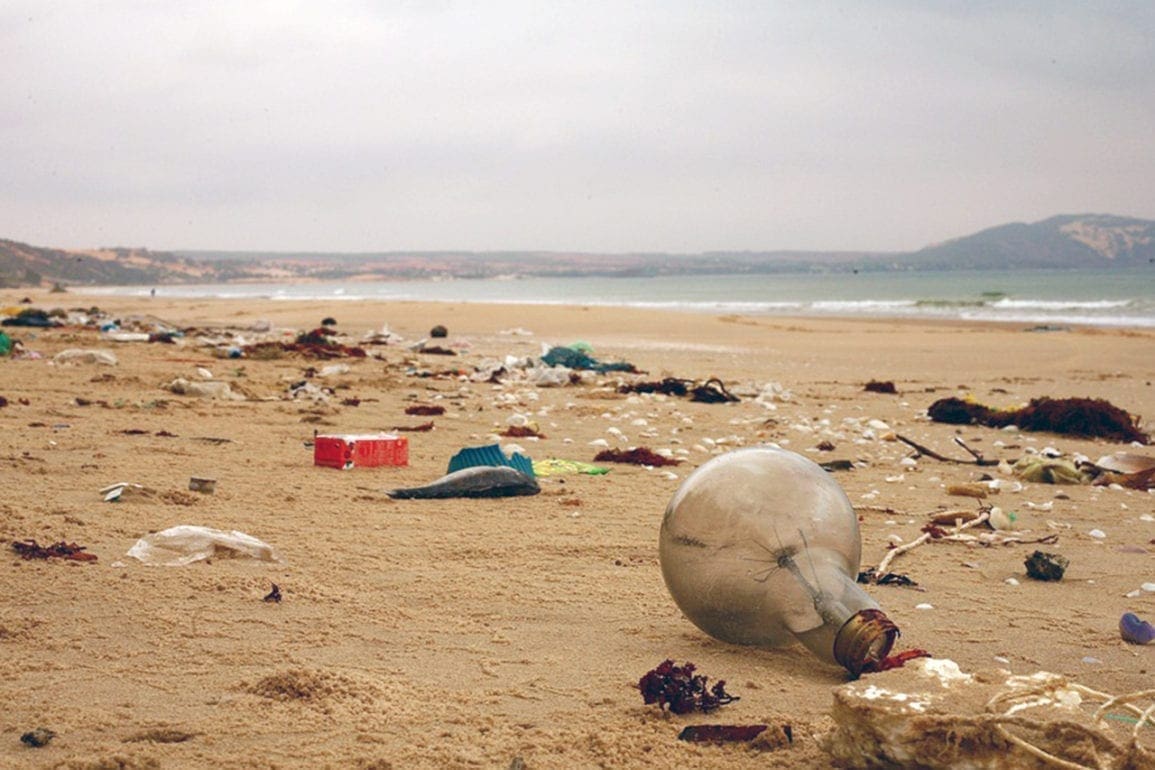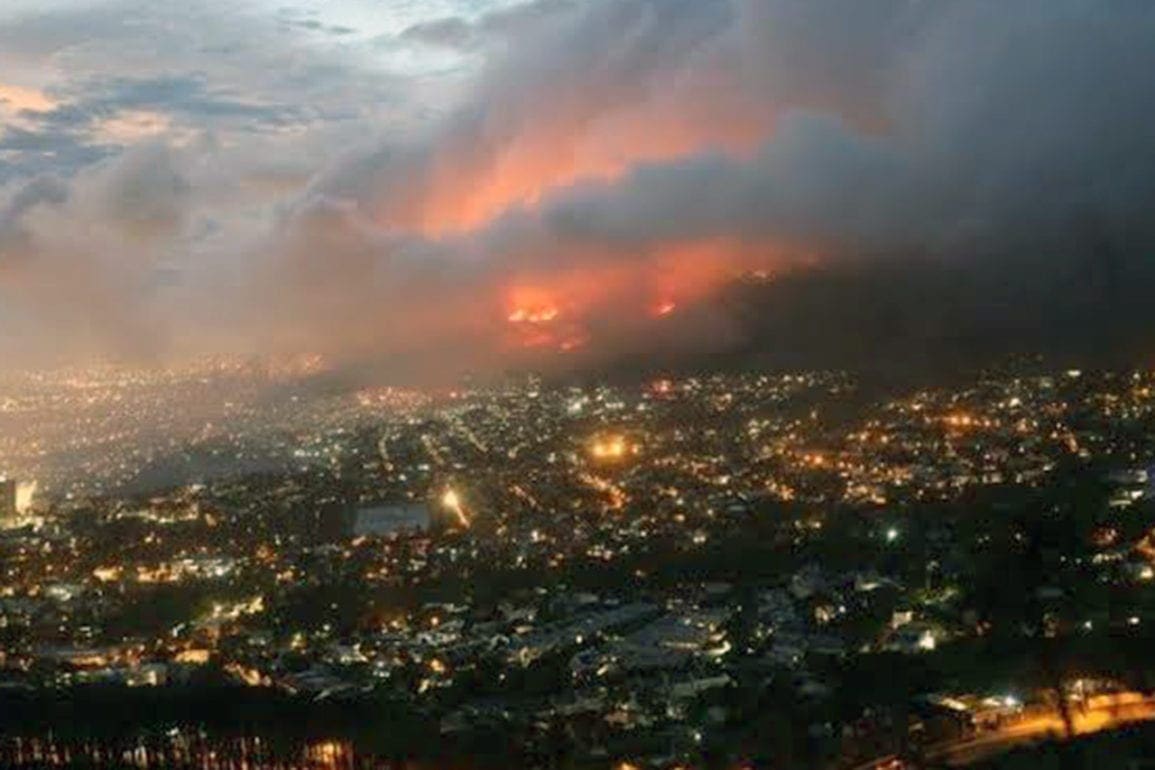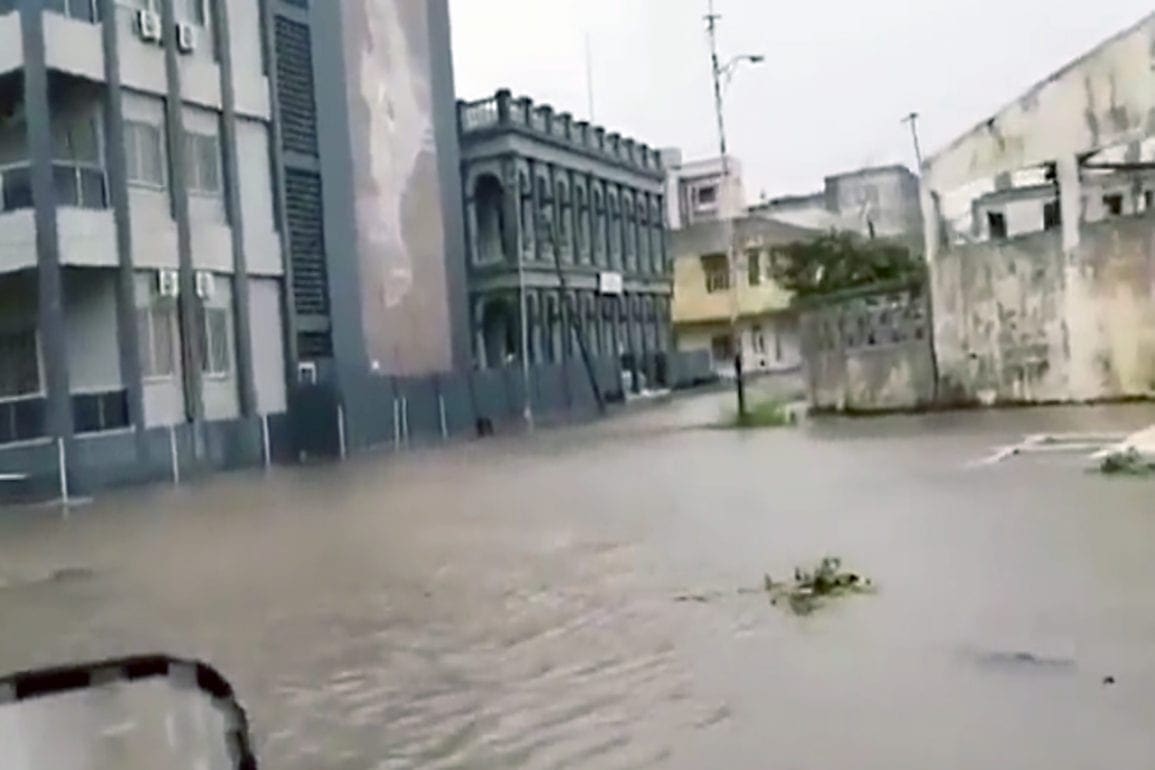Suffocating heatwave in Brazil leaves citizens fearful for the start of summer
As we walk through concrete neighborhoods with no trees, the stifling and unbearable heat closes in on us. It seems worse in impoverished areas. Most years, we feel relief from the blistering summer sun during brief, cooling rains, but this year they are conspicuously absent.
- 1 year ago
November 1, 2023
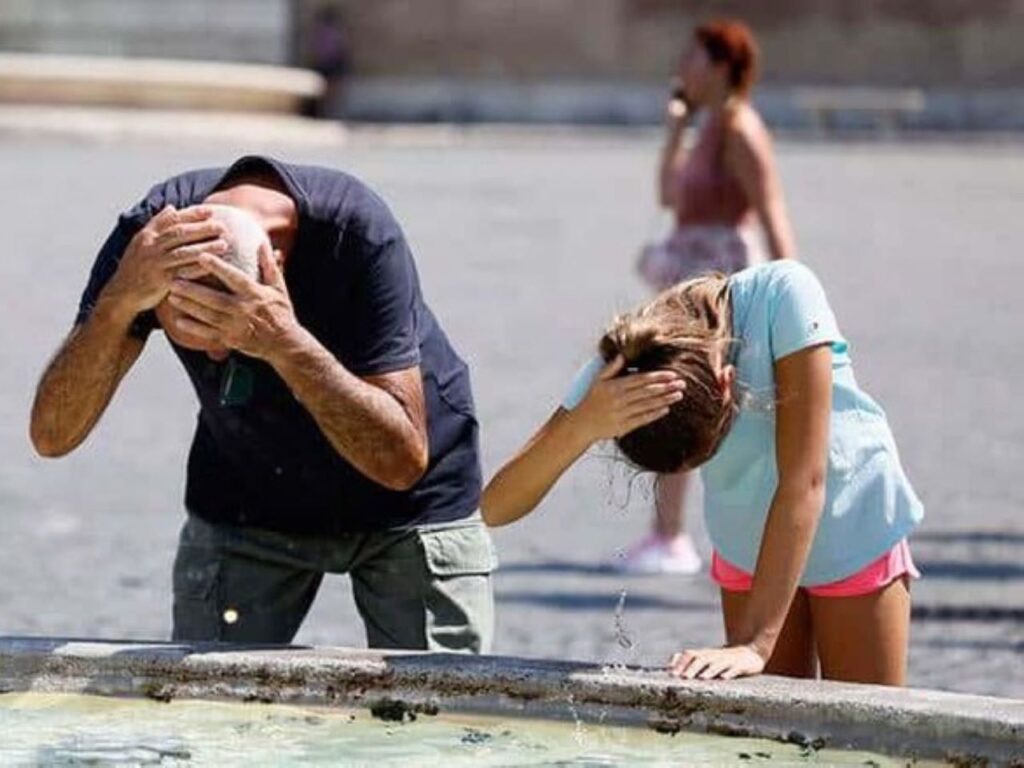 Locals cooling down in São Paulo's water fountain | Photo courtesy of Pablo Giuliano
Locals cooling down in São Paulo's water fountain | Photo courtesy of Pablo Giuliano

SAO PAULO, Brazil — The relentless heat in my city in Brazil has quickly become a public health emergency. In local shops, fans whir ineffectively as the thermometer registers a staggering 40 degrees Celsius (104 Fahrenheit) in the winter. The suffocating heat defies the typical tropical climate of Brazil, thus casting a shadow of dread over the population as summer approaches. [Brazilian summer runs from December through March.]
This experience goes beyond discomfort as the people of São Paulo struggle to endure historic temperatures that shatter meteorological records dating back to 1943. The oppressive heatwave goes beyond an anomaly. Rather, it heralds an unbearably early summer season as our electric bills soar. We cannot afford to overlook the broader crisis at hand: the devastating havoc wrought by human-induced climate change.
Read more environment stories at Orato World Media
Record-breaking heat in São Paulo, locals face uncharted territory
Here in São Paulo, I see firsthand how the heatwave disproportionately affects vulnerable communities. In the favelas [the working-class neighborhoods of Brazil], the lack of air conditioning and fans poses a serious health risk. The heat exacerbates existing conditions, ushering in a surge of heat-related illnesses. Sadly, I worry this may just be the beginning.
The architectural structure of our city worsens the weather conditions. As we walk through concrete neighborhoods with no trees, the stifling and unbearable heat closes in on us. It seems worse in impoverished areas. Most years, we feel relief from the blistering summer sun during brief, cooling rains, but this year they are conspicuously absent.
Amidst official advisories to stay hydrated, we see water disappearing from supermarket shelves. Public transport becomes a crucible of discomfort and tension. The strain is shown on people’s faces as they navigate buses and metros with faulty air conditioning. When I think about what is to come, I feel my body consumed by apprehension. With declining humidity in the Amazon and the rise of more severe weather patterns – including recent and devastating storms in Rio Grande do Sul – fear sets in. We are in uncharted territory.
Signaling a climate crisis: “I see a warning we cannot afford to dismiss”
Here in Brazil, I watch the thermometer as temperatures consistently rise about five degrees above average. Every day feels like an effort just to grapple through the heat and manage skyrocketing energy bills. Inside, fans and air conditioners work overtime, and we all worry, “Will the power grid buckle under this pressure?”
All around me, the most vulnerable pay the price. Children, older people, and those with chronic health issues get rushed to hospitals as they face life-threatening dehydration. The surge in admissions at medical facilities feels terrifying; the heatwaves have proven deadly.
However, this crisis isn’t confined to urban areas. Homes in rural communities, built mostly from flammable materials, are tinderboxes in the face of raging wildfires. When fire surrounds you, it feels like an unyielding and suffocating prison. This year marks Brazil’s worst fire season in 15 years, worsened by climate change and reduced wind currents.
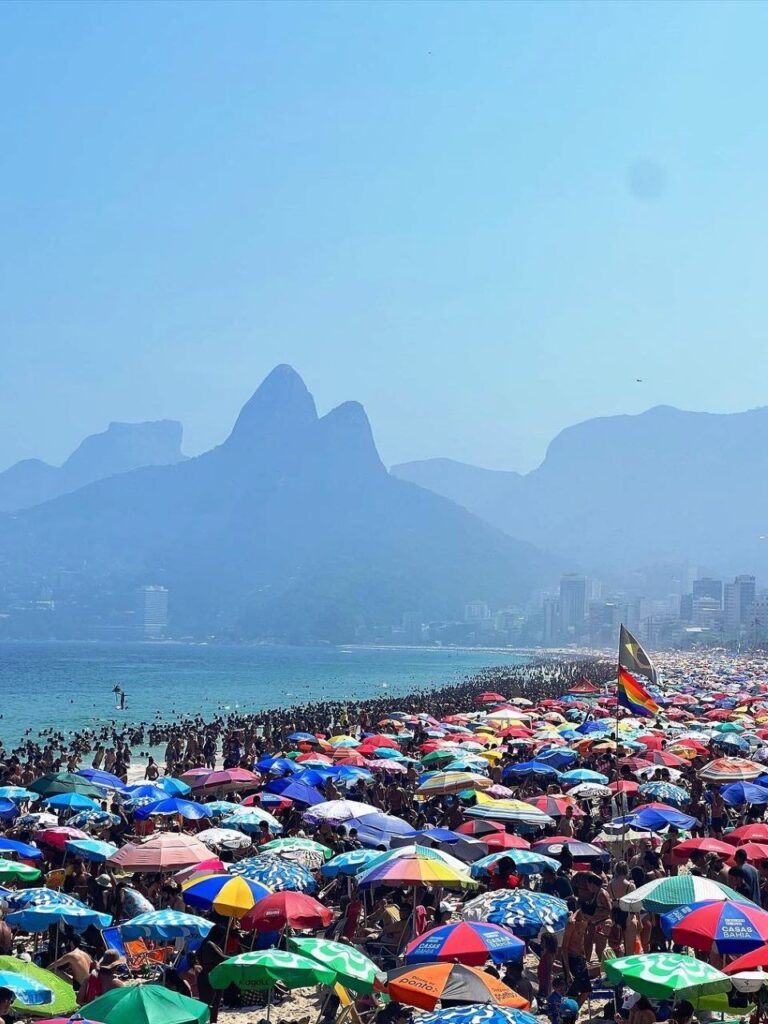
The heat isn’t just Brazil’s problem. The southernmost parts of South America are also facing an exceptionally warm winter, echoing the extreme summer temperatures that recently swept through Europe. It seems each season now arrives earlier, lasts longer, and intensifies year over year. In this, I see a warning we cannot afford to dismiss.
This isn’t a mere glitch; it’s the manifestation of climate change, further intensified by the resurgent El Niño phenomenon.
Elevate voices, Fund truth
Support journalists writing first-person news. Give
Translation Disclaimer
Translations provided by Orato World Media are intended to result in the translated end-document being understandable in the intended language. Although every effort is made to ensure our translations are accurate we cannot guarantee the translation will be without errors.
Related
Author Profile

Mariela Laksman
Image and Sound Designer, Integral Audiovisual and Journalistic Producer, writer, and teacher. I started working when I was very young; Since 2001, I was a producer for different television programs, documentary films, radio, and generating creative content for different organizations and companies. I won the award: "Nuevo Sudaca Border" with the microfiction book "Un Tigre con la Boca Abierta", for Eloisa Cartonera Editorial. I am passionate about telling stories and writing.
Author Bylines
- Venezuelan journalist escapes threats, fights for truth in exile, dreams of returning home
- Doctor reflects on residency struggles, speaks out after younger physician’s tragic suicide in Colombia
- Journey to Tuvalu, the vanishing island battling rising seas and preserving its soul
- Fighting for Uganda’s forests and freedom, Kampala activist Fights pipeline and persecution
- Youngest certified farmer in the US, Kendall Rae Johnson inspires sustainability and community
- Father fights for justice after son dies from military abuse in argentina, system under scrutiny
- From film to war: my journey as a drone operator in Ukraine
- Once preparing for the Paris Paralympics, Gazan para-cyclist now pedals through the wreckage of war
- Volunteers aid flood victims in Spain, turning soccer field into shelter for rescued animals
- Decade after Ayotzinapa tragedy, survivor fights for justice as 43 students remain missing
- Journalist documents displaced indigenous communities in Guatemala amid violent land disputes
- Emilia Lozano: empowering migrant youth through compassion and resilience
- Afghan journalist’s journey: from disguised boy in Bamiyan to exile and global advocacy
- Santa Cruz fires: a journalist’s journey from witness to wildland firefighter
- New York City doctor offers free plastic surgery to victims of antisemitism, faces onslaught of hate
- Surviving my nightmare in Gaza: captured, tortured, and rebuilding amid war
- Tragedy at Allenby Bridge: Israeli woman loses husband to shooting
- Gaza and Lebanon: doctor bears witness to horror and fights for awareness
- Face to face with a murderer: journalist investigates failed system, killing of Ámbar Cornejo
- Crónica TV journalist brutally assaulted by police while covering student protest in Argentina
- Her father finally spoke: Holocaust survivor’s daughter preserves story of suffering and survival through art
- Bolivia battles catastrophic wildfires, threatening communities and nature
- Heartbreak in Tulum: young man dies of monkeypox after doctors ignore his symptoms
- Grandmother uncovers human trafficking ring, rescues 17-year-old granddaughter
- Cybercirujas bridges digital divide, empowers underserved communities with refurbished computers
- Psychiatrist dresses as clown to bring healing to addicts in Cracolândia
- Hurricane Milton devastates Florida: chaos, destruction, and a community’s resilience
- Spanish boy leaves monastery after years as a Buddhist monk to seek freedom
- War in Gaza: chef who lost everything offers comfort through makeshift meals
- UN peacekeeper confronts escalating conflict in Lebanon, committed to maintaining peace amid attacks
- Photographer captures the faces we will never see: documenting the global migrant crisis
- IDF soldier breaks silence on violence against civilians in Gaza, refuses to fight
- Community mobilizes aid for displaced families amidst ongoing Israeli attacks in Lebanon
- After two-year home confinement Afghan woman flees Taliban rule, continues medical studies in Scotland
- Thailand’s landmark marriage equality bill goes in effect in January 2025
- Police savagely beat elderly people to the ground amid protests against presidential veto of pension increase
- Beirut hospitals overwhelmed as conflict escalates, civilians face widespread displacement and fear
- Peruvian coffee brand Café Femenino lifts women out of poverty and submission
- Hydrant airplane pilot battles ferocious blaze for weeks, describes devastating scene from the sky
- Gaza doctor urges ceasefire: children endure disease, displacement amid humanitarian crisis
- One year later, Israeli survivor launches global exhibition recreating scene of Supernova Music Festival
- Three years after fleeing Kabul, Afghan photographer rebuilds her life in Paris, continuing to document women’s strength
- Surgeon serves in Gaza amid Israeli airstrikes: “Parents brought in lifeless bodies, begging us to revive them”
- Blind man identifies birds by sound memorizing 3,000 bird calls, named to 2024 Explorers Club 50
- First female sailor to spend winter solo in the Arctic: eight months of survival and self-discovery in Greenland
- Surrogate mother delivers stillborn baby: Biden signs Maternal and Child Health Stillbirth Prevention Act
- Social worker in Mexicali on front lines of migrant crisis: “I witnessed women whose vaginas were torn apart by machetes”
- An Amazon expedition: adventurer discovers colossal green Anaconda in Peru’s untamed jungle
- Growing up in extreme poverty, Ugandan man transforms lives of over 10,000 vulnerable children
- Somali nurse fights to end female genital mutilation, raises awareness after years of pain and trauma
- Invisible Cities empowers formerly homeless individuals to lead unique urban tours in Scotland, redefining travel and breaking down stigma
- Surf photographer captures thrilling waves at 2024 Paris Olympics, highlights oceanic power and beauty
- Estonia native Jaan Roose crosses the Strait of Messina on a record-breaking 3,646-meter slackline
- “As a 44-year-old, I have never walked barefoot in the grass:” Man with EB has skin as delicate as butterfly wings
- Peruvian music icon Milena Warthon revives Andean indigenous traditions, inspires youth with cultural pride
- The Silver Maiden: 71-year-old skateboarder Lena Salmi challenges aging norms in Finland
- Albino actress overcomes discrimination and abuse, champions rights for people with albinism
- Cusco native develops fog catchers, bringing water and hope to Peru’s driest communities
- “I refuse to live hooked to machines or endure suffering that cannot be managed:” woman pleads for dignified death in Chile
- Symphony of the sea: marine biologist harmonizes music and science to decode ocean sounds
- 10-year-old becomes India’s youngest diving instructor, cleans thousands of kilograms of plastic from the ocean
- From the open door of a helicopter, award-winning photographer presents breathtaking views and hidden treasures
- Photographer wins 2024 World Press Photo contest for years-long project capturing the Mapuche indigenous community
- Colombian DJ survived Hamas attack at Supernova Music Festival, transforms trauma into healing music
- Michelin-star chef transforms luxury cuisine into lifesaving meals for refugees in Greece and war-weary citizens in Ukraine
- While nearly 500 Ukrainian athletes, trainers killed during war, twin sisters compete in 2024 Paris Olympics
- Former incarcerated drug dealer returns to the scene of crime: launches popular “ConBody” fitness business
- Father uses artificial intelligence (AI) to talk to his dead son: next step, 3D hologram video calls
- Imprisoned and tortured for years: exiled Cuban journalist arrives in America
- Refugee in Rafah: college student loses hope in Al-Mawasi camp
- In Gaza, he taught thousands of children to swim, now man counts the deaths of former students
- On the border with Lebanon, Blue Bus chef operates last remaining restaurant, dodges missiles to feed soldiers
- Journalist reporting on Ley de Bases bill assaulted by rioters in Argentina, car set ablaze
- Olympic rower forgoes Paris to rescue Brazilian flood victims: “I needed to row where my heart took me.”
- In war-torn Ukraine, Russian missile strike destroys Okhmatdyt Children’s Hospital in Kyiv
- Blind Spanish surfer conquers world championships, sets sights on 2028 title
- Romantic getaway turns into fight for survival: tourists stranded amidst violent protests
- Doctor offers lifesaving aid to flood victims in Brazil, pleads for a climate change wake-up call
- Women physicians call out colorism in South Africa, help skin-bleaching victims heal
- Capital of Honduras on lockdown as deadly pollution threatens public health
- Transformative teaching: Educator embraces unique challenges at Indigenous school in Tucumán mountains
- Police charge peaceful protest: councilman who tries to protect people is severely beaten
- Devastating floods in Brazil wash away man’s restaurant, shatter dreams and livelihood
- After October 7, life in Gaza becomes more sinister for Palestinian doctor and his family
- Alejandro Cegarra’s haunting photos of migrants in Mexico: 2024 World Press photo contest winner
- Motivated by war: Syrian woman defies norms, becomes a political cartoonist
- Human rights lawyer brutally assaulted by police, arrested on false charges during a protest in Argentina
- Raising kids while sailing the world: Family’s epic adventure from Buenos Aires to French Polynesia
- Cleaning Everest: mountaineers battle mounds of garbage on the world’s highest peaks
- 160 pilot whales stranded on an Australian beach mysteriously save themselves
- Spanish NGO aids grieving families, locates missing migrants in the Mediterranean Sea
- Man rescues sex trafficking victims, expands efforts across Latin America
- New documentary on Kayar’s immigrants premieres May 2024: Thimbo Laye recounts the journey that inspired the film
- From depression to World Nature Photography Awards: Capturing Gannets in the Shetland islands
- Woman haunted by abandoned homes left behind by Venezuelan migrants
- French athlete sets new record climbing Eiffel Tower with one rope, reaches 110 meters
- “Jews were the enemy. We were never to speak to them, under threat of punishment:” Lebanese ex-patriot takes a stand against Islamic terrorism
- The Red Dress on tour: embroidered canvas captures the stories of vulnerable women around the world
- Afghanistan 2024: foreigner crosses border on foot, travels into the villages
- From disability care to war relief: Therapist extends aid to war victims in Ukraine
- This is war: leader in Haiti sheds light on violence and rape, advocates for a Haitian-led solution
- Smashing stereotypes: Zandile Ndhlovu becomes first black female freediving instructor in South Africa
- Killer whale in captivity: activists say he will die in agony if authorities fail to set him free
- “I look like a melted man:” after embracing JHF, Matías Fernandez Burzaco publishes a book, finds love
- Deep in the Chilean Sea, scientists and a robot experience underwater mountains, otherworldly creatures, and the dream of a lifetime
- President Milei announces shocking closure of Télam, sparking outrage and solidarity
- Petare reborn: community unites to transform decades-old dump into a vibrant town of clean streets and murals
- Indigenous women in Bolivia defy climate change, reforest ancient Kewiña trees
- French mother, forcibly separated from her children, acquitted after fleeing the country to protect them from alleged rape
- Guatemalan village transforms Dry Corridor from barren wasteland to vibrant green landscape, alleviating hunger
- City faces worst dengue virus epidemic in history, queues at medical facilities stretch for blocks
- Man on motorcycle visits lawless La Rinconada: the highest permanent settlement in the world
- From drought to excessive rainfall: village in Bolivia gets buried by landslide, 30 homes swallowed by mud
- Survivor recounts van crash on the way to Tulum, only two passengers made it out alive
- Single mom puts her four children on a table as flood waters rise to her waist, “Stand there,” I told them, as I prayed
- Undocumented immigrant flew hang glider from Cuba to Florida
- Fishermen face danger fighting big oil: “They dragged [Paulo] onto the street and executed him with five bullets to the head”
- Journalist Kitty Sanders went undercover to expose sex and organ trafficking networks around the world
- Chemist transforms oil waste into eco-friendly products honoring her indigenous ancestry
- Teacher turns junk into educational treasure, gains over 350,000 followers on social media
- Save the axolotls: how one scientist is battling the race to extinction
- Forensic astronomer helps solve crimes: “I determined how and to what extent the murderer saw his victim”
- Husband-wife team launch transformational project in Guatemalan river basins, rebirth a community by addressing environmental pollution
- Former policeman now saves lives as a high-altitude rescuer on Aconcagua mountain
- Surfing champ raises red flag on ocean spill: millions of tiny plastic pellets littered beaches in Spain
- Blind gamer crushed the competition, became international sensation: now Rattlehead helps develop tech for visually impaired
- Armed assailants storm newsroom during live broadcast, journalist Jorge Rendón recounts the experience
- Nuns grow marijuana in Mexico, embrace the power of the plant
- Wichi woman becomes first doctor from her indigenous community, seeks to blend science with ancient, ancestral beliefs
- His lifelong dream of skydiving finally came true at 96-years-old: “I felt the wind hit my face and I jumped!”
- Extreme sports enthusiast Brian Grubb makes history combining wakeskating with base jumping in an epic leap off a building in Dubai
- Agricultural engineer gives up city life to return to her indigenous roots and cultivate ancestral seeds
- Nonprofit in Ecuador gives women new homes: “Her face lit up at the prospect of having a house, and tears streamed down her cheeks.”
- Caring for senior members of the LGBTQ+ community: the harrowing journey of 92-year-old trans activist Samantha Flores
- Promising teen athlete in Colombia electrocuted: lives new dream with robotic hands
- A mother’s grief: how Maia’s suicide and a viral tweet created a support network for young people and grieving families
- Like a time machine, visiting the archeological sites of Orce, Spain reveals the mysteries of early European human history
- One music teacher inspires 30 students to fight pollution through song, engages hundreds of A-list artists
- Arctic adventure: kayaker conquers icy extremes of Svalbard in Norway
- Panama journalist loses an eye during an environmental protest when police shot into the crowd
- Best-selling novel Cometierra [Eartheater] becomes Amazon Prime television series: we caught up with author Dolores Reyes
- Brigade scours Arizona desert for missing migrants: “The desert is like a gigantic cemetery few manage to cross”
- Outlaw Ocean Project investigates murder and abuse on Chinese squid vessels
- Sexual tourism: volunteer offers glimpse into child sex trafficking in the Dominican Republic
- Biologist identifies 550 species of flora in Patagonia, publishes most complete study in history
- Forensic frontline: coroner identifies bodies, meets with hostages after Hamas attack on Israel
- 81 and still on the run: Two friends from Texas travel the globe in the adventure of a lifetime
- Members of Chile’s military dictatorship finally convicted of the murder of Victor Jara, daughter carries on his work
- Community creates successful approach to suicide prevention, seeks to train others around the world
- Scientific breakthrough: team recovers RNA from Tasmanian tiger, a step toward resurrecting an extinct species
- Weird and wonderful: Orchestra gives world-class performances on instruments made solely from vegetables
- Famous Lake Titicaca, the “birthplace of the Incas,” is slowly disappearing
- Journalist Camila Valero produces documentary on female genital mutilation: “There, on the dry earth, I saw a razor blade.”
- 7-year-old pastry prodigy turns great-grandma’s recipes into Instagram sensation, competes in 2023 Alfajor World Cup
- At 85 years old, Elva “The Traveling Grandma” makes friends around the world
- Armed with a telescope, amateur discovers the wonders of space: Named Astronomy Photographer of the Year 2023
- Young artist recounts Hamas attack on Supernova Music Festival in Israel
- Biologist flies birds along their migration routes, reintroduces captive ibises back into the wild
- Jean Maggi Foundation brings adapted bicycles to Ukraine’s Superhumans Centre, offers those injured in war a new chance at life
- 72-year-old Moshe and his wife Diane taken hostage from Israel by Hamas, couple escaped at the border
- Sister Bibiana raped us in the “basement of terror:” life of former nun featured in 2023 film
- Through her company Lady Fierros, Alejandra Hartman forges new pathways for women in auto mechanics
- Meet 3D Pets, the company that creates innovative prostheses for animals
- Man travels into Russia to climb Mount Elbrus: the risk and the reward
- Non-binary trans activist savagely beaten: “My scars map out a war I never enlisted in, but one I will no longer hide from.”
- After struggling with homelessness for four years, 101-year-old gets help and returns to school
- Wildfire ravages Córdoba, compelling urgent evacuations: journalist witnesses city’s battle against the inferno
- Remarkable Pre-Inca burial site halts Lima pipeline project: unearthed artifacts reveal ancient histories
- Farmer finds bones of a 67-million-year-old dinosaur, researchers confirm a new species
- Elephant relocation efforts from Mendoza Eco Park to Sanctuary in Mato Grosso: Team triumphs in groundbreaking transportation
- Suffocating heatwave in Brazil leaves citizens fearful for the start of summer
- Son of a serial killer: “My mother Yiya Murano was a murderer without a soul”
- Center where military dictatorship tortured, killed activists named World Heritage Site: “We speak so it never happens again.”
- World traveler visits remote corners of the earth: “As a society, we must respect our differences. After all, diversity is wealth.”
- The Russian invasion of Ukraine continues to devastate communities: this Doctors Without Borders volunteer refuses to leave
- Transgender athlete Mia Fedra made waves in professional tennis: “I faced opponents who did not want me competing against women”
- He travels the most dangerous sea to save shipwrecked migrants
- Giselle Moreno wins gold in taekwondo world championship after a 2-year hiatus and the birth of her son
- The biggest plastic pollutant in the world? No, not water bottles. Cigarette butts.
- Former model faced unrealistic body standards: “Days would pass without eating a single thing just to meet my weight goal”
- Meet 14-year-old Guatemalan pianist and child prodigy Yahaira Tubac
- Fugitive cab driver arrested for rape eight years later: woman continues to fight a broken system
- Father straps his disabled daughter to his chest and runs marathons: “We do not recognize the word quit”
- At the 2023 Masters Indigenous Games, she took home the gold: Vero Palma runs in honor of her Rarámurí ancestry
- After losing her brother to suicide, she traveled the world in his honor
- The most expensive cheese ever sold is made in a cave 1,500 meters above sea level
- Behind the scenes of Brazil’s War on Drugs: anthropologist follows 20 unhoused women addicted to crack
- Alex Roca, the athlete with Cerebral Palsy, earns a Guiness World Record at the Barcelona Marathon
- They call me ‘Kai Pacha’ or puma protector: activist spearheads resolution banning hunting trophies, advances puma preservation work
- 3D-printed exoskeleton saves a boy’s life, renews young mother’s faith in humanity
- Firefighter battles catastrophic blaze, unprecedented wind gusts as inferno eats up houses
- Police killing of Facundo Molares during protest caught on video, journalist recounts the horror (*warning: graphic images)
- Mother vindicated of child prostitution released on appeal, struggles to start over after years in prison
- Hollywood writer takes us inside the strikes: these executives think if we lose our homes, they will win
- Taliban soldiers killed people before his eyes, now this Afghani college student dreams again
- Unhoused individuals become focus of 20-year-old Emy’s life work after encountering Facu, a young man her age living on the streets
- The earth dissolved from beneath the houses: journalist recounts devastating floods in Chile
- My child is transgender: one mom’s journey to support her son
- The escalating heat crisis, a firsthand account: Living on the climate frontline in Madrid
- City purchased asbestos-infected train cars, workers fell ill and died from the contamination
- Argentine swimmer triumphs at Fukuoka World Aquatics Masters Championship, breaking records in 100m freestyle
- Giant armadillo in Argentina unearthed, dazzles visitors at San Pedro’s paleontological museum
- First gay rugby club in Latin America creates space in sports for LGBTQ+ community
- The Argentine Chernobyl: residents plead for relief from pollution but find none
- Dangerous landslide in Chos Malal traps a child underneath the rubble
- It’s International Dog Day: Meet Kira the therapy dog working with sick kids
- Police use excessive force during protest, journalist speaks out
- Argentine brewery wins gold at World Beer Cup, reaches the pinnacle of craft brewing
- To me, Barbie has always been more than a toy: Collector attends Barbie premier, reflects on 64 years of iconic brand
- After he began earning revenue on Twitch he launched a non-profit, delivers video game consoles to children in hospitals
- Activist says expansive open-air dump is killing people and threatening children
- They call him volcano hunter, photographer triumphs at London Photography Awards
- 10-year-old roller skater wins 2023 Artistic World International Skate Series in Paraguay, goes home a superhero
- Bricklayer overtakes 320 competitors, crowned champion at the hundred-mile 2023 Patagonia Run
- The artisan collaborating with the biggest chefs in Spain and with Cirque du Soleil’s Adrià brothers
- They emerged victorious at the American Taekwondo Association World Championship in Phoenix
- Meet the first woman to lead the prestigious London Symphony Chorus
- Lesbian woman speaks candidly about Russian persecution, her family’s decision to flee Russia
- The heart-breaking story behind the Pulitzer Prize winning photo: Ukraine’s Silent Sorrow
- Former nun details abuse she endured, confronts Pope Francis in Disney documentary
- The face of the water crisis decimating Uruguayan civilians
- She fought for her life, then fought in the ring: woman breaks boxing world record
- Locked up for 23 years, he grew up in prison: radio show offered an oasis in the darkness
- The animals showed signs of serious neglect: how Four Paws saved two tigers from deplorable conditions
- After fighting for their lives, they defied all odds: mother shares the journey of her conjoined twins
- After pretending to be a man and facing closed doors, she became the first woman to win a national racing championship
- When I saw the penguins surrounded by pollution and immanent threats, I sprang into action
- Climbing Cholitas of Bolivia summit mountains in traditional Aymara attire
- He makes superhero hands for kids, delivers magical gifts by printing 3D prostheses
- Photographer in Argentina returns desolate, developed land to a thriving jungle
- Man with dwarfism rocks the bodybuilding scene, nicknamed the ‘Strongest Man in the World’
- A mother recounts the tragic day her ex took their children away and disappeared for four long years
- Promising young soccer star gives up everything after death of his sons to help those in need
- “Everything I lived through in my life led me to Mia”: Gay man in Argentina shares his story of fatherhood
- Meet the creators of Free Form Style: the inclusive brand that broke barriers during Fashion Week
- Beatriz Flamini lived in a cave for 512 days as part of an experiment, completely isolated from the world
- Argentine photographer made his town famous through his captivating photography
- Only survivor of the Flores Massacre details the tragedy that killed his entire family, new legislation to support victims
- He opened his house to a homeless man and it changed their lives: Argentina facing skyrocketing homelessness
- 74-year-old widow travels the world on her bicycle
- His childhood fascination with trains birthed the modernization project of Mitre railway
- Researchers in Peru discover a perfectly preserved 800-year-old mummy
- 22-year-old Argentine underwater photographer swims with marine life, advocates for ocean preservation
- Nurse recounts the makeshift hospital where she treated injured soldiers on the frontlines of the Falklands War
- Scientists grow vegetables in Antarctica, offering implications for growing food sources in space
- Indigenous artisan showcases woven textiles, Andean ancestry at Fashion Week
- Lost in the Amazon jungle for 31 days: a story of survival
- He stands amongst the penguins and breaks down barriers for autistic people: National Geographic took notice
- As power outages decimate Argentina, residents in one apartment building boiled for 16 days in record heat
- Paramotor pilots form rescue organization, traveling to places no one goes
- Investigadores argentinos reabren tumba egipcia de 3.500 años de antigüedad y realizan importantes descubrimientos arqueológicos
- Argentine researchers reopen 3,500-year-old Egyptian tomb, makes major archeological discoveries
- Breast cancer survivor commissions intimate statue to honor other survivors
- Freediver descended 122 meters: I felt weightless, like floating on the moon
- Olympic athlete haunted by the horrific aftermath of the earthquake in Turkey and Syria
- Un atleta olímpico atormentado por las terribles secuelas del terremoto en Turquía y Siria
- Un atleta olímpico atormentado por las terribles secuelas del terremoto en Turquía y Siria
- Architect wins financing from Airbnb $10M OMG! Fund, builds giant dragon’s egg in the forest
- Firefighter in Argentina saves a child’s life, writes a book about his experiences
- Industrial designer becomes world renown jewelry artist tackling plastic waste
- Teacher speaks out about Autism: “Receiving my diagnosis changed my life.”
- Man’s two-decade-old letter, written during the war, discovered in an eBay auction
- Patient in Argentina finds freedom after 20 years of living in a psychiatric hospital ward
- The government demolished our homes by mistake, left 30 families homeless
- Judge who dedicated her time to saving Sandra details emotional moments with the orangutan
- I became a surfing champion after surviving childhood cancer and losing my leg
- Argentine scientists hike glacier in Patagonia to prove climate change
- Raptor rescue releases rehabilitated crowned eagle into the wild
- Women of the world summit Aconcagua – the highest peak in the western hemisphere
- Man finds earthquake survivors under rubble in Turkey after 10 days
- Man finds new meaning in life as he mines for gold
- Baby with Down Syndrome abandoned, adopted by nurse
- Paralyzed and fighting depression, she turned to archery and became a world champ
- After a horrific incident, man becomes a spokesperson for mental health
- Plastic waste litters the Valdés Peninsula coast in Patagonia
- Surviving the Ukraine-Russia War in a theater: “It feels like a sacred space”
- Autistic boy in Argentina fights for inclusion, reaches 100,000 followers
- At 15, she plays the violin with the greatest in the world
- At 89 professional tennis player Ana Obarrio racks up senior tournament wins
- Husband-wife instructors plan cross-country trip in hot air balloon
- Raped and pregnant at 13, Argentine woman tracks down her son, fights for justice
- Aerial firefighter kisses flames in Delta wildfires
- Sisters unravel the mystery surrounding their birth, linked to missing children in Argentina
- Para-badminton player from Argentina qualifies for World Cup in record time
- Nun and priest in Buenos Aires leave church, unite in forbidden love
- Inflation in Argentina in top of world list, crisis spills into the streets
- Argentine man makes dream come true, traveling from Ushuaia to Alaska in 1969 Torino
- Sisters battle cancer in their 80s, run restaurant in Buenos Aires
- North Face founder funded national park project in Argentina, near-extinct giant otter found
- Argentina man survives near fatal accident, starts rescue for dogs experiencing extreme cruelty
- Uruguay man endures devastating spinal injury, starts NGO for children with disabilities
- Mother, daughter in Argentina fight for justice in paternal sexual abuse case
- Film director starts NGO Solidaire, flies refugees out of crisis zones like Ukraine
- Man in Argentina sentenced for torture, daughter forms organization for relatives of oppressors
- Intimate photos of woman in Argentina leaked online, victims group speaks out
- Woman directs first film, features life of indigenous singer Aime Paine
- Inmate of former Coiba Island penal colony in Panama details imprisonment, writes book
- Female skateboarders in Bolivia perform in traditional attire, defy social roles
- Patinadoras de Bolivia actúan con trajes tradicionales y desafían los roles sociales
- Patinadoras de Bolivia actúan con trajes tradicionales y desafían los roles sociales
- Ice swimmer in Argentina crosses Beagle Channel, carries Olympic torch
- Argentina woman breaks gender stereotypes, fights in medieval combat
- Firefighter and rescue dog save skier buried under five feet of snow in Argentina
- First woman in Argentina medals in Deaflympics, prepares for the World Games
- Woman in Argentina discovers midwives sold her at birth
- Argentina woman held captive by traffickers, sexually exploited for 16 years
- Salvager in Argentina digs through garbage, goes viral on TikTok
- Gold medalist, transplant survivor to compete in World Cup Australia 2023
- Médica argentina viaja para ayudar a refugiados en hospital cerca de frontera con Ucrania
- Argentine doctor travels to help refugees at hospital near Ukraine border
- Wheelchair-bound man in Argentina becomes professional dancer
- Trans high school in Argentina enrolls adults, inspires singer to break through barriers
- Blind soccer player in Argentina takes silver in Paralympics, speaks out on disabilities
- From garbage to great music
- New education method ‘saves teen from the street’
- Himalayas conquered by climber with polio
- Transparent masks give window to communicate
Perfil del autor

Mariela Laksman
Image and Sound Designer, Integral Audiovisual and Journalistic Producer, writer, and teacher. I started working when I was very young; Since 2001, I was a producer for different television programs, documentary films, radio, and generating creative content for different organizations and companies. I won the award: "Nuevo Sudaca Border" with the microfiction book "Un Tigre con la Boca Abierta", for Eloisa Cartonera Editorial. I am passionate about telling stories and writing.
Autor de líneas de autor
- Venezuelan journalist escapes threats, fights for truth in exile, dreams of returning home
- Doctor reflects on residency struggles, speaks out after younger physician’s tragic suicide in Colombia
- Journey to Tuvalu, the vanishing island battling rising seas and preserving its soul
- Fighting for Uganda’s forests and freedom, Kampala activist Fights pipeline and persecution
- Youngest certified farmer in the US, Kendall Rae Johnson inspires sustainability and community
- Father fights for justice after son dies from military abuse in argentina, system under scrutiny
- From film to war: my journey as a drone operator in Ukraine
- Once preparing for the Paris Paralympics, Gazan para-cyclist now pedals through the wreckage of war
- Volunteers aid flood victims in Spain, turning soccer field into shelter for rescued animals
- Decade after Ayotzinapa tragedy, survivor fights for justice as 43 students remain missing
- Journalist documents displaced indigenous communities in Guatemala amid violent land disputes
- Emilia Lozano: empowering migrant youth through compassion and resilience
- Afghan journalist’s journey: from disguised boy in Bamiyan to exile and global advocacy
- Santa Cruz fires: a journalist’s journey from witness to wildland firefighter
- New York City doctor offers free plastic surgery to victims of antisemitism, faces onslaught of hate
- Surviving my nightmare in Gaza: captured, tortured, and rebuilding amid war
- Tragedy at Allenby Bridge: Israeli woman loses husband to shooting
- Gaza and Lebanon: doctor bears witness to horror and fights for awareness
- Face to face with a murderer: journalist investigates failed system, killing of Ámbar Cornejo
- Crónica TV journalist brutally assaulted by police while covering student protest in Argentina
- Her father finally spoke: Holocaust survivor’s daughter preserves story of suffering and survival through art
- Bolivia battles catastrophic wildfires, threatening communities and nature
- Heartbreak in Tulum: young man dies of monkeypox after doctors ignore his symptoms
- Grandmother uncovers human trafficking ring, rescues 17-year-old granddaughter
- Cybercirujas bridges digital divide, empowers underserved communities with refurbished computers
- Psychiatrist dresses as clown to bring healing to addicts in Cracolândia
- Hurricane Milton devastates Florida: chaos, destruction, and a community’s resilience
- Spanish boy leaves monastery after years as a Buddhist monk to seek freedom
- War in Gaza: chef who lost everything offers comfort through makeshift meals
- UN peacekeeper confronts escalating conflict in Lebanon, committed to maintaining peace amid attacks
- Photographer captures the faces we will never see: documenting the global migrant crisis
- IDF soldier breaks silence on violence against civilians in Gaza, refuses to fight
- Community mobilizes aid for displaced families amidst ongoing Israeli attacks in Lebanon
- After two-year home confinement Afghan woman flees Taliban rule, continues medical studies in Scotland
- Thailand’s landmark marriage equality bill goes in effect in January 2025
- Police savagely beat elderly people to the ground amid protests against presidential veto of pension increase
- Beirut hospitals overwhelmed as conflict escalates, civilians face widespread displacement and fear
- Peruvian coffee brand Café Femenino lifts women out of poverty and submission
- Hydrant airplane pilot battles ferocious blaze for weeks, describes devastating scene from the sky
- Gaza doctor urges ceasefire: children endure disease, displacement amid humanitarian crisis
- One year later, Israeli survivor launches global exhibition recreating scene of Supernova Music Festival
- Three years after fleeing Kabul, Afghan photographer rebuilds her life in Paris, continuing to document women’s strength
- Surgeon serves in Gaza amid Israeli airstrikes: “Parents brought in lifeless bodies, begging us to revive them”
- Blind man identifies birds by sound memorizing 3,000 bird calls, named to 2024 Explorers Club 50
- First female sailor to spend winter solo in the Arctic: eight months of survival and self-discovery in Greenland
- Surrogate mother delivers stillborn baby: Biden signs Maternal and Child Health Stillbirth Prevention Act
- Social worker in Mexicali on front lines of migrant crisis: “I witnessed women whose vaginas were torn apart by machetes”
- An Amazon expedition: adventurer discovers colossal green Anaconda in Peru’s untamed jungle
- Growing up in extreme poverty, Ugandan man transforms lives of over 10,000 vulnerable children
- Somali nurse fights to end female genital mutilation, raises awareness after years of pain and trauma
- Invisible Cities empowers formerly homeless individuals to lead unique urban tours in Scotland, redefining travel and breaking down stigma
- Surf photographer captures thrilling waves at 2024 Paris Olympics, highlights oceanic power and beauty
- Estonia native Jaan Roose crosses the Strait of Messina on a record-breaking 3,646-meter slackline
- “As a 44-year-old, I have never walked barefoot in the grass:” Man with EB has skin as delicate as butterfly wings
- Peruvian music icon Milena Warthon revives Andean indigenous traditions, inspires youth with cultural pride
- The Silver Maiden: 71-year-old skateboarder Lena Salmi challenges aging norms in Finland
- Albino actress overcomes discrimination and abuse, champions rights for people with albinism
- Cusco native develops fog catchers, bringing water and hope to Peru’s driest communities
- “I refuse to live hooked to machines or endure suffering that cannot be managed:” woman pleads for dignified death in Chile
- Symphony of the sea: marine biologist harmonizes music and science to decode ocean sounds
- 10-year-old becomes India’s youngest diving instructor, cleans thousands of kilograms of plastic from the ocean
- From the open door of a helicopter, award-winning photographer presents breathtaking views and hidden treasures
- Photographer wins 2024 World Press Photo contest for years-long project capturing the Mapuche indigenous community
- Colombian DJ survived Hamas attack at Supernova Music Festival, transforms trauma into healing music
- Michelin-star chef transforms luxury cuisine into lifesaving meals for refugees in Greece and war-weary citizens in Ukraine
- While nearly 500 Ukrainian athletes, trainers killed during war, twin sisters compete in 2024 Paris Olympics
- Former incarcerated drug dealer returns to the scene of crime: launches popular “ConBody” fitness business
- Father uses artificial intelligence (AI) to talk to his dead son: next step, 3D hologram video calls
- Imprisoned and tortured for years: exiled Cuban journalist arrives in America
- Refugee in Rafah: college student loses hope in Al-Mawasi camp
- In Gaza, he taught thousands of children to swim, now man counts the deaths of former students
- On the border with Lebanon, Blue Bus chef operates last remaining restaurant, dodges missiles to feed soldiers
- Journalist reporting on Ley de Bases bill assaulted by rioters in Argentina, car set ablaze
- Olympic rower forgoes Paris to rescue Brazilian flood victims: “I needed to row where my heart took me.”
- In war-torn Ukraine, Russian missile strike destroys Okhmatdyt Children’s Hospital in Kyiv
- Blind Spanish surfer conquers world championships, sets sights on 2028 title
- Romantic getaway turns into fight for survival: tourists stranded amidst violent protests
- Doctor offers lifesaving aid to flood victims in Brazil, pleads for a climate change wake-up call
- Women physicians call out colorism in South Africa, help skin-bleaching victims heal
- Capital of Honduras on lockdown as deadly pollution threatens public health
- Transformative teaching: Educator embraces unique challenges at Indigenous school in Tucumán mountains
- Police charge peaceful protest: councilman who tries to protect people is severely beaten
- Devastating floods in Brazil wash away man’s restaurant, shatter dreams and livelihood
- After October 7, life in Gaza becomes more sinister for Palestinian doctor and his family
- Alejandro Cegarra’s haunting photos of migrants in Mexico: 2024 World Press photo contest winner
- Motivated by war: Syrian woman defies norms, becomes a political cartoonist
- Human rights lawyer brutally assaulted by police, arrested on false charges during a protest in Argentina
- Raising kids while sailing the world: Family’s epic adventure from Buenos Aires to French Polynesia
- Cleaning Everest: mountaineers battle mounds of garbage on the world’s highest peaks
- 160 pilot whales stranded on an Australian beach mysteriously save themselves
- Spanish NGO aids grieving families, locates missing migrants in the Mediterranean Sea
- Man rescues sex trafficking victims, expands efforts across Latin America
- New documentary on Kayar’s immigrants premieres May 2024: Thimbo Laye recounts the journey that inspired the film
- From depression to World Nature Photography Awards: Capturing Gannets in the Shetland islands
- Woman haunted by abandoned homes left behind by Venezuelan migrants
- French athlete sets new record climbing Eiffel Tower with one rope, reaches 110 meters
- “Jews were the enemy. We were never to speak to them, under threat of punishment:” Lebanese ex-patriot takes a stand against Islamic terrorism
- The Red Dress on tour: embroidered canvas captures the stories of vulnerable women around the world
- Afghanistan 2024: foreigner crosses border on foot, travels into the villages
- From disability care to war relief: Therapist extends aid to war victims in Ukraine
- This is war: leader in Haiti sheds light on violence and rape, advocates for a Haitian-led solution
- Smashing stereotypes: Zandile Ndhlovu becomes first black female freediving instructor in South Africa
- Killer whale in captivity: activists say he will die in agony if authorities fail to set him free
- “I look like a melted man:” after embracing JHF, Matías Fernandez Burzaco publishes a book, finds love
- Deep in the Chilean Sea, scientists and a robot experience underwater mountains, otherworldly creatures, and the dream of a lifetime
- President Milei announces shocking closure of Télam, sparking outrage and solidarity
- Petare reborn: community unites to transform decades-old dump into a vibrant town of clean streets and murals
- Indigenous women in Bolivia defy climate change, reforest ancient Kewiña trees
- French mother, forcibly separated from her children, acquitted after fleeing the country to protect them from alleged rape
- Guatemalan village transforms Dry Corridor from barren wasteland to vibrant green landscape, alleviating hunger
- City faces worst dengue virus epidemic in history, queues at medical facilities stretch for blocks
- Man on motorcycle visits lawless La Rinconada: the highest permanent settlement in the world
- From drought to excessive rainfall: village in Bolivia gets buried by landslide, 30 homes swallowed by mud
- Survivor recounts van crash on the way to Tulum, only two passengers made it out alive
- Single mom puts her four children on a table as flood waters rise to her waist, “Stand there,” I told them, as I prayed
- Undocumented immigrant flew hang glider from Cuba to Florida
- Fishermen face danger fighting big oil: “They dragged [Paulo] onto the street and executed him with five bullets to the head”
- Journalist Kitty Sanders went undercover to expose sex and organ trafficking networks around the world
- Chemist transforms oil waste into eco-friendly products honoring her indigenous ancestry
- Teacher turns junk into educational treasure, gains over 350,000 followers on social media
- Save the axolotls: how one scientist is battling the race to extinction
- Forensic astronomer helps solve crimes: “I determined how and to what extent the murderer saw his victim”
- Husband-wife team launch transformational project in Guatemalan river basins, rebirth a community by addressing environmental pollution
- Former policeman now saves lives as a high-altitude rescuer on Aconcagua mountain
- Surfing champ raises red flag on ocean spill: millions of tiny plastic pellets littered beaches in Spain
- Blind gamer crushed the competition, became international sensation: now Rattlehead helps develop tech for visually impaired
- Armed assailants storm newsroom during live broadcast, journalist Jorge Rendón recounts the experience
- Nuns grow marijuana in Mexico, embrace the power of the plant
- Wichi woman becomes first doctor from her indigenous community, seeks to blend science with ancient, ancestral beliefs
- His lifelong dream of skydiving finally came true at 96-years-old: “I felt the wind hit my face and I jumped!”
- Extreme sports enthusiast Brian Grubb makes history combining wakeskating with base jumping in an epic leap off a building in Dubai
- Agricultural engineer gives up city life to return to her indigenous roots and cultivate ancestral seeds
- Nonprofit in Ecuador gives women new homes: “Her face lit up at the prospect of having a house, and tears streamed down her cheeks.”
- Caring for senior members of the LGBTQ+ community: the harrowing journey of 92-year-old trans activist Samantha Flores
- Promising teen athlete in Colombia electrocuted: lives new dream with robotic hands
- A mother’s grief: how Maia’s suicide and a viral tweet created a support network for young people and grieving families
- Like a time machine, visiting the archeological sites of Orce, Spain reveals the mysteries of early European human history
- One music teacher inspires 30 students to fight pollution through song, engages hundreds of A-list artists
- Arctic adventure: kayaker conquers icy extremes of Svalbard in Norway
- Panama journalist loses an eye during an environmental protest when police shot into the crowd
- Best-selling novel Cometierra [Eartheater] becomes Amazon Prime television series: we caught up with author Dolores Reyes
- Brigade scours Arizona desert for missing migrants: “The desert is like a gigantic cemetery few manage to cross”
- Outlaw Ocean Project investigates murder and abuse on Chinese squid vessels
- Sexual tourism: volunteer offers glimpse into child sex trafficking in the Dominican Republic
- Biologist identifies 550 species of flora in Patagonia, publishes most complete study in history
- Forensic frontline: coroner identifies bodies, meets with hostages after Hamas attack on Israel
- 81 and still on the run: Two friends from Texas travel the globe in the adventure of a lifetime
- Members of Chile’s military dictatorship finally convicted of the murder of Victor Jara, daughter carries on his work
- Community creates successful approach to suicide prevention, seeks to train others around the world
- Scientific breakthrough: team recovers RNA from Tasmanian tiger, a step toward resurrecting an extinct species
- Weird and wonderful: Orchestra gives world-class performances on instruments made solely from vegetables
- Famous Lake Titicaca, the “birthplace of the Incas,” is slowly disappearing
- Journalist Camila Valero produces documentary on female genital mutilation: “There, on the dry earth, I saw a razor blade.”
- 7-year-old pastry prodigy turns great-grandma’s recipes into Instagram sensation, competes in 2023 Alfajor World Cup
- At 85 years old, Elva “The Traveling Grandma” makes friends around the world
- Armed with a telescope, amateur discovers the wonders of space: Named Astronomy Photographer of the Year 2023
- Young artist recounts Hamas attack on Supernova Music Festival in Israel
- Biologist flies birds along their migration routes, reintroduces captive ibises back into the wild
- Jean Maggi Foundation brings adapted bicycles to Ukraine’s Superhumans Centre, offers those injured in war a new chance at life
- 72-year-old Moshe and his wife Diane taken hostage from Israel by Hamas, couple escaped at the border
- Sister Bibiana raped us in the “basement of terror:” life of former nun featured in 2023 film
- Through her company Lady Fierros, Alejandra Hartman forges new pathways for women in auto mechanics
- Meet 3D Pets, the company that creates innovative prostheses for animals
- Man travels into Russia to climb Mount Elbrus: the risk and the reward
- Non-binary trans activist savagely beaten: “My scars map out a war I never enlisted in, but one I will no longer hide from.”
- After struggling with homelessness for four years, 101-year-old gets help and returns to school
- Wildfire ravages Córdoba, compelling urgent evacuations: journalist witnesses city’s battle against the inferno
- Remarkable Pre-Inca burial site halts Lima pipeline project: unearthed artifacts reveal ancient histories
- Farmer finds bones of a 67-million-year-old dinosaur, researchers confirm a new species
- Elephant relocation efforts from Mendoza Eco Park to Sanctuary in Mato Grosso: Team triumphs in groundbreaking transportation
- Suffocating heatwave in Brazil leaves citizens fearful for the start of summer
- Son of a serial killer: “My mother Yiya Murano was a murderer without a soul”
- Center where military dictatorship tortured, killed activists named World Heritage Site: “We speak so it never happens again.”
- World traveler visits remote corners of the earth: “As a society, we must respect our differences. After all, diversity is wealth.”
- The Russian invasion of Ukraine continues to devastate communities: this Doctors Without Borders volunteer refuses to leave
- Transgender athlete Mia Fedra made waves in professional tennis: “I faced opponents who did not want me competing against women”
- He travels the most dangerous sea to save shipwrecked migrants
- Giselle Moreno wins gold in taekwondo world championship after a 2-year hiatus and the birth of her son
- The biggest plastic pollutant in the world? No, not water bottles. Cigarette butts.
- Former model faced unrealistic body standards: “Days would pass without eating a single thing just to meet my weight goal”
- Meet 14-year-old Guatemalan pianist and child prodigy Yahaira Tubac
- Fugitive cab driver arrested for rape eight years later: woman continues to fight a broken system
- Father straps his disabled daughter to his chest and runs marathons: “We do not recognize the word quit”
- At the 2023 Masters Indigenous Games, she took home the gold: Vero Palma runs in honor of her Rarámurí ancestry
- After losing her brother to suicide, she traveled the world in his honor
- The most expensive cheese ever sold is made in a cave 1,500 meters above sea level
- Behind the scenes of Brazil’s War on Drugs: anthropologist follows 20 unhoused women addicted to crack
- Alex Roca, the athlete with Cerebral Palsy, earns a Guiness World Record at the Barcelona Marathon
- They call me ‘Kai Pacha’ or puma protector: activist spearheads resolution banning hunting trophies, advances puma preservation work
- 3D-printed exoskeleton saves a boy’s life, renews young mother’s faith in humanity
- Firefighter battles catastrophic blaze, unprecedented wind gusts as inferno eats up houses
- Police killing of Facundo Molares during protest caught on video, journalist recounts the horror (*warning: graphic images)
- Mother vindicated of child prostitution released on appeal, struggles to start over after years in prison
- Hollywood writer takes us inside the strikes: these executives think if we lose our homes, they will win
- Taliban soldiers killed people before his eyes, now this Afghani college student dreams again
- Unhoused individuals become focus of 20-year-old Emy’s life work after encountering Facu, a young man her age living on the streets
- The earth dissolved from beneath the houses: journalist recounts devastating floods in Chile
- My child is transgender: one mom’s journey to support her son
- The escalating heat crisis, a firsthand account: Living on the climate frontline in Madrid
- City purchased asbestos-infected train cars, workers fell ill and died from the contamination
- Argentine swimmer triumphs at Fukuoka World Aquatics Masters Championship, breaking records in 100m freestyle
- Giant armadillo in Argentina unearthed, dazzles visitors at San Pedro’s paleontological museum
- First gay rugby club in Latin America creates space in sports for LGBTQ+ community
- The Argentine Chernobyl: residents plead for relief from pollution but find none
- Dangerous landslide in Chos Malal traps a child underneath the rubble
- It’s International Dog Day: Meet Kira the therapy dog working with sick kids
- Police use excessive force during protest, journalist speaks out
- Argentine brewery wins gold at World Beer Cup, reaches the pinnacle of craft brewing
- To me, Barbie has always been more than a toy: Collector attends Barbie premier, reflects on 64 years of iconic brand
- After he began earning revenue on Twitch he launched a non-profit, delivers video game consoles to children in hospitals
- Activist says expansive open-air dump is killing people and threatening children
- They call him volcano hunter, photographer triumphs at London Photography Awards
- 10-year-old roller skater wins 2023 Artistic World International Skate Series in Paraguay, goes home a superhero
- Bricklayer overtakes 320 competitors, crowned champion at the hundred-mile 2023 Patagonia Run
- The artisan collaborating with the biggest chefs in Spain and with Cirque du Soleil’s Adrià brothers
- They emerged victorious at the American Taekwondo Association World Championship in Phoenix
- Meet the first woman to lead the prestigious London Symphony Chorus
- Lesbian woman speaks candidly about Russian persecution, her family’s decision to flee Russia
- The heart-breaking story behind the Pulitzer Prize winning photo: Ukraine’s Silent Sorrow
- Former nun details abuse she endured, confronts Pope Francis in Disney documentary
- The face of the water crisis decimating Uruguayan civilians
- She fought for her life, then fought in the ring: woman breaks boxing world record
- Locked up for 23 years, he grew up in prison: radio show offered an oasis in the darkness
- The animals showed signs of serious neglect: how Four Paws saved two tigers from deplorable conditions
- After fighting for their lives, they defied all odds: mother shares the journey of her conjoined twins
- After pretending to be a man and facing closed doors, she became the first woman to win a national racing championship
- When I saw the penguins surrounded by pollution and immanent threats, I sprang into action
- Climbing Cholitas of Bolivia summit mountains in traditional Aymara attire
- He makes superhero hands for kids, delivers magical gifts by printing 3D prostheses
- Photographer in Argentina returns desolate, developed land to a thriving jungle
- Man with dwarfism rocks the bodybuilding scene, nicknamed the ‘Strongest Man in the World’
- A mother recounts the tragic day her ex took their children away and disappeared for four long years
- Promising young soccer star gives up everything after death of his sons to help those in need
- “Everything I lived through in my life led me to Mia”: Gay man in Argentina shares his story of fatherhood
- Meet the creators of Free Form Style: the inclusive brand that broke barriers during Fashion Week
- Beatriz Flamini lived in a cave for 512 days as part of an experiment, completely isolated from the world
- Argentine photographer made his town famous through his captivating photography
- Only survivor of the Flores Massacre details the tragedy that killed his entire family, new legislation to support victims
- He opened his house to a homeless man and it changed their lives: Argentina facing skyrocketing homelessness
- 74-year-old widow travels the world on her bicycle
- His childhood fascination with trains birthed the modernization project of Mitre railway
- Researchers in Peru discover a perfectly preserved 800-year-old mummy
- 22-year-old Argentine underwater photographer swims with marine life, advocates for ocean preservation
- Nurse recounts the makeshift hospital where she treated injured soldiers on the frontlines of the Falklands War
- Scientists grow vegetables in Antarctica, offering implications for growing food sources in space
- Indigenous artisan showcases woven textiles, Andean ancestry at Fashion Week
- Lost in the Amazon jungle for 31 days: a story of survival
- He stands amongst the penguins and breaks down barriers for autistic people: National Geographic took notice
- As power outages decimate Argentina, residents in one apartment building boiled for 16 days in record heat
- Paramotor pilots form rescue organization, traveling to places no one goes
- Investigadores argentinos reabren tumba egipcia de 3.500 años de antigüedad y realizan importantes descubrimientos arqueológicos
- Argentine researchers reopen 3,500-year-old Egyptian tomb, makes major archeological discoveries
- Breast cancer survivor commissions intimate statue to honor other survivors
- Freediver descended 122 meters: I felt weightless, like floating on the moon
- Olympic athlete haunted by the horrific aftermath of the earthquake in Turkey and Syria
- Un atleta olímpico atormentado por las terribles secuelas del terremoto en Turquía y Siria
- Un atleta olímpico atormentado por las terribles secuelas del terremoto en Turquía y Siria
- Architect wins financing from Airbnb $10M OMG! Fund, builds giant dragon’s egg in the forest
- Firefighter in Argentina saves a child’s life, writes a book about his experiences
- Industrial designer becomes world renown jewelry artist tackling plastic waste
- Teacher speaks out about Autism: “Receiving my diagnosis changed my life.”
- Man’s two-decade-old letter, written during the war, discovered in an eBay auction
- Patient in Argentina finds freedom after 20 years of living in a psychiatric hospital ward
- The government demolished our homes by mistake, left 30 families homeless
- Judge who dedicated her time to saving Sandra details emotional moments with the orangutan
- I became a surfing champion after surviving childhood cancer and losing my leg
- Argentine scientists hike glacier in Patagonia to prove climate change
- Raptor rescue releases rehabilitated crowned eagle into the wild
- Women of the world summit Aconcagua – the highest peak in the western hemisphere
- Man finds earthquake survivors under rubble in Turkey after 10 days
- Man finds new meaning in life as he mines for gold
- Baby with Down Syndrome abandoned, adopted by nurse
- Paralyzed and fighting depression, she turned to archery and became a world champ
- After a horrific incident, man becomes a spokesperson for mental health
- Plastic waste litters the Valdés Peninsula coast in Patagonia
- Surviving the Ukraine-Russia War in a theater: “It feels like a sacred space”
- Autistic boy in Argentina fights for inclusion, reaches 100,000 followers
- At 15, she plays the violin with the greatest in the world
- At 89 professional tennis player Ana Obarrio racks up senior tournament wins
- Husband-wife instructors plan cross-country trip in hot air balloon
- Raped and pregnant at 13, Argentine woman tracks down her son, fights for justice
- Aerial firefighter kisses flames in Delta wildfires
- Sisters unravel the mystery surrounding their birth, linked to missing children in Argentina
- Para-badminton player from Argentina qualifies for World Cup in record time
- Nun and priest in Buenos Aires leave church, unite in forbidden love
- Inflation in Argentina in top of world list, crisis spills into the streets
- Argentine man makes dream come true, traveling from Ushuaia to Alaska in 1969 Torino
- Sisters battle cancer in their 80s, run restaurant in Buenos Aires
- North Face founder funded national park project in Argentina, near-extinct giant otter found
- Argentina man survives near fatal accident, starts rescue for dogs experiencing extreme cruelty
- Uruguay man endures devastating spinal injury, starts NGO for children with disabilities
- Mother, daughter in Argentina fight for justice in paternal sexual abuse case
- Film director starts NGO Solidaire, flies refugees out of crisis zones like Ukraine
- Man in Argentina sentenced for torture, daughter forms organization for relatives of oppressors
- Intimate photos of woman in Argentina leaked online, victims group speaks out
- Woman directs first film, features life of indigenous singer Aime Paine
- Inmate of former Coiba Island penal colony in Panama details imprisonment, writes book
- Female skateboarders in Bolivia perform in traditional attire, defy social roles
- Patinadoras de Bolivia actúan con trajes tradicionales y desafían los roles sociales
- Patinadoras de Bolivia actúan con trajes tradicionales y desafían los roles sociales
- Ice swimmer in Argentina crosses Beagle Channel, carries Olympic torch
- Argentina woman breaks gender stereotypes, fights in medieval combat
- Firefighter and rescue dog save skier buried under five feet of snow in Argentina
- First woman in Argentina medals in Deaflympics, prepares for the World Games
- Woman in Argentina discovers midwives sold her at birth
- Argentina woman held captive by traffickers, sexually exploited for 16 years
- Salvager in Argentina digs through garbage, goes viral on TikTok
- Gold medalist, transplant survivor to compete in World Cup Australia 2023
- Médica argentina viaja para ayudar a refugiados en hospital cerca de frontera con Ucrania
- Argentine doctor travels to help refugees at hospital near Ukraine border
- Wheelchair-bound man in Argentina becomes professional dancer
- Trans high school in Argentina enrolls adults, inspires singer to break through barriers
- Blind soccer player in Argentina takes silver in Paralympics, speaks out on disabilities
- From garbage to great music
- New education method ‘saves teen from the street’
- Himalayas conquered by climber with polio
- Transparent masks give window to communicate





